Search results
56 results found.
56 results found.
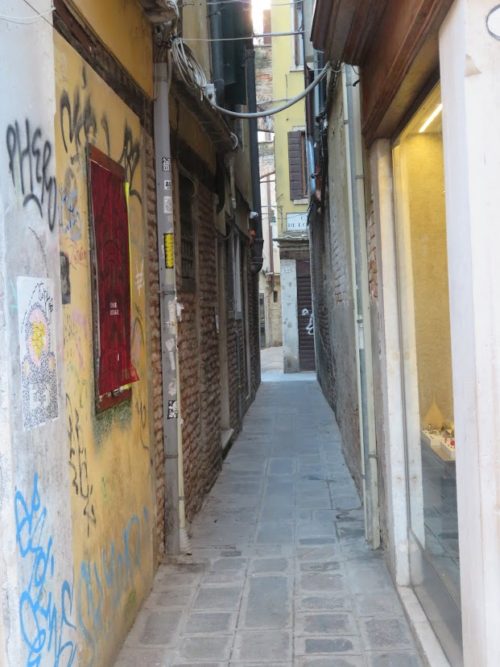
I had an interesting dream last night, set in Venice; nothing particular happened but I did awaken with this thought: It’s not the canals that make Venice so particular (special, different, beautiful, strange, etc.), it’s the corners.
Why is that? Because there are so incredibly many of them, and when you turn one, or two, or more, you either move ahead or you somehow find yourself pretty much back where you started.
That’s my new metaphor for Venice. As far as I can tell, after the enormous difficulties and turmoil caused by two years of Covid, somehow it seems that we’re back where we started. You might think that could be a good thing (“Back to normal!”) except that it’s not (“Back to normal!”). Things keep happening, but almost nothing really changes. Names change occasionally, but the headlines seem to be set on “replay.”
There are now fewer than 50,000 Venetians living in the historic center of Venice. (In 2021, there were 50,434). This is a threshold many people dreaded crossing, but it has been crossed nonetheless. I have no idea what this means in real life, because supermarkets continue to open. Who are their customers?
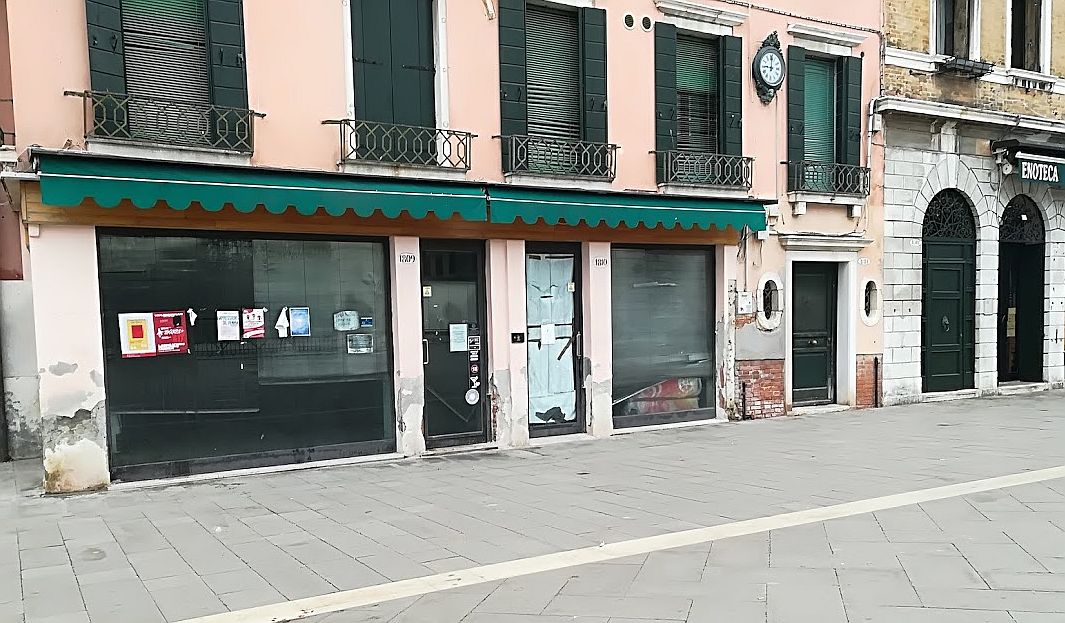
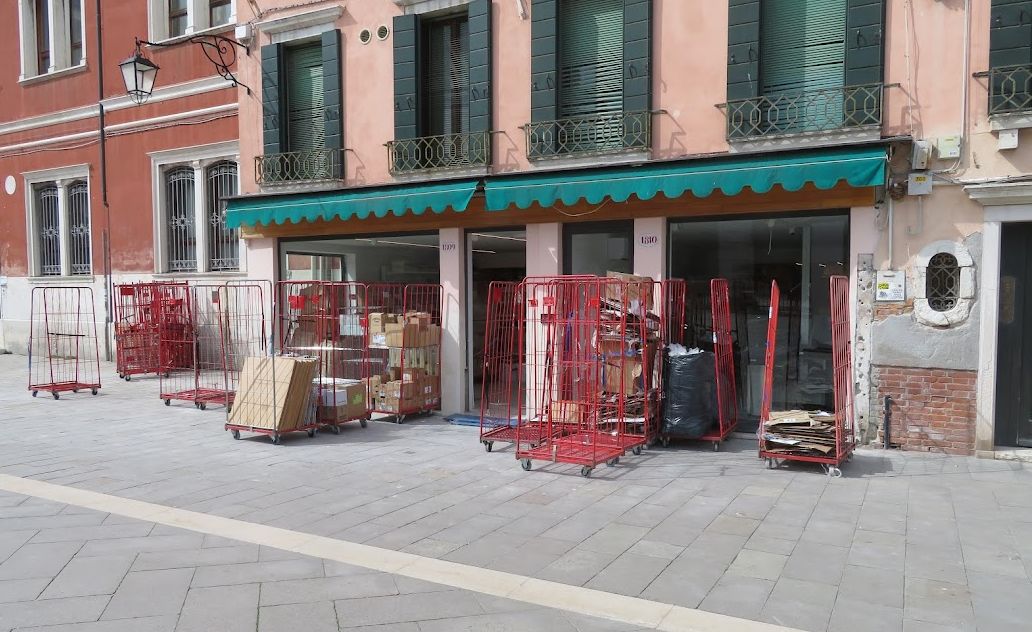
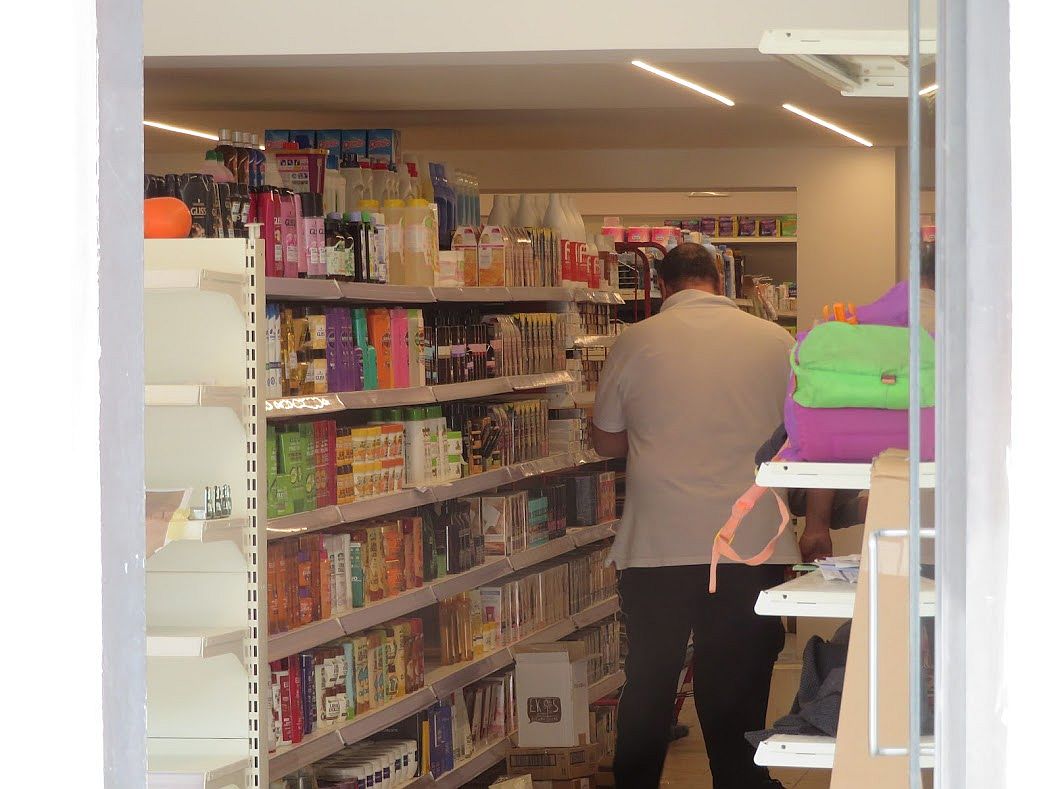
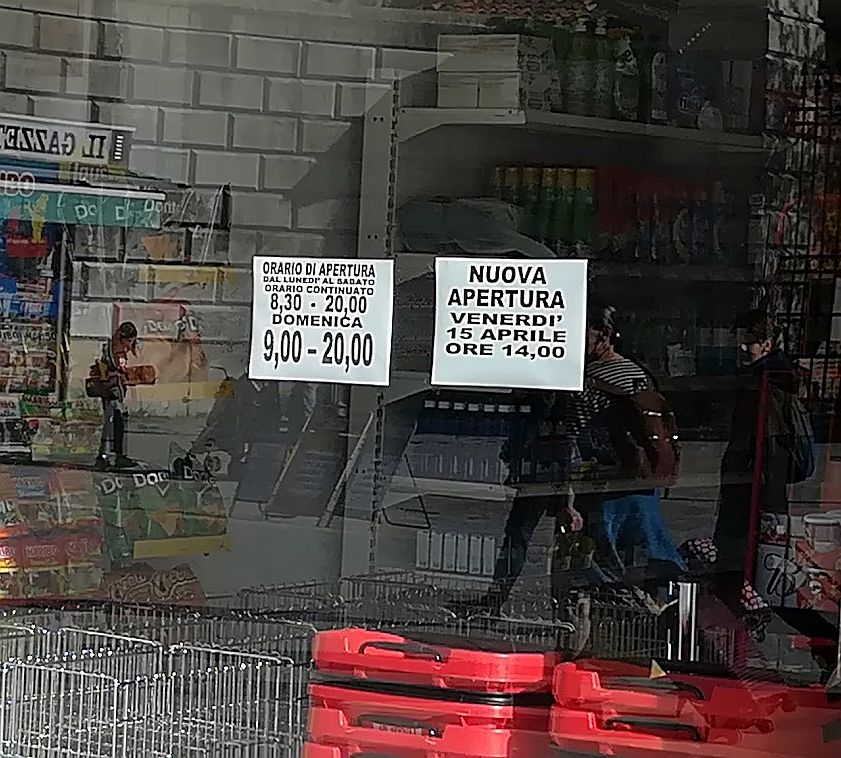

When the mayor uses the term “Venice,” he is referring to the general metropolitan entity, the preponderance of which is on the mainland. Everybody knows he really only cares about the mainland: “The future of Venice,” he said openly, “is Mestre.” Take that, Venice-lovers! The future of Milwaukee may well be Sheboygan, but to someone who thinks of the Piazza San Marco when he/she hears “Venice,” Mestre is a bit much. Still, this is how it’s going. Eight of the ten city councilors are from the mainland. The ninth is in Venice itself, the tenth lives on the Lido. And of course the mayor too is from the mainland, where he has business interests. So voices speaking up for the dwindling historic center are faint and few.
Meanwhile, daily life is made up of stores closing, stores opening. Unpredictable transit strikes and all-too-predictable wailing by ACTV, we have no money we have no money. Tourists: We want them, but they’re making us crazy. The sudden drought of Russian tourists has torn a new hole in the city’s financial fabric.
Cruises: Big ships are banished from the Bacino of San Marco. The cruise ships will enter the lagoon at Malamocco, toiling like container ships up to the raggedy docks in the commercial port zone of Marghera.
The MSC “Sinfonia” opened the season by docking at Marghera on April 9, the first of the 200 cruises scheduled for this year. Sound good? Not when you compare it to the 565 cruises that stopped (or started) in Venice in 2019. But those days are gone.
MOSE: There will never be anything new to say about this. Work stopped, problems found, money gone, problems found, money arrives, work starts again, problems found, date of completion always on the horizon.
The thing is that headlines blurt out news that any Venetian already knew years ago. Example: Barnacles. Lino mentioned the inevitability of barnacle encrustation to me back in 1994. It would be impossible to astonish anybody who has kept a boat in the water here. This is as much a fact as that water is wet.
Still, somebody finally noticed the problem. In 2018, an article announced the discovery by an underwater drone that the MOSE barriers were rusting and encrusted with barnacles. Time passes, nothing is done. In 2022, another headline: Barnacles!! Or to be even more precise: Mussels.
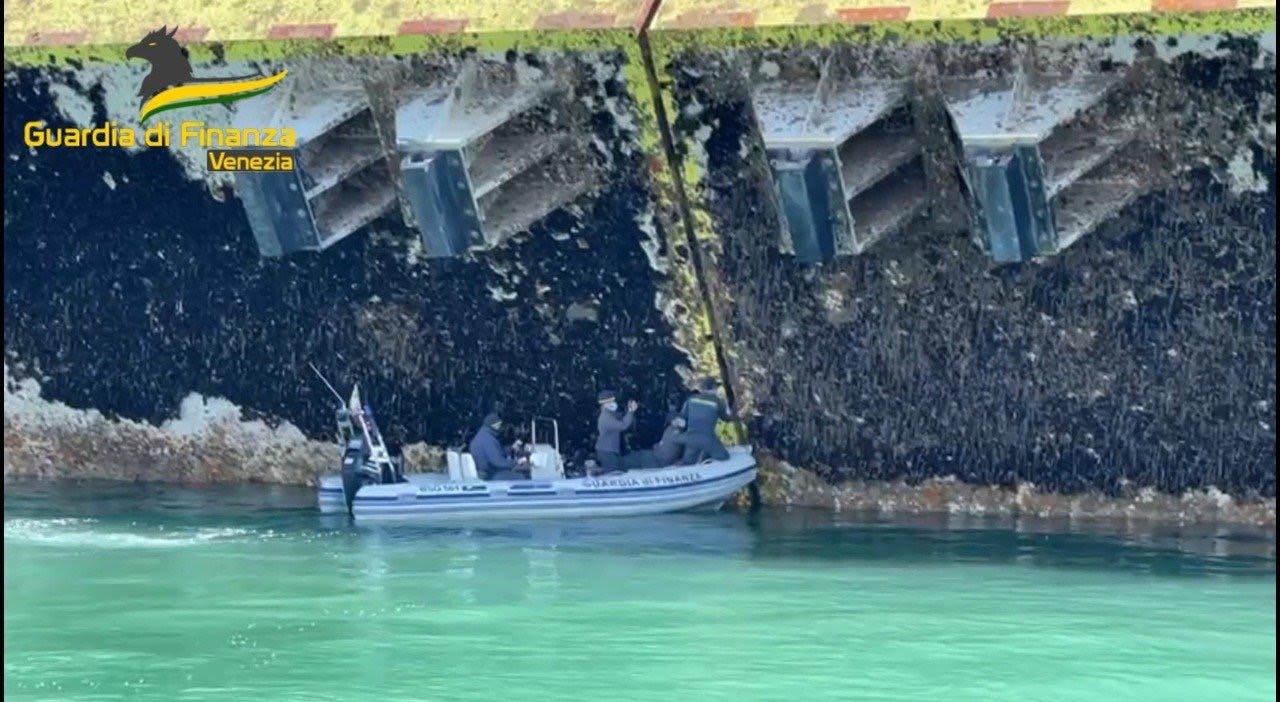
Turns out that the gates that have been lying in their assigned position underwater awaiting the call to block the tide have not been receiving the required and agreed-upon maintenance. The money for maintenance was allotted some time back, but it seems to have not been spent on maintenance. If the crud was predictable, so was the fate of the maintenance money.
Years ago, the cost of annual maintenance was forecast to be some 15 million euros. Then estimates of maintenance costs rose to 80 million euros, and now they’re projected to be 200 million euros per year. Where do these numbers come from? Are they breeding in dark corners, like wire hangers? In any case, vast amounts of money can’t ever sit still long enough to be spent on what they’re supposed to be spent on. When you actually need the money, somehow it’s just not there anymore.
There’s no need to read headlines, this has been going on for generations now. The big hold-back-the-tide project began in 1973, when the Special Law for Venice allotted money for a competition for designs (held in 1975). When the first stone was laid in 2003, the end was promised for 2010. We were all so young, so innocent… Then the 2014 deadline came and went, then the middle of 2018, then the beginning of 2019. The “acqua granda” of November 2019 broke several financial logjams, and work picked up with the promise of concluding in 2021. Sorry, I meant 2023. Endless years pass of “We’ll get there! Give us more money!” Lack of funds closed the works for the entire year of 2021. Rome sends millions, then more millions. And yet, somehow there is never enough.
Tourism: They’re baaaaack. Intermittently, and more often on weekends, still more often just during the day. There were a few Carnival crush-fests in the San Marco area, but nothing noteworthy. I suppose it just wouldn’t be Venice without 100,000 or more visitors in a day. And just now, on the cusp of the Easter weekend, we are back under siege again.
This is supposed to be good (even as we see the interminable lines at the vaporetto stops for boats to Murano and Burano). Venice has got to get back in the game, seeing as it’s the only game there is.
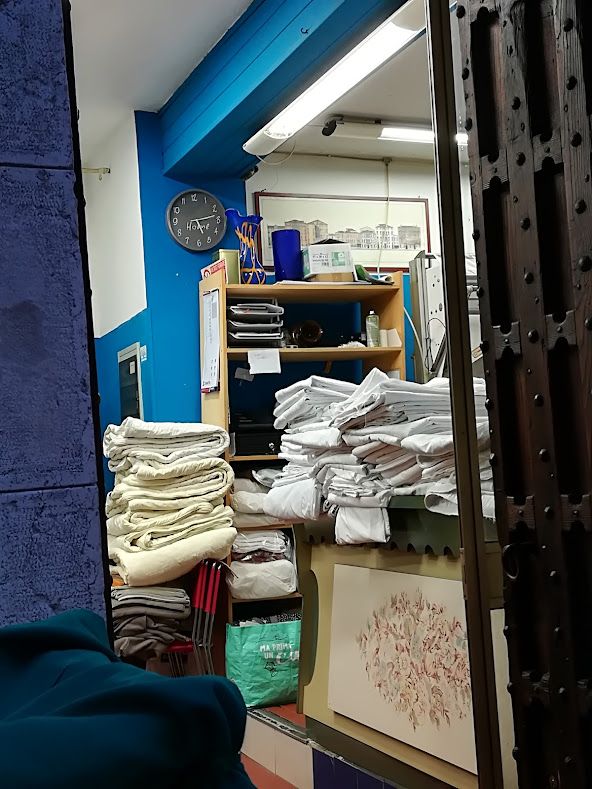
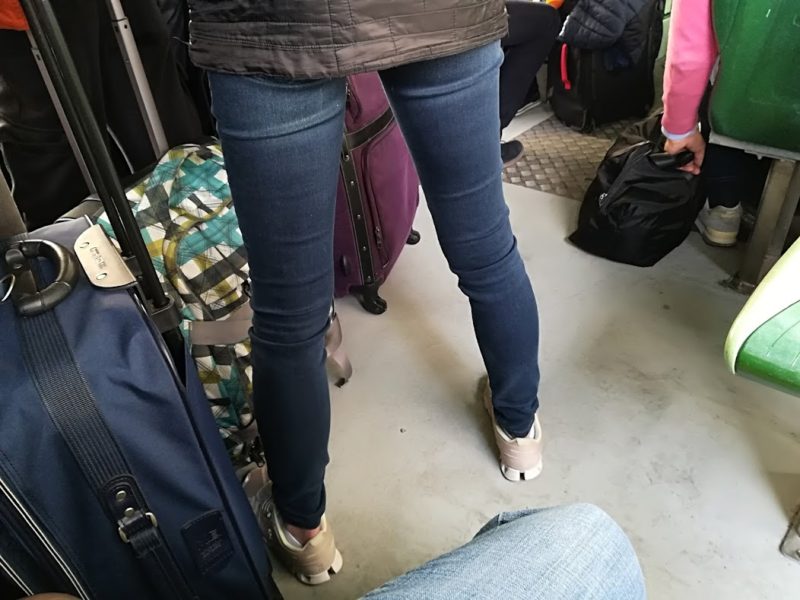
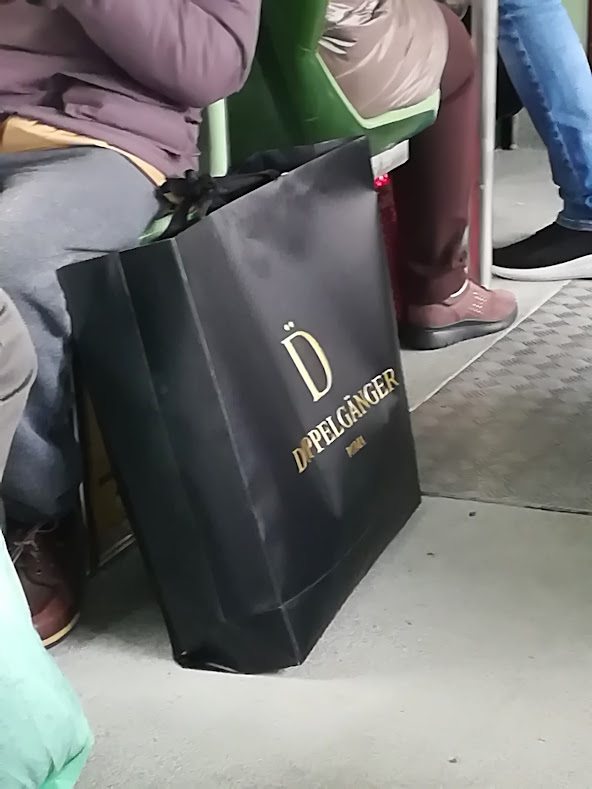
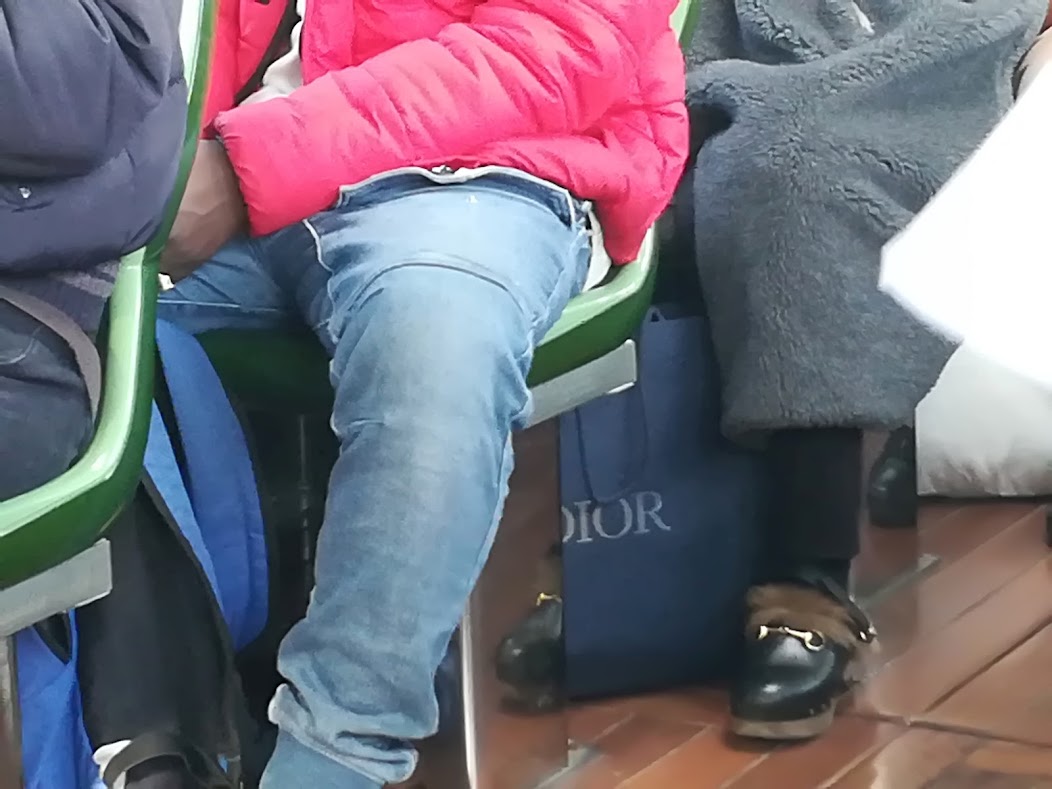
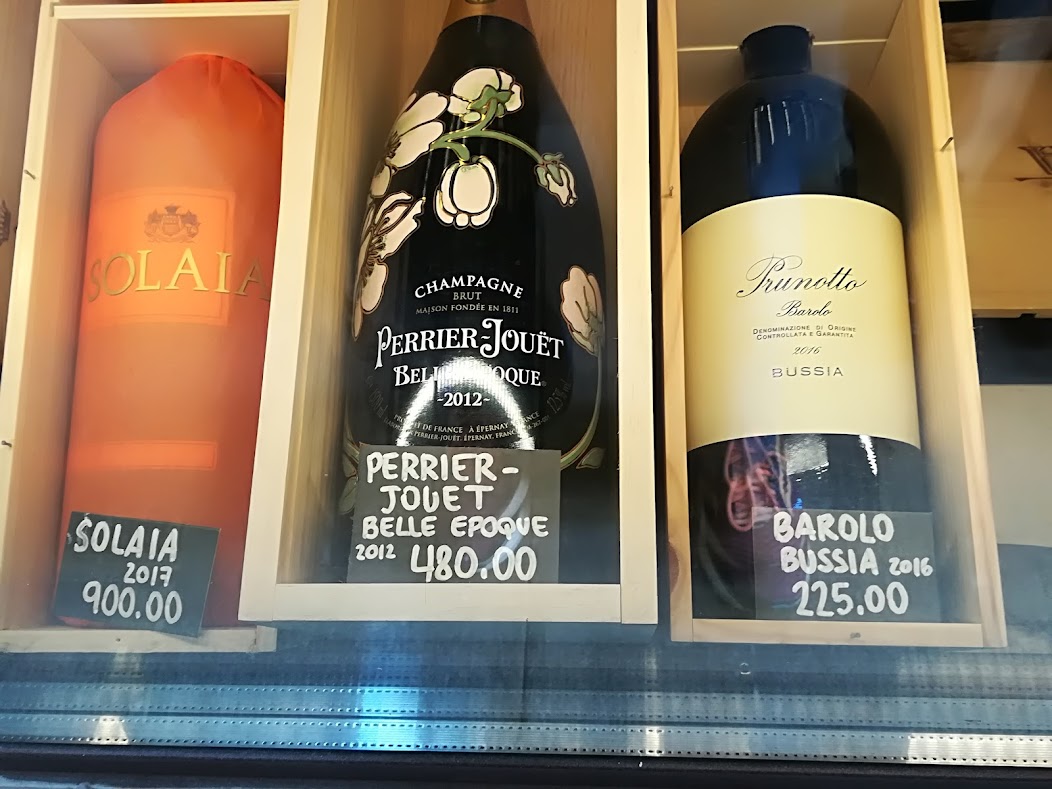
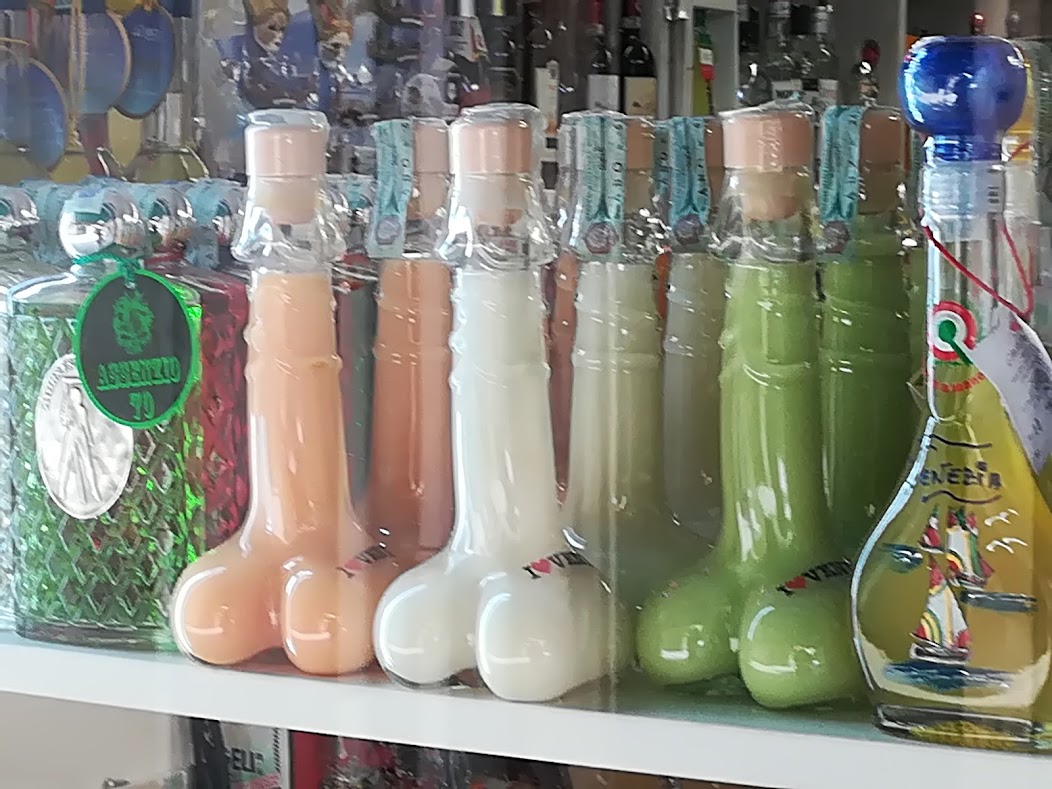
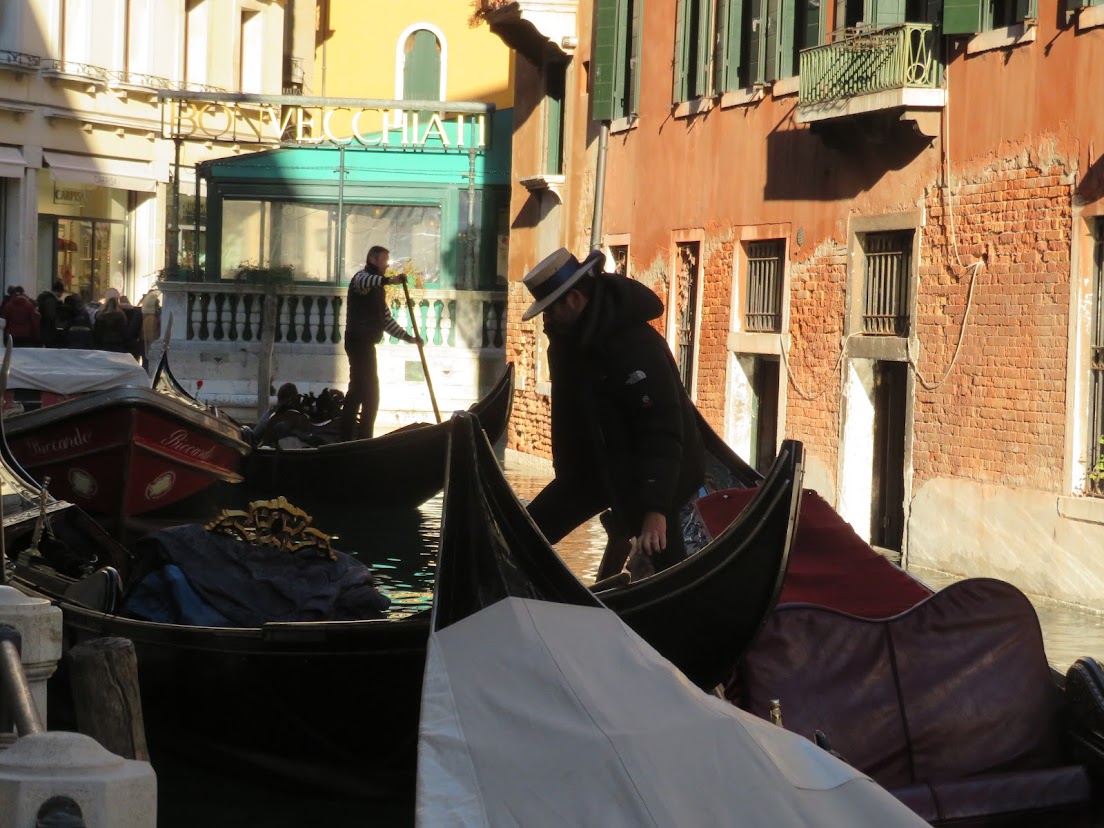
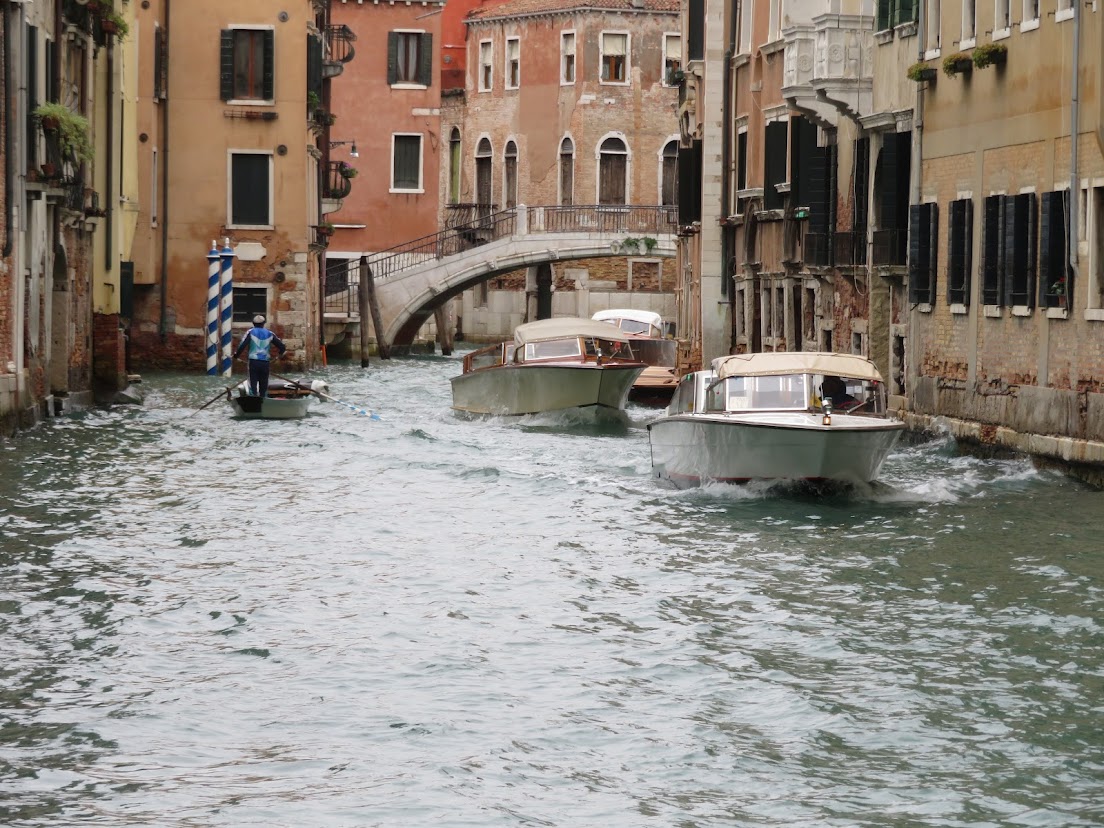
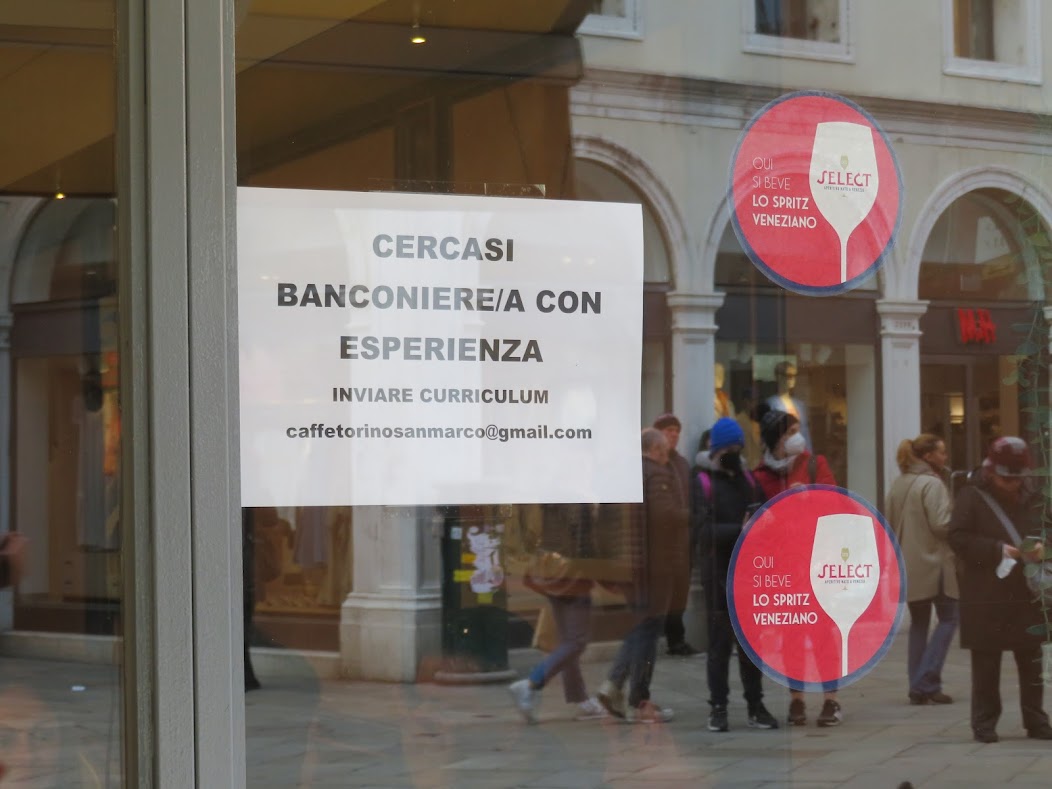
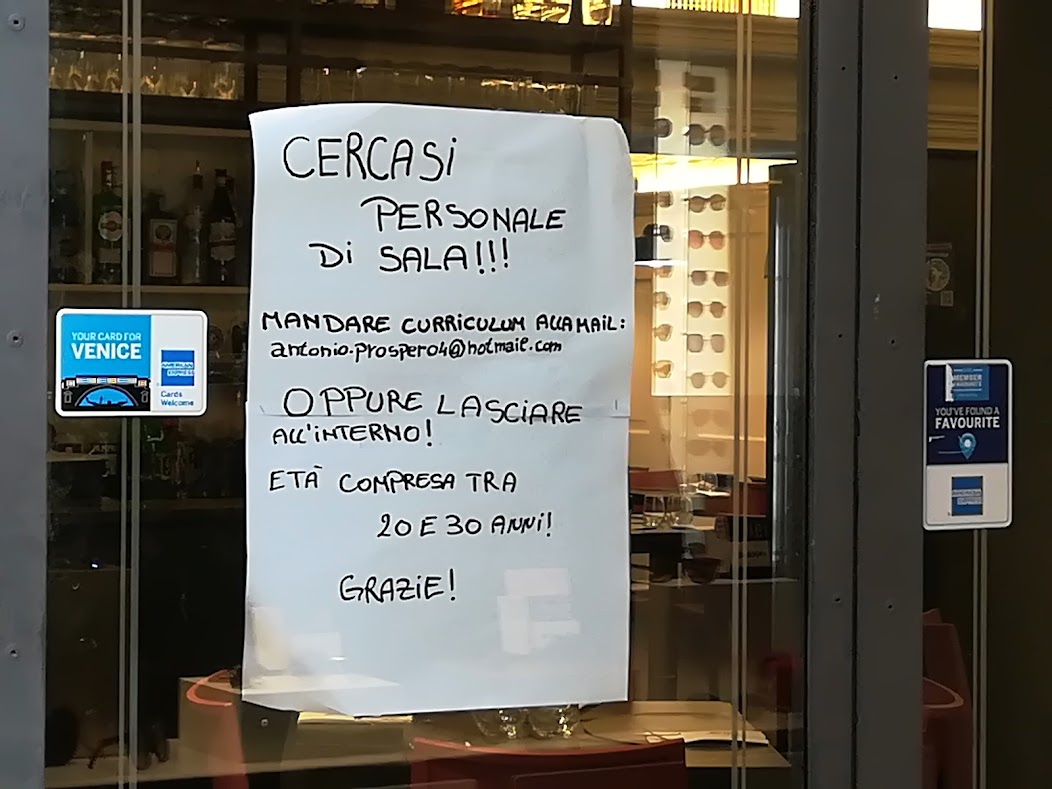
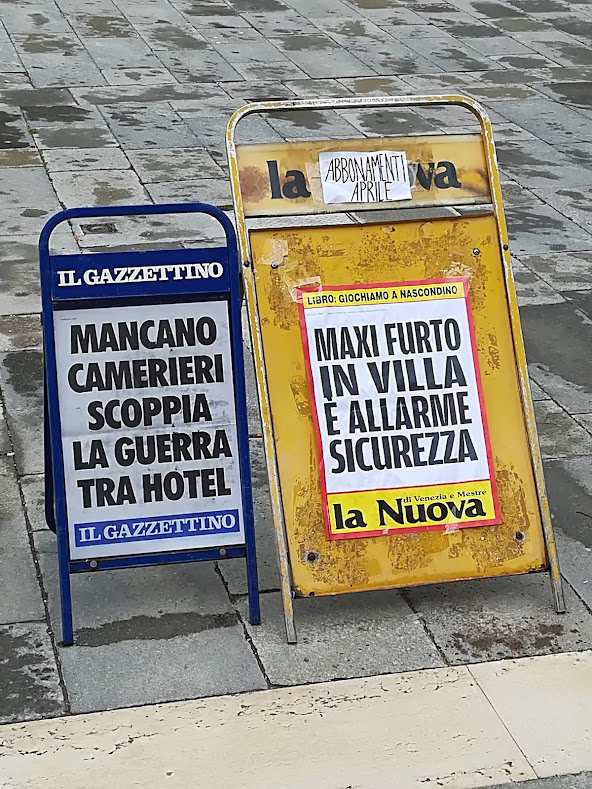
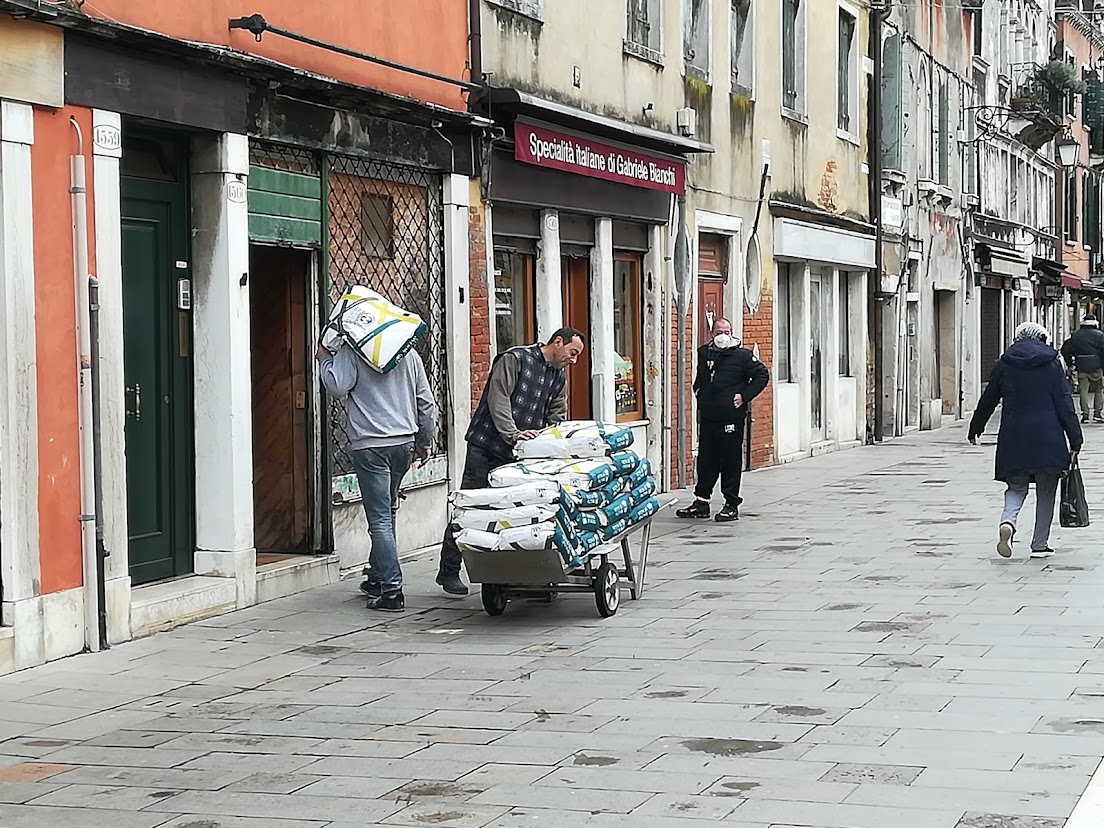
Last year sometime there was a brief quiver of excitement over the resurrected idea of installing turnstiles to control the flow of tourists entering the city at certain points. That idea has been mothballed. I think we don’t want to slow them down. The eternal subject of the selling a ticket to enter Venice has also been put aside. But these ideas will be back. They’re like the swallows going to Capistrano.
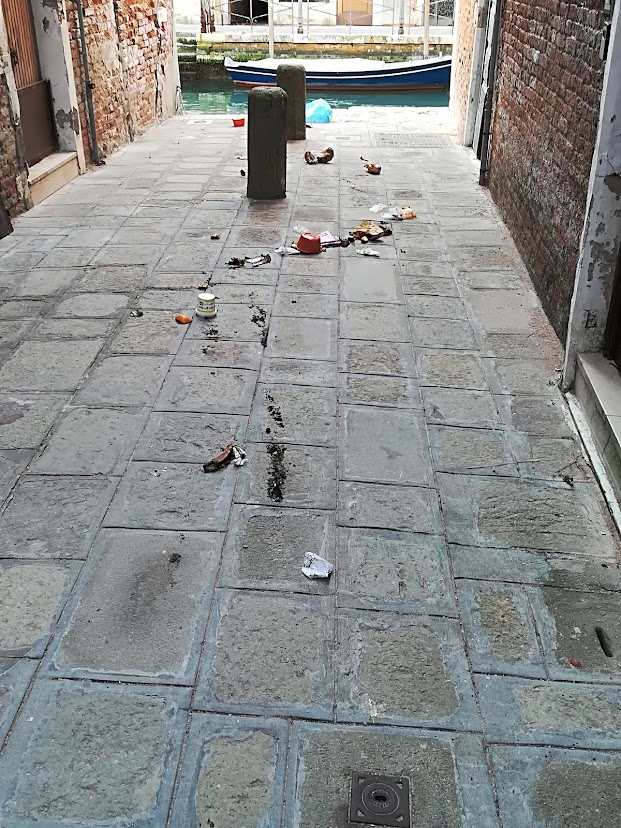
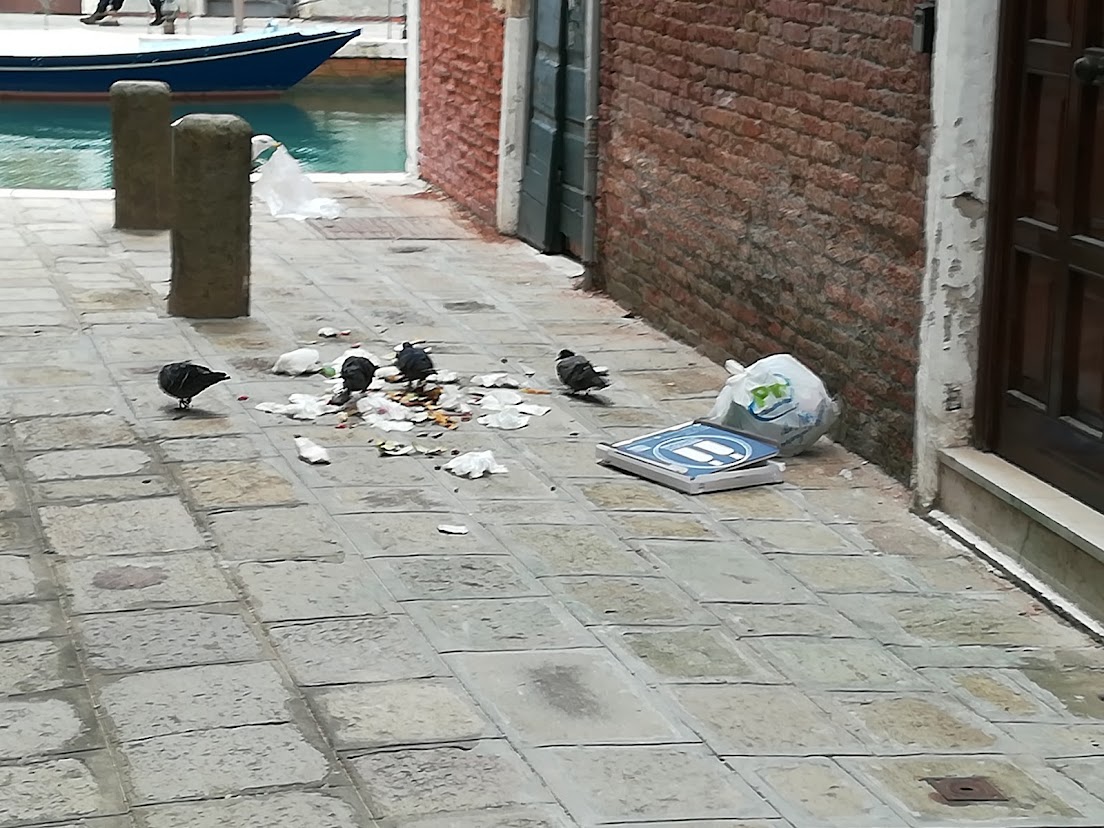

Biennale: Yes, it is opening this year — April 23 to November 27 — and the vibrations are palpable. The small park on the Riva dei Sette Martiri tends to host more light-hearted works. I’ll just call them “works,” because I can’t bring myself to say “art.” I honestly don’t know what they are.
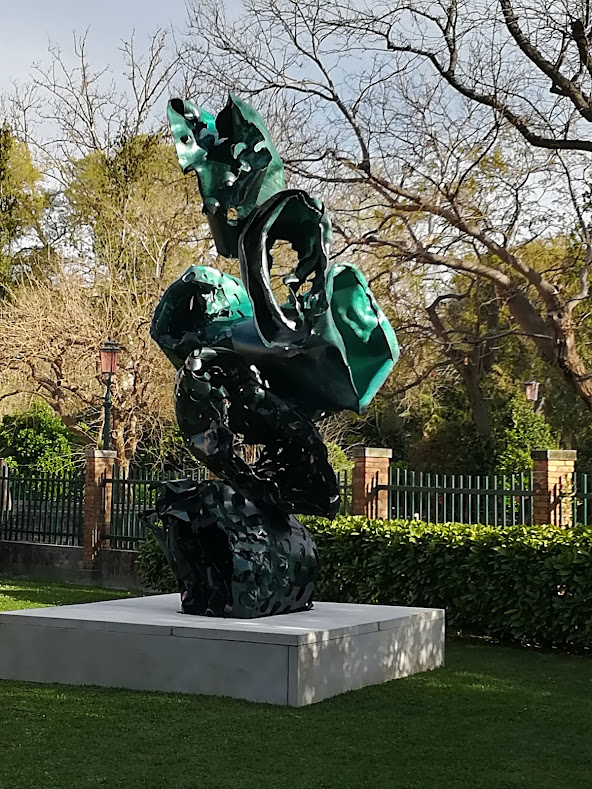
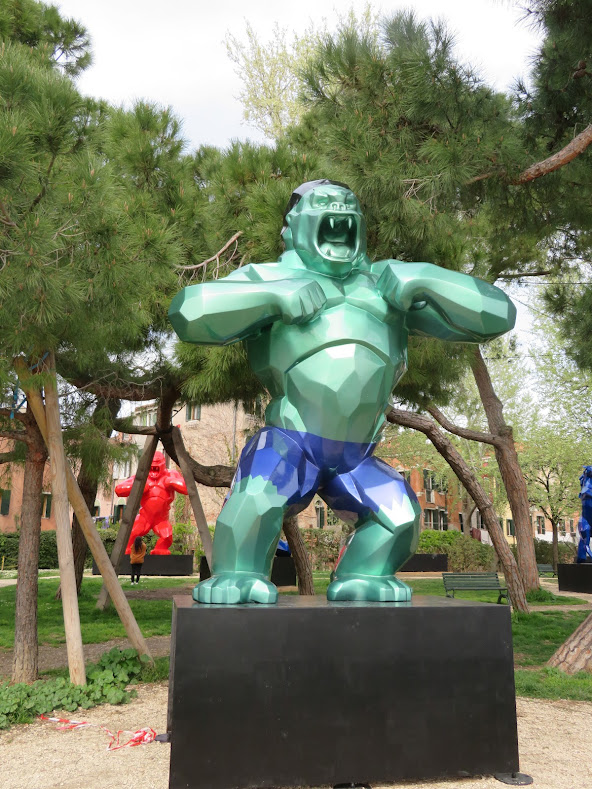
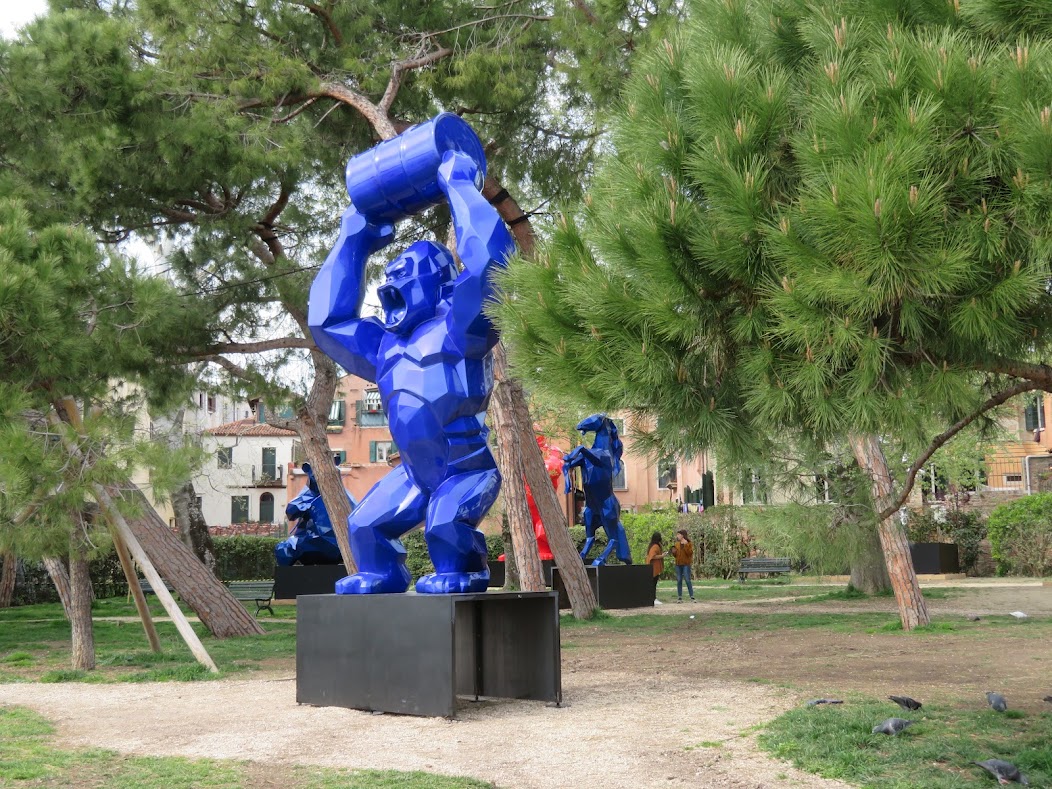
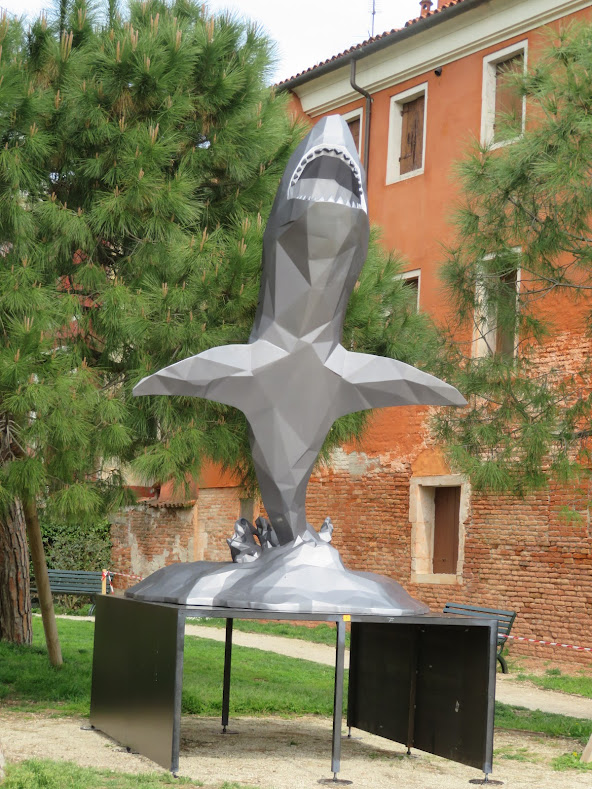
So here we are, caught in the endless cycle of everything. Maybe there will be something new around the next corner (or ten), but I’m not counting on it.
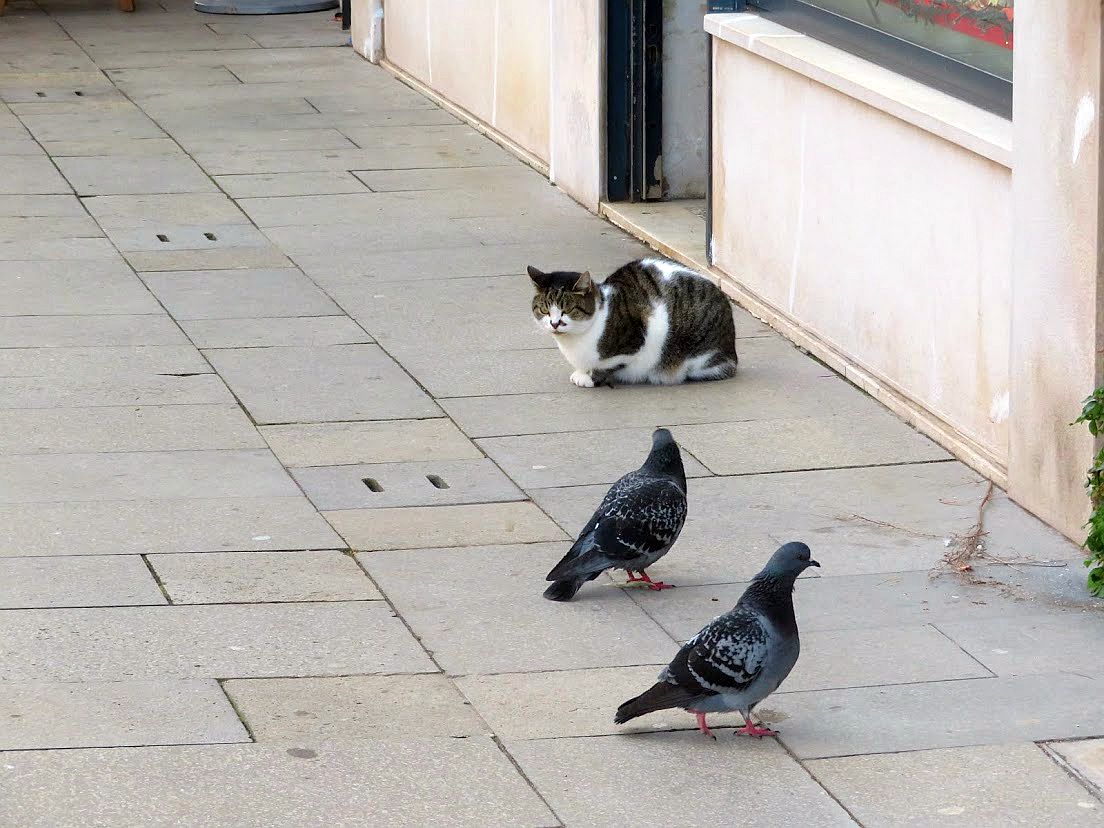
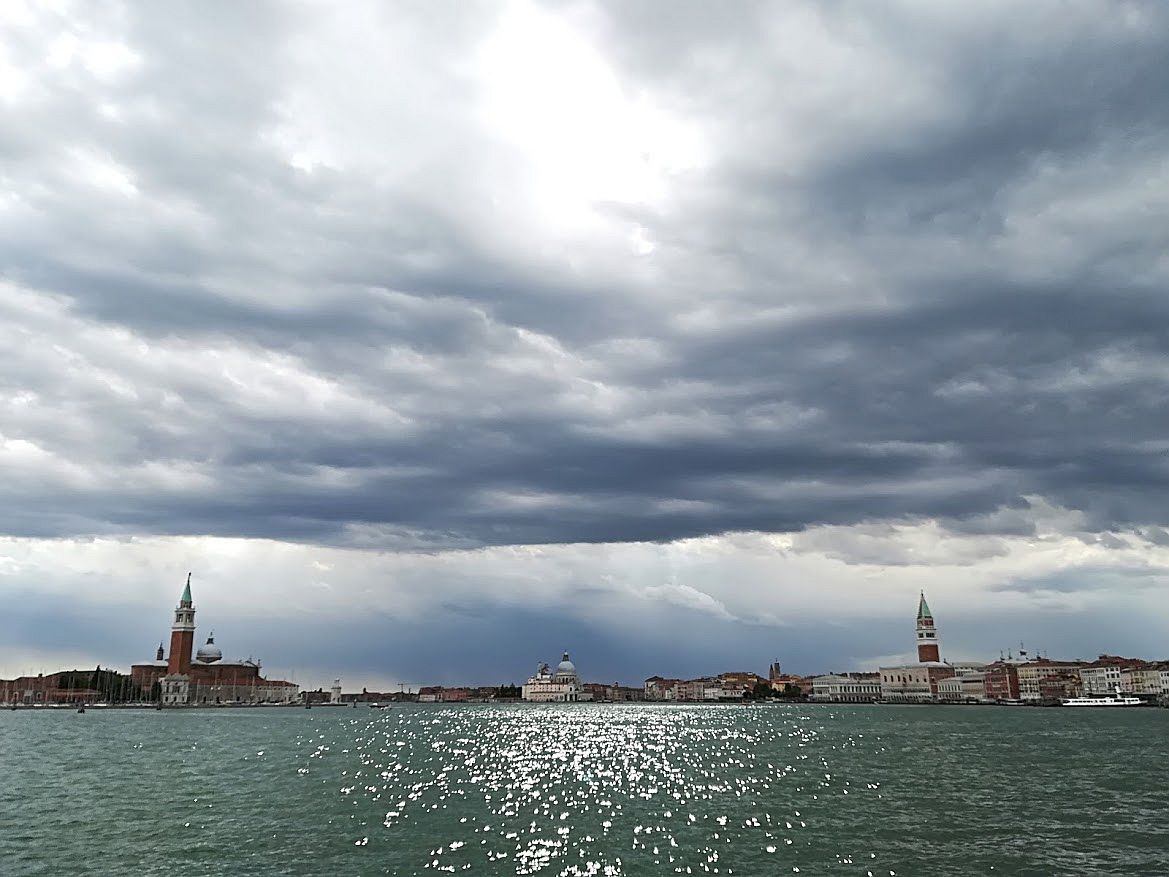
Now that the G20 has come and gone, the surface of life that was so agitated thereby has returned to its normal level of agitation. There are plenty of things to keep track of, to one degree or another. In some cases, to many degrees.
Here are a few of them:
REDENTORE: The annual feast of the Most Holy Redeemer is tonight and Sunday — the big waterborne festivities on Saturday, the races and big religious celebration on Sunday. Last year there were no fireworks, which left a huge hole in the festivities. This year there will be fireworks, but in a serious effort to prevent the hazardous clumping-together of crowds the city has imposed a limit of 18,000 people, total, and those persons have to have made a reservation. To reach the place or area they’ve booked, they have to show their printed ticket as well as their “Green Pass,” or other certificate of vaccination, OR a document that confirms that their swab was negative within the 48 preceding hours.

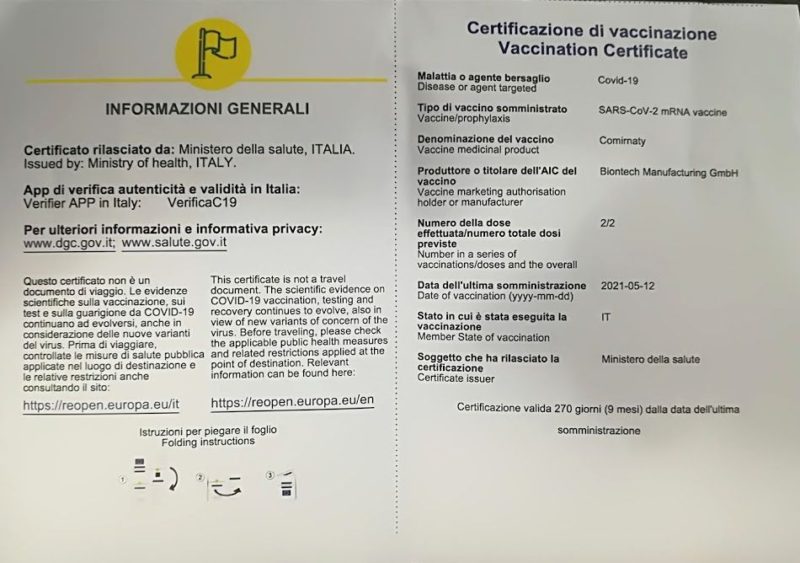
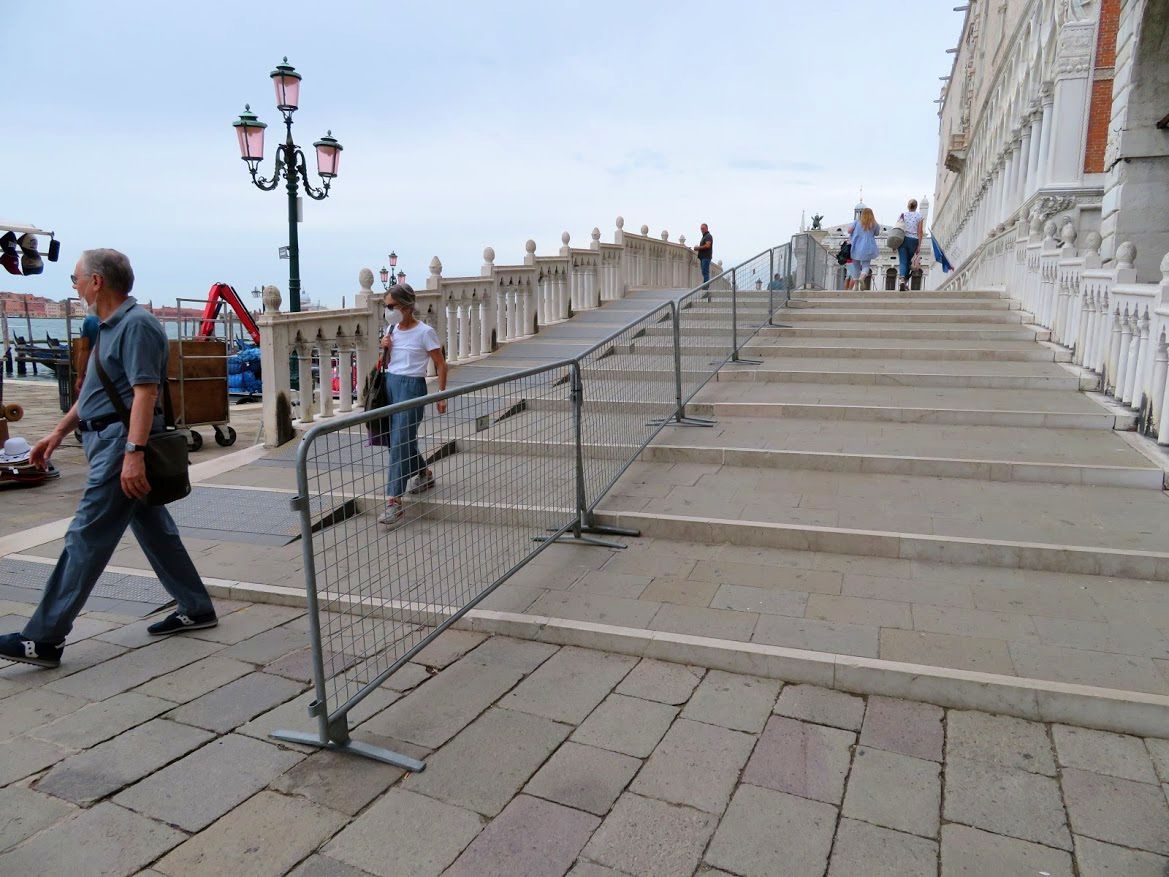
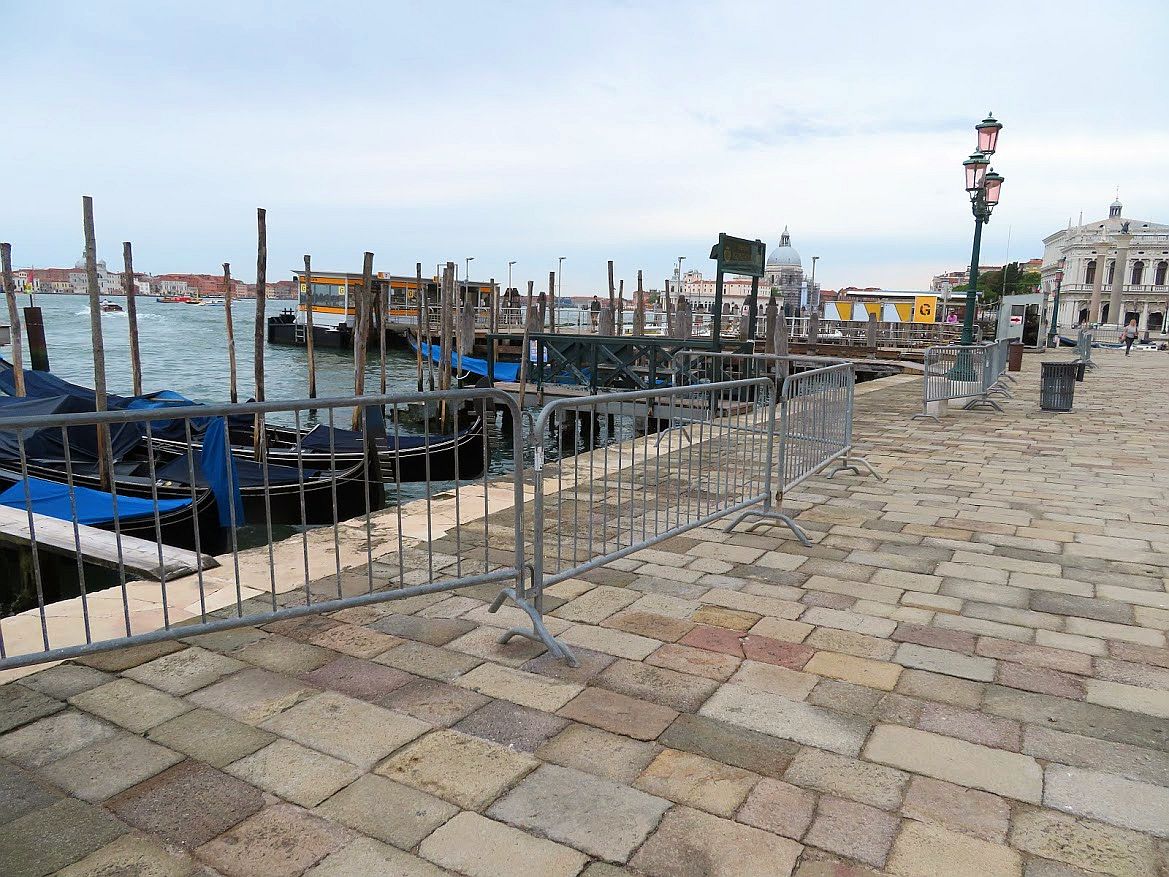
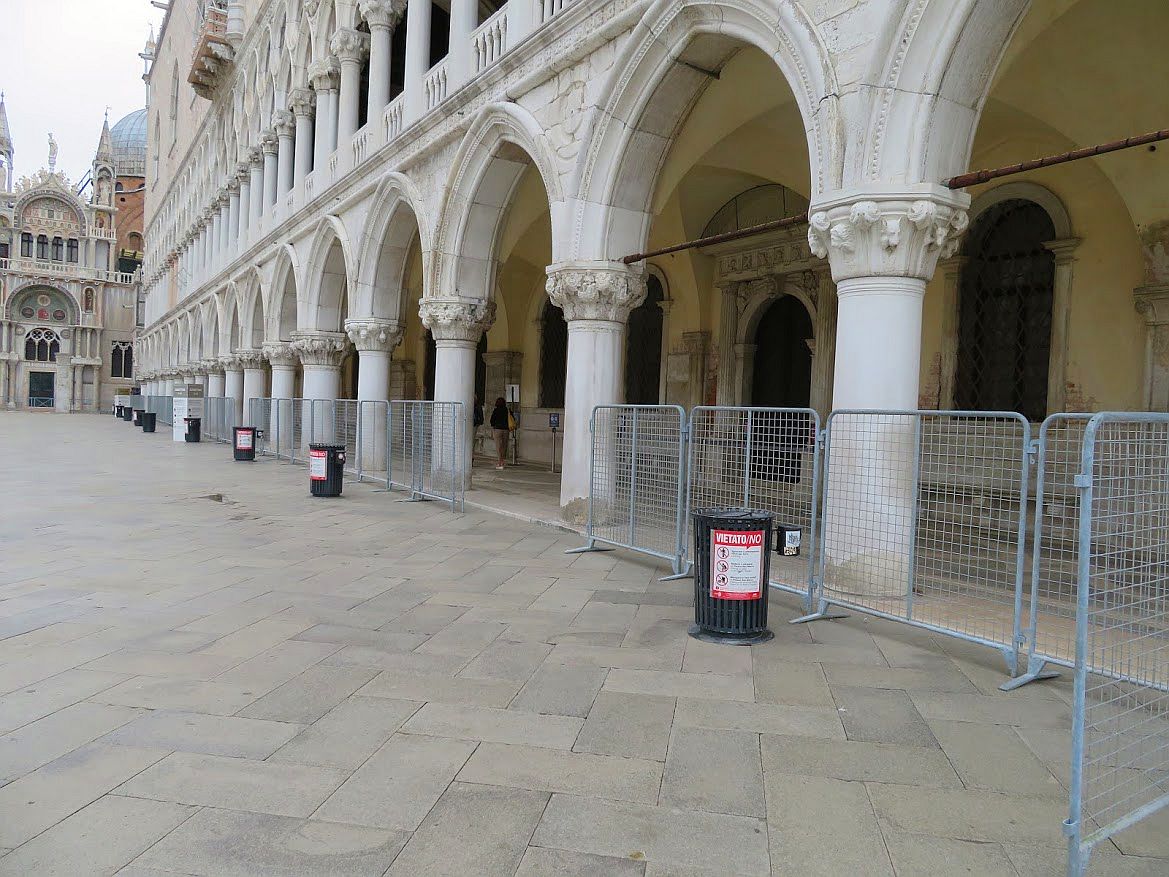
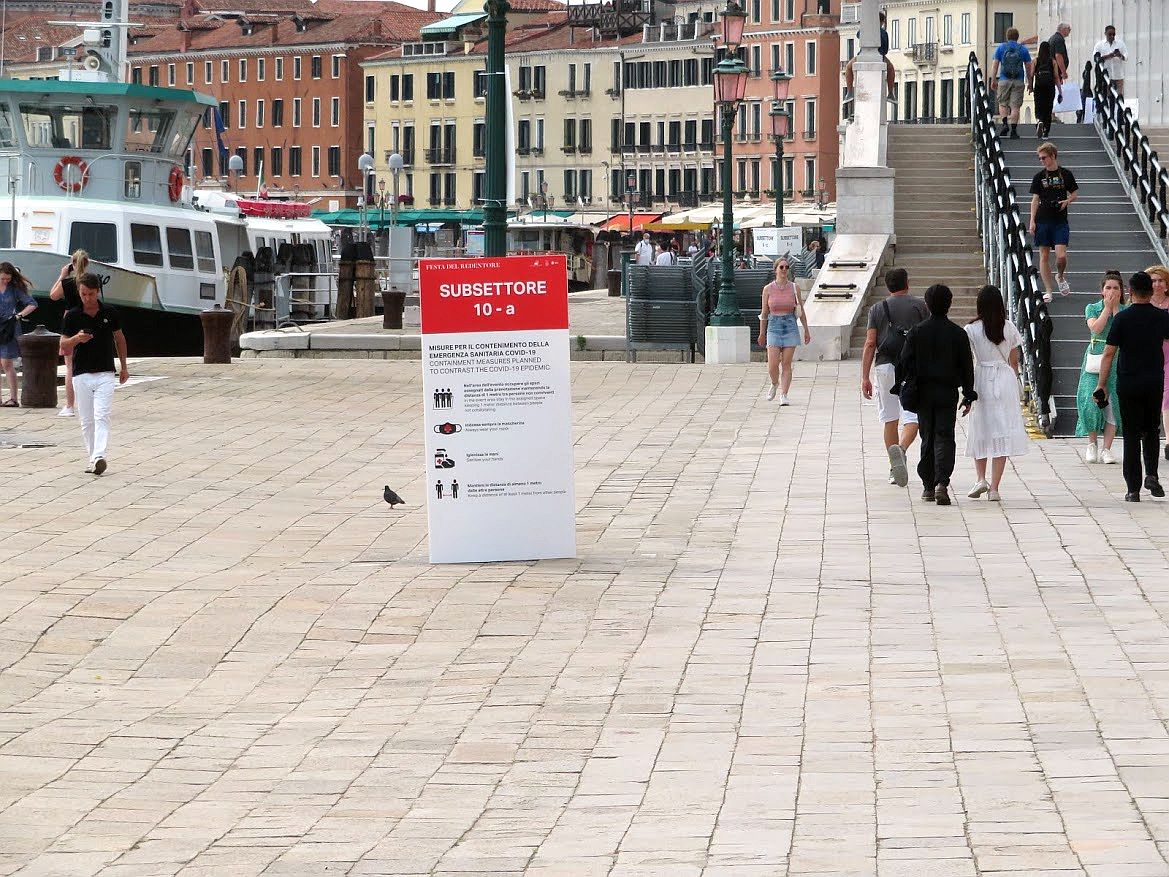
Boats obviously won’t be permitted to tie up to each other: social distancing afloat. No trying to pass from boat to boat. No dancing parties aboard (take that, you big floating discotheques). The watery areas are delimited according to size and the use of boat, and you have to show a printed “ticket” from your booking (on water as on land) to be permitted to enter the area. Once your boat has entered its appointed area, it is forbidden to exit, nor will it be permitted to put people ashore. Boat captains have to keep a complete list of passengers for 14 days. Also, wear your mask.
There are regulations for people booking space along the fondamentas to watch the fireworks, or to scarf their dinner, but I’m not going to go into all that. If you’ve booked a space, you already have the rules. If you haven’t booked, you’d better hop to. Preference is being given to Venetians, it says here.
Lino and I will not be there; it’s been years since we decided we couldn’t stand the mayhem of the motorboats in the dark, with their drunk drivers. We might walk up to the fondamenta dei Sette Martiri (where I didn’t see any signs of assigned places) if it’s not too crazy.
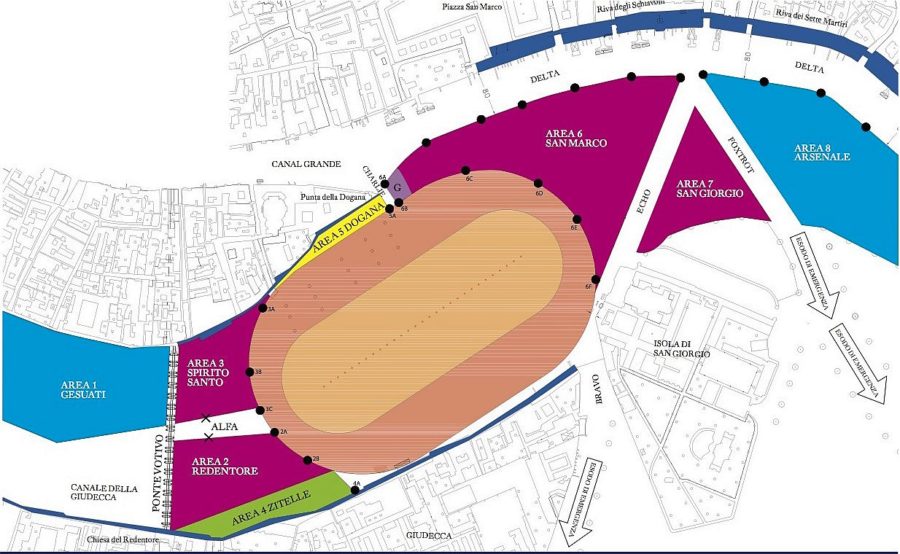
THE BIG SHIPS: Ship-haters rejoice: As of August 1, the biggest ships will no longer be permitted to pass through the city. These ships are defined as having at least one of the following characteristics: Gross tonnage above 25,000 tons; hull at the waterline longer than 180 meters; height of ship more than 35 meters, excluding ships that are motor- and sail-driven; use of fuel in maneuvering that has a percentage of sulfur equal or superior to 0.1 per cent. Like any other cargo vessel, the big cruise ships will be routed from Malamocco to Porto Marghera, one of many solutions that have been discussed since dinosaurs roamed the earth. But this is just a stopgap. The real solution is the offshore port, and that’s not happening tomorrow.
Seeing that neither Porto Marghera nor anywhere else will be ready this year, the MSC Orchestra or Magnifica and Costa Deliziosa (the only big ships on the dance card this summer) will be departing, respectively, from Monfalcone and Trieste, up along the northern Adriatic coast. Passengers arriving in Venice will be swabbed or otherwise health-checked at the Venice Maritime area, then loaded on buses and driven a few hours to their ships. So much for the thrill of cruising from Venice.
The offshore port project is going to take some time. Phase One, send in your proposals by December 31, 2021. Make sure your design can accommodate modern container ships as well as the biggest cruise ships, and make sure the port will be safe in stormy seas because there won’t be any lagoon to protect you anymore. Phase Two, five experts evaluate the proposals. Phase Three, choose the winner. That decision will be made by June 30, 2023, if all goes as planned. That’s a pretty big “if,” I feel compelled to add.
Seeing that creating the offshore port will take at least five to six years, Porto Marghera will have to be modified fairly quickly. Building the new passenger terminal there, deepening the channels and revising the current industrial docks will cost 157 million euros — a hefty sum for a temporary set-up. Then again, “temporary” has a flexible meaning here. The Accademia Bridge was built in 37 days in 1933 as a temporary structure while proposals for the real bridge were to be evaluated, and it’s still there.
I have the impression that the sudden decision on dealing with the big ships is linked somehow to the fact that UNESCO recently decided to designate the water entrance to Venice — Bacino of San Marco, Canale of San Marco and the Giudecca Canal a national monument. This is surprising in that UNESCO, when it listed Venice as a World Heritage Site in 1987, specifically included the lagoon. You wouldn’t know that by the savaging of the environment that has gone on since then, but anyway, I’d have considered the Bacino, etc. as part of the lagoon. Now it’s a national monument. Okay then.
Spare a thought, though, for the humans — 1,260 direct workers and 4,000 indirect workers — involved in what will be a radical restructuring of the whole shipping enterprise here. Many are fearing for their jobs.
Almost no workers believed that this decree would come so fast, and right in the middle of the season. The maritime agencies are also worried. Every shipping company is required by law to engage a maritime agency, but, says Michele Gallo, head of two agencies, “You can’t even think of having the same ships as before coming to the docks at Porto Marghera, using the same places as the commercial ships. This is a devastating decree.” Organizing the entry, passage and departure of so many ships through the inlet at Malamocco and along the Petroleum Canal (Canale dei Petroli) is going to be a job worthy of an air traffic controller.
The 46-year-old Venetian businessman, well-known and loved by many, has been in prison in Sudan for three months. He is the owner of a company that produces electric transformers that has been doing business in Sudan for years. He has been accused by a Sudanese company of fraud, but the situation is an utter tangle of claims and characters. However, the photograph of the cell in which he was kept for two months with 30 other men, at temperatures of 114 degrees F., was all too comprehensible. Yes, the Italian government has attempted to intervene; yes, money has been paid, but turns out someone wants still more.
Now he is on house arrest in a Sudanese hotel, awaiting the next hearing (August 9) in the string of court appearances that may finally resolve the problem. He has already been absolved of two accusations, but it’s hard to know who wants what at this point. Of course money is at the core of this. Marco is well-known in the Venetian world of sport — Venetian rowing, for one thing, as well as rugby. As it happens, Lino has known him since he (Marco) was a boy. Also, Lino taught his mother how to row.
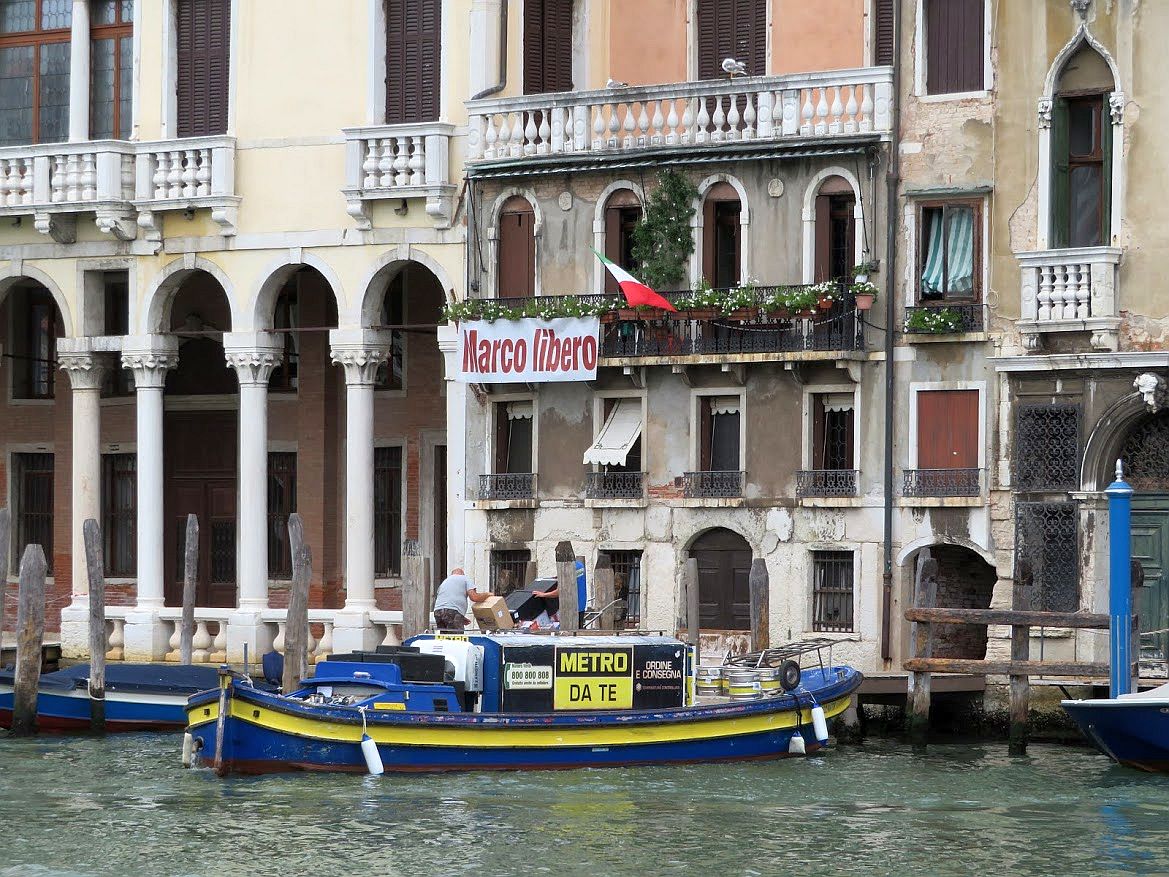
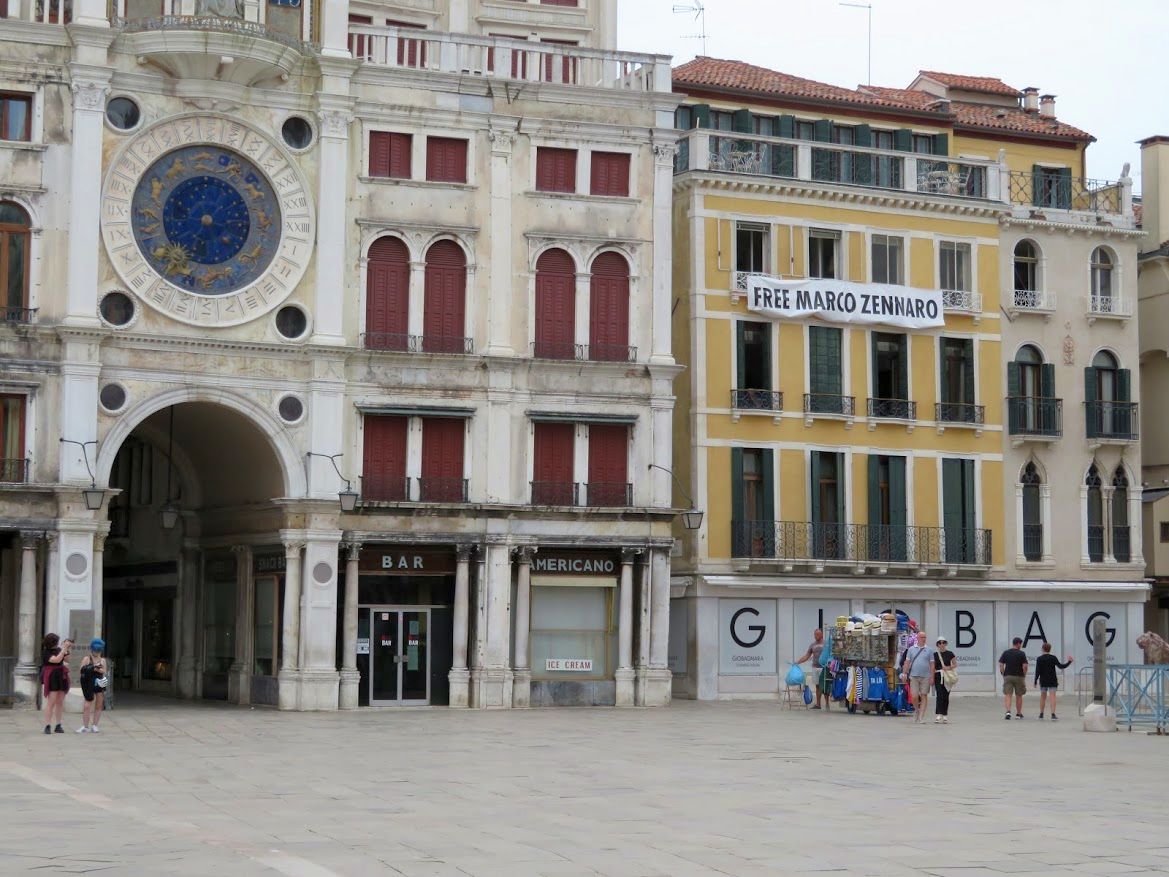
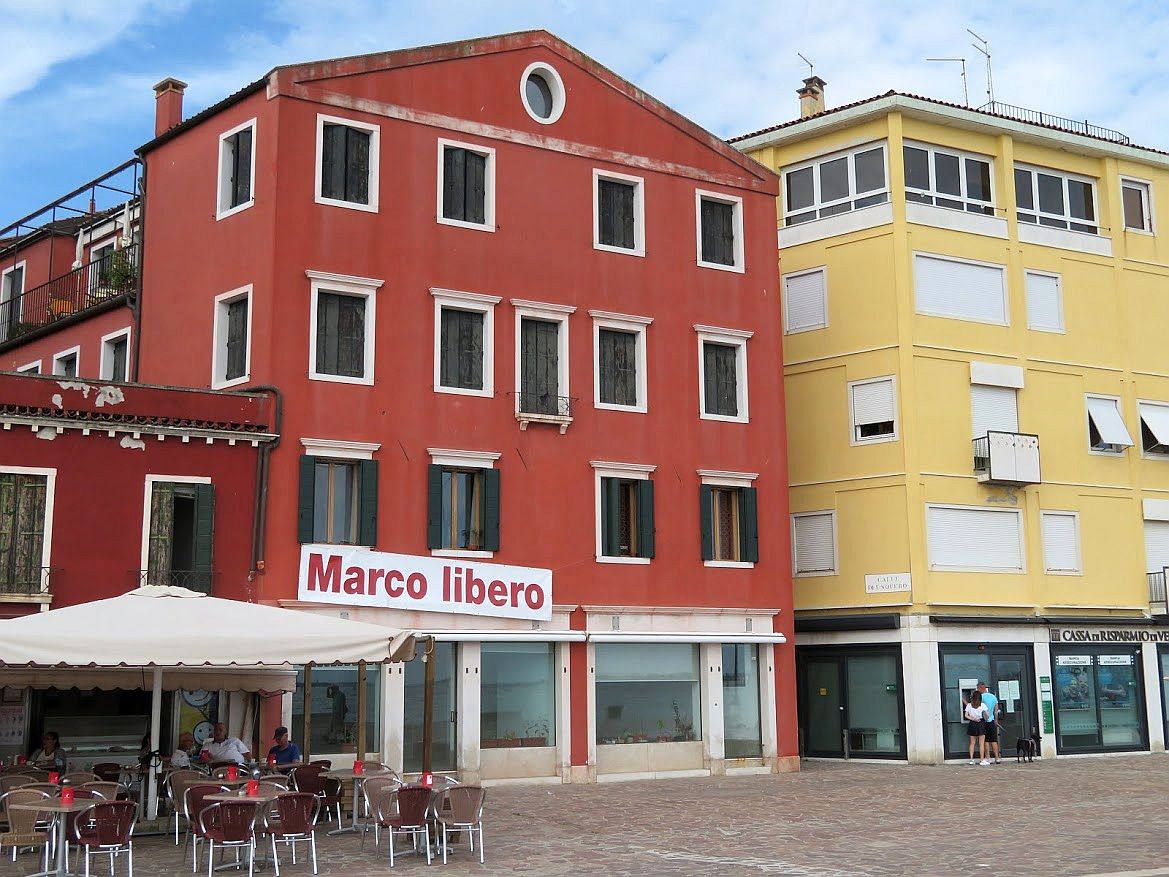
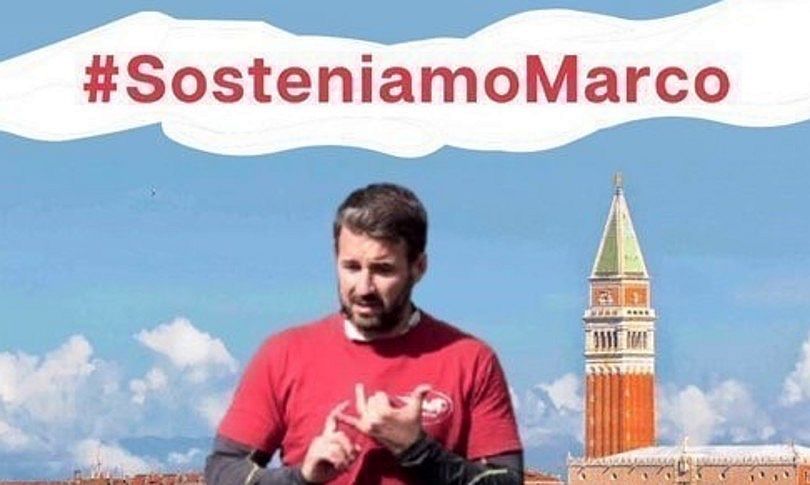
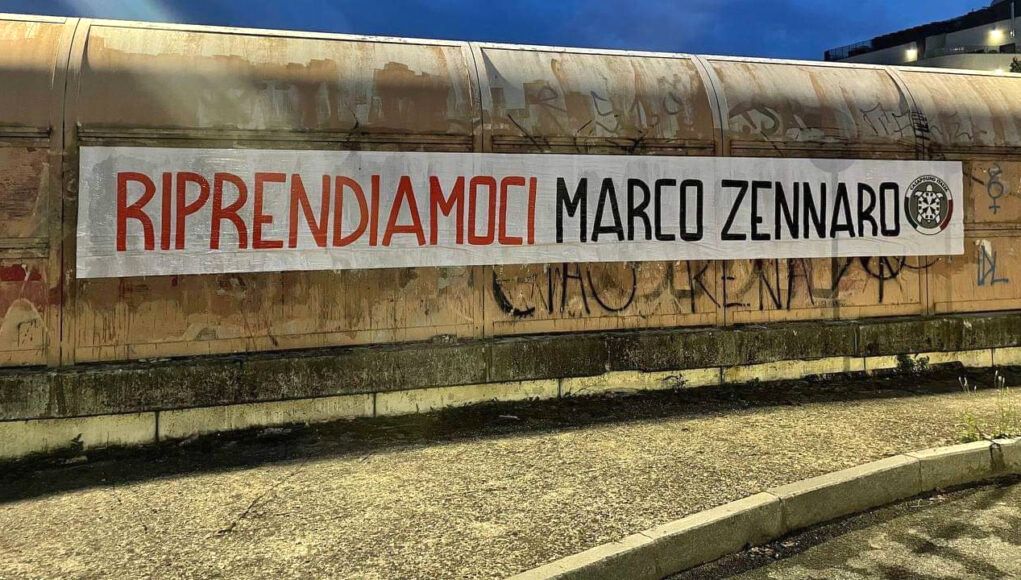
MOSE:
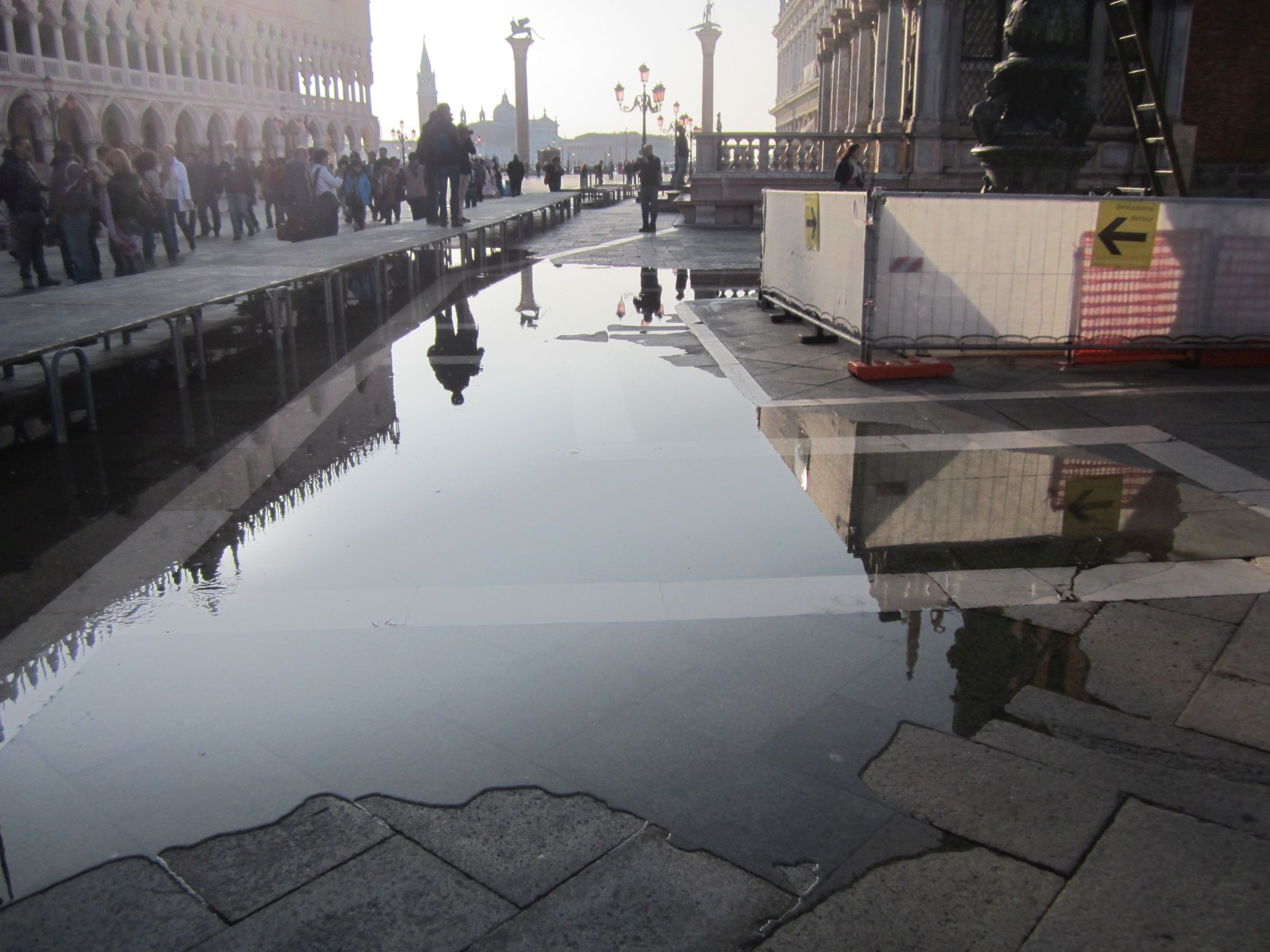
Mose worked last winter (except for one time), so you might think all is well? You would think wrong. I’m starting to dread the winter again.
The plan was to complete all the work by June 30, and declare the project finished on December 31, 2021. But that timetable is now in tatters for various reasons, primarily money problems (as always). The refusal of some suppliers to continue without payment also slowed things down, and the work was officially suspended yesterday, July 16, even though it actually had been stopped for three months already.
Without regular tests, without personnel from the companies involved, without some degree of ongoing maintenance, it’s not certain the gates will even rise when needed. Broken elements haven’t been replaced, parts are deteriorating because there is still no air conditioning in the underground gallery. There is severe corrosion that has been reported for years, to the frames of the underwater tensioners as well as the hinges of the gates. Encrustation of barnacles and other crud will certainly make the gates heavier. The gates at San Nicolo’ have been underwater for eight years now.
Bids have been solicited for a maintenance program budgeted at 64 million euros, even though some estimates maintain that at least 100 million euros will be needed for this every year. (Personal note: Lino has never batted an eye at the titanic construction costs. His refrain has always been simply “And the cost of the maintenance?”)
A Venetian deputy in Parliament, Orietta Vanin, has written to Enrico Giovannini, the Minister of Public Works, saying “A plan is missing for the launch of the work and the completion of the machinery. When is Mose going to be tested? What is the risk to the city in view of autumn? At what point are the interventions for the security of the Piazza San Marco? We’ve asked several times but have never had a response.”
TOURISM:
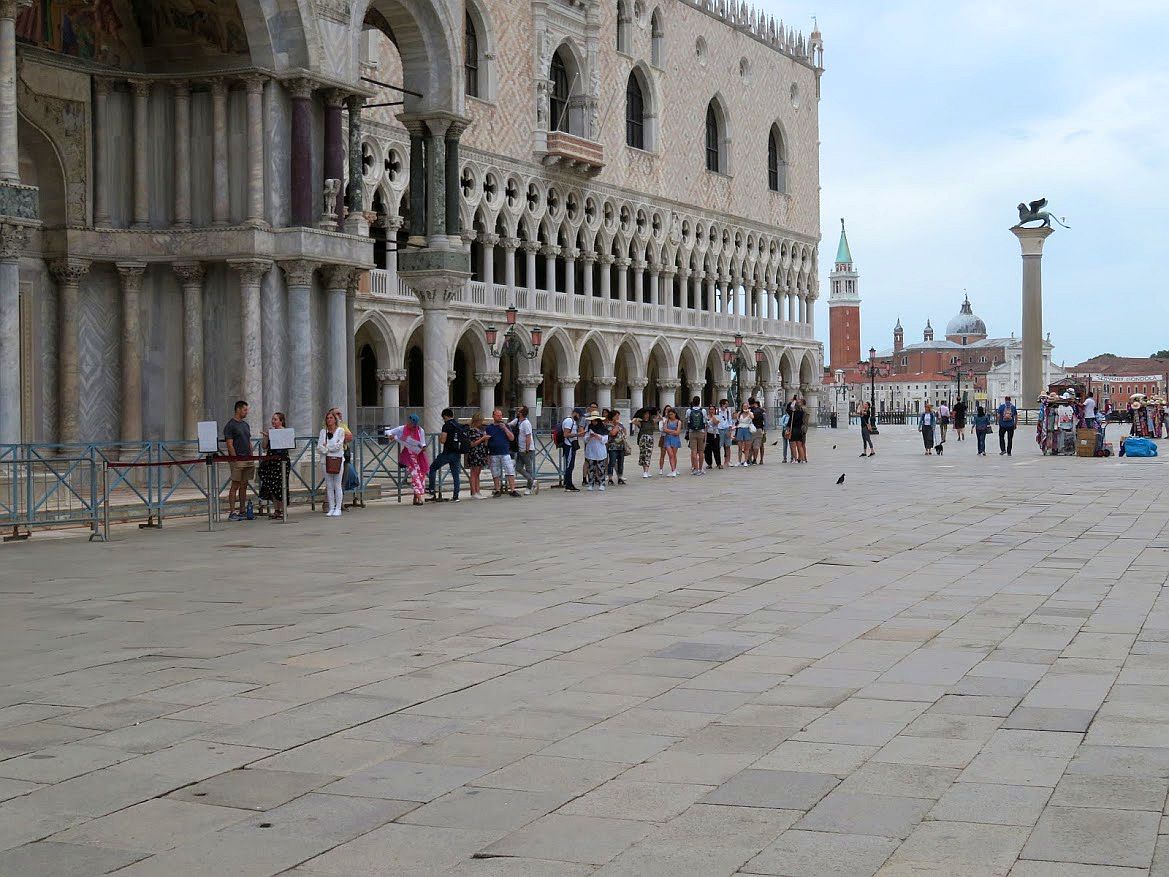
The infamous hordes are not yet swarming the streets; tourists there are, many of them still day-trippers, but not insupportable numbers, by any means. We could probably use a good horde or two right now. Happily for everyone, American travelers are finally permitted to fly to Venice (I presume also to the rest of Italy). Delta Airlines has non-stop flights from Atlanta and New York, and the other day 200 passengers from the USA disembarked to great, if silent, applause. That’s just a drop, however, as the Venice airport is currently handling 15,000 “passages” a day, a mere third of their daily pre-pandemic total.
Still, no coherent plans for managing the eventual masses have yet been proposed. The secretary of the artisans’ association, Gianni De Cecchi, says “The pandemic has passed in vain.” So stand by for the usual complaints, protests, and laments to come forth again. Probably toward the end of next summer, if forecasts can be trusted. Stay tuned.
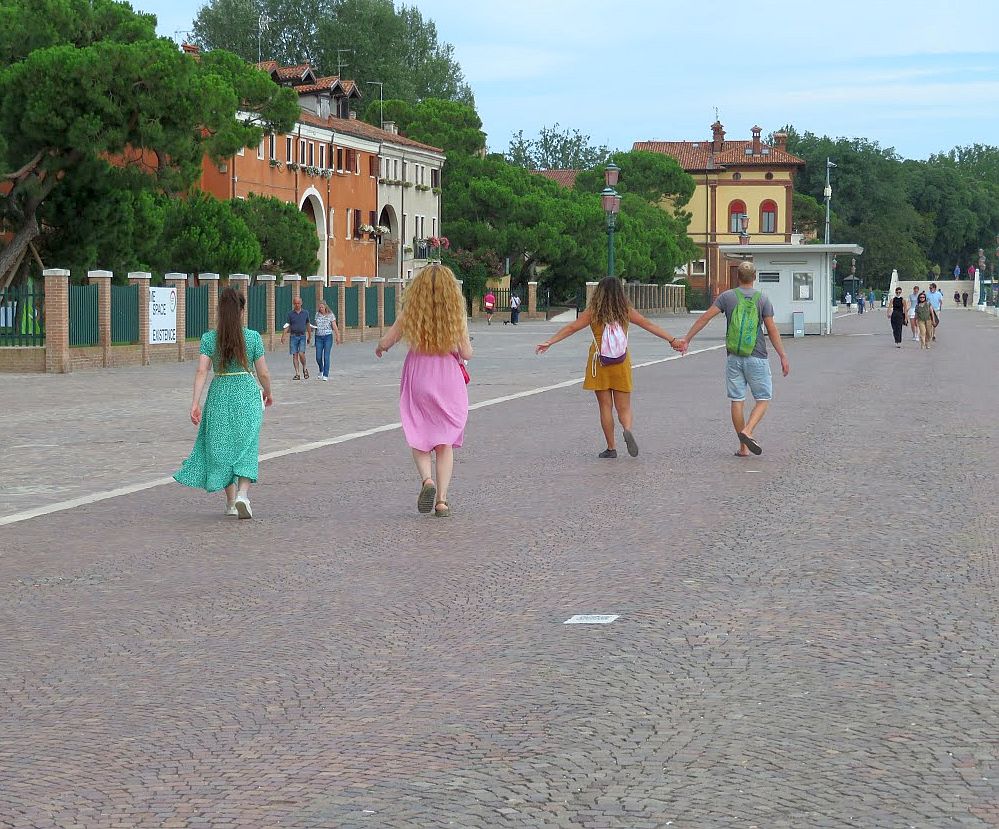

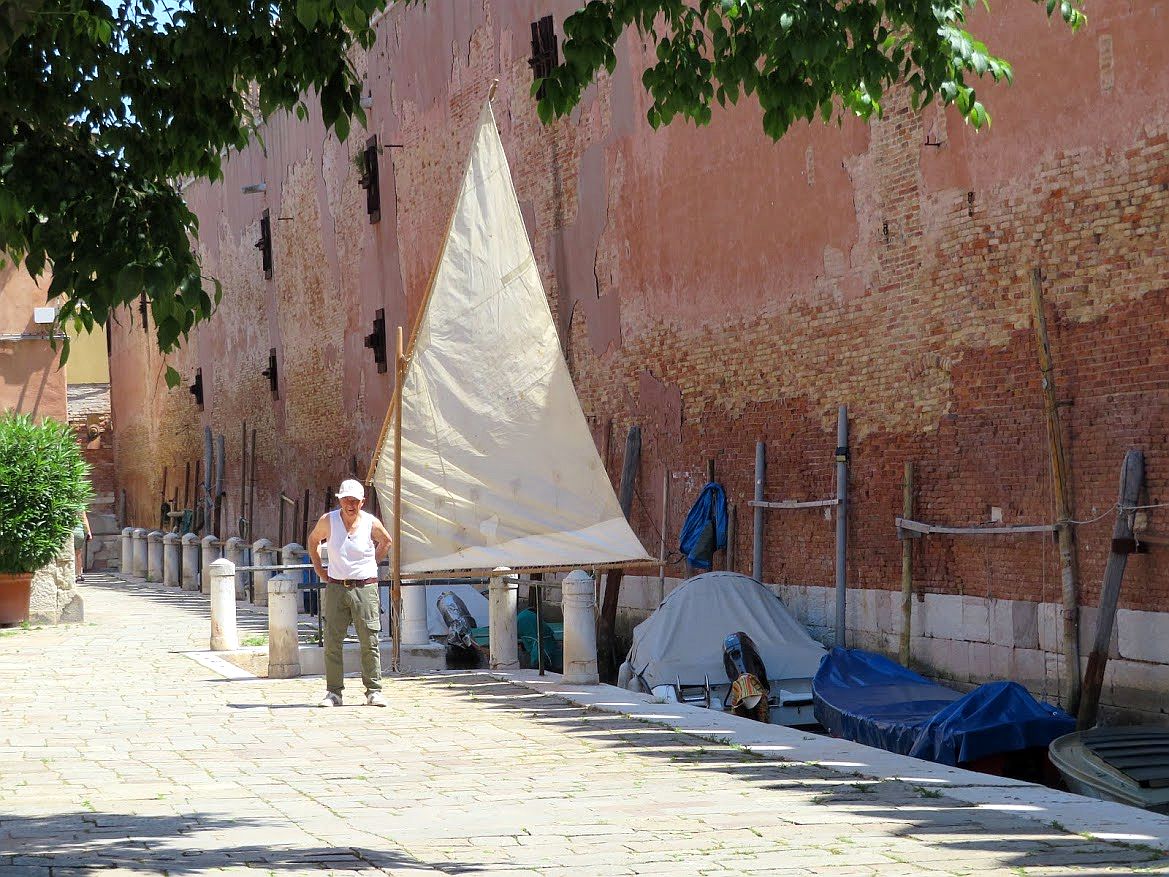
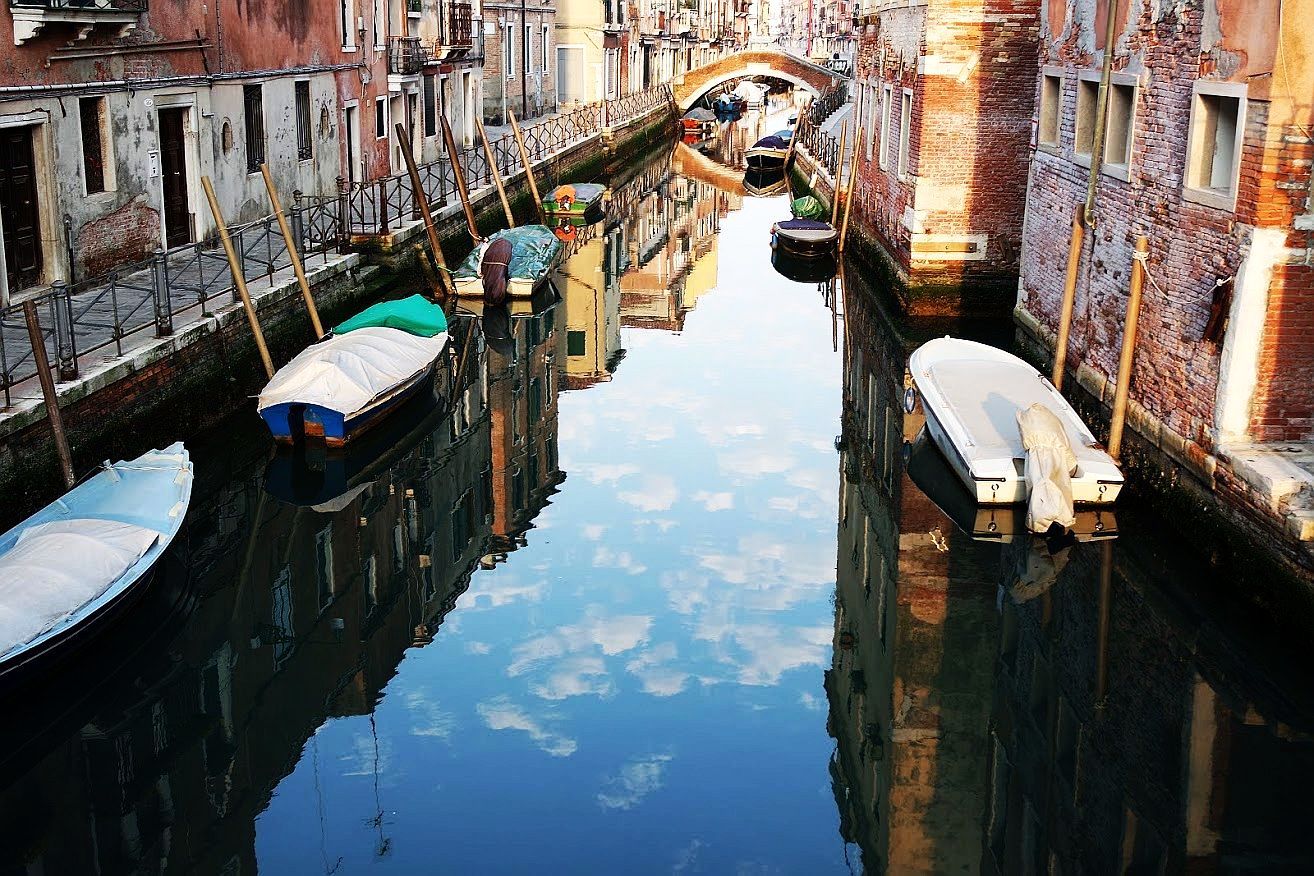
The pandemic is slowly retreating here and normal life has taken a few big summer-weekend bounces that give the city the sensation that the old days have returned. On June 2, a national holiday, there were 50,000 tourists in the city (21,000 from the Veneto, 19,000 from other Regions, 10,000 foreigners, half of which were German). However, it’s becoming clear that the old days could have used a lot of improvement.
All those months during lockdown, etc., when so many people hoped that the city could somehow benefit from the forced suspension of so many activities in order to reassess and resolve the problems of the mass tourism monoculture, was time blown away like so many soap bubbles. We’re pretty much right back to where we were in February, 2019.
For example, outdoor tables and chairs were permitted to occupy more space than strictly allowed during the Old Regime in order to accommodate the necessary social distancing; now they might just stay that way, filling up streets and campos, because now we’re used to it (though the owners won’t feel like paying an adjusted tax for occupying more public space). The aforementioned bars and restaurants and other touristic enterprises have been discovering, to their surprise, that manpower is missing. Bluntly, one out of five former employees isn’t coming back. A year and a half has passed, and waiters and chambermaids and many other toilers in the touristic fields have found other jobs. So let’s nab all the foreign workers we can for temporary (low-paid) summer work, even though they haven’t been vaccinated.
As for daily life, naturally I’m glad that people are working again, but this means we’re picking back up with motondoso and sometimes overcrowded vaporettos and cloddish tourists and pickpockets and seagulls ripping the food out of people’s hands in the Piazza San Marco and so forth, with more of the same coming up, no doubt, as restrictions continue to ease. The great forerunner is the Biennale of Architecture; it opened on May 22 and will run until November 21, B.T.U. (Barring The Unforeseen, not British thermal units.) The unforeseen has become a major player now in any undertaking, psychologically if not logistically.
So now that Venice Inc. is trying to get back underway, I paraphrase the famous remark of American President Calvin Coolidge and say that obviously the business of Venice is business. Or, as I put it, thisisvenicewheremoneyisking. And now that we can talk about business in the present tense again, I see the economic landscape, as illustrated by the shops, as divided into two basic categories. And both show the ways in which the Venetian economy has changed over the past two generations or so.
Category 1: Shops that have changed over the years. Category 2: Shops that have closed forever.
Category 1: Walking around the city, I can add my own version of what I call the Venetian litany: “I remember when that was…..”. When Lino would walk along Calle Larga San Barnaba and tell me, door by door, who used to be there, the coal seller or the fish fryer, it seemed exotic, as if change was so long ago. But now I too have seen it as it is happening.
It used to be, some 25 years ago, that when useful shops succumbed they were most often replaced by ones selling “Murano glass” or Carnival masks. Lately, though, when you see yet another useful shop disappear you can assume it will be replaced — well, certainly by supermarkets, they’re everywhere now — by bars/cafes/restaurants, or by hotels. Evidently people come to Venice to eat and sleep, as if it were a convalescent hospital.
Examples are everywhere. The best nursing home in the city is being converted to a hotel (and the worst nursing home appears to be on the same trajectory).
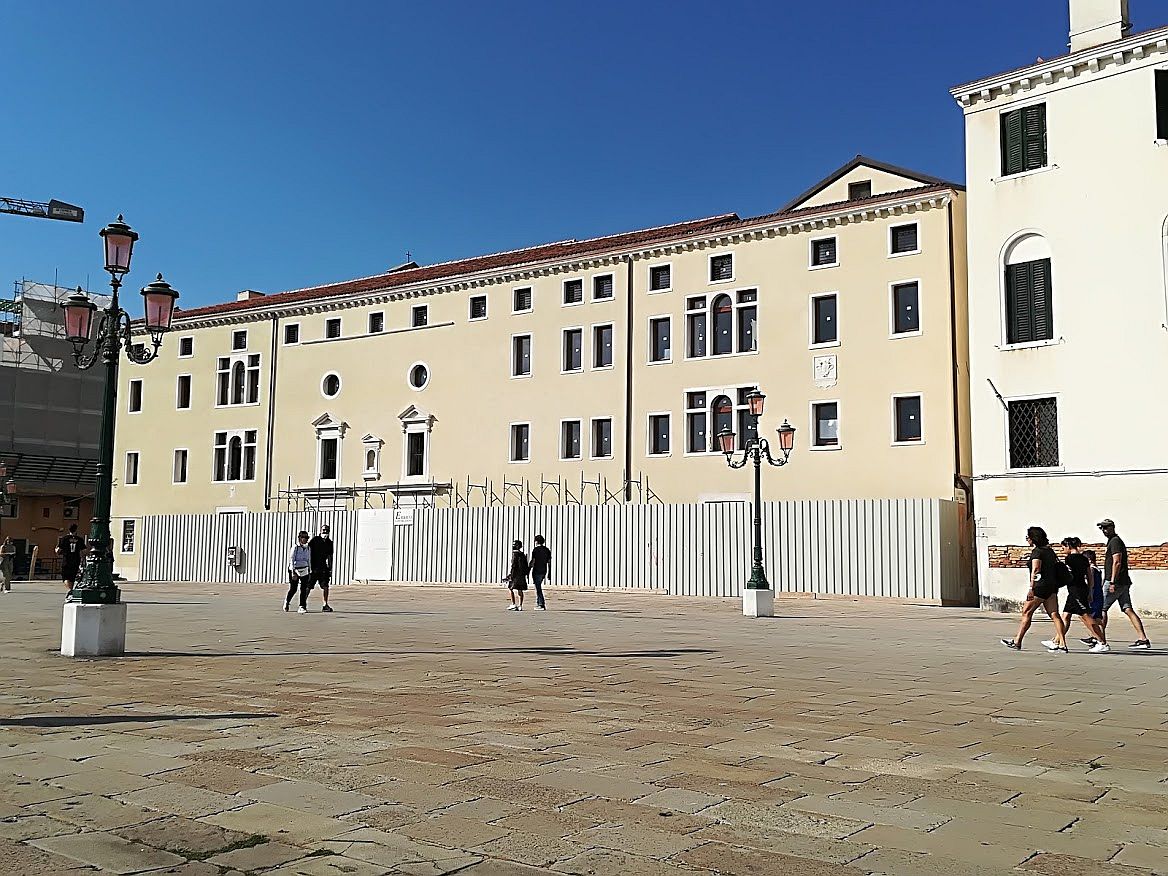
When the skeletons of the two former gas holders near San Francesco de la Vigna were up for renovation not too long ago, scores of families formed a committee to implore the city to convert them to an urgently needed multi-purpose sports center for the students of the nearby high schools. For a while it seemed as if the city had yet to decide, and then the surprise. Renovation has continued, but the citizens are out of luck because this treasure of industrial archaeology is going to be a hotel. Those are only two examples of how a facility useful to Venetians is removed to make room for something that makes money.
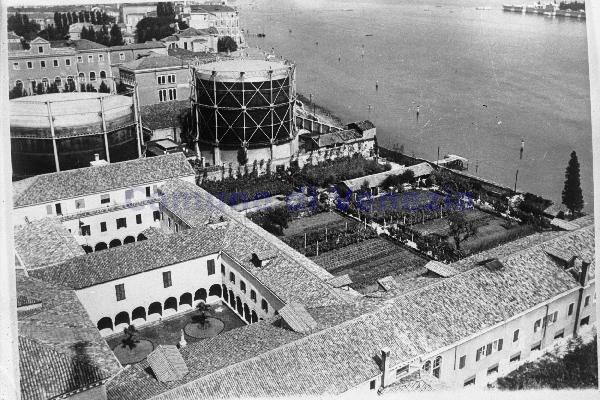
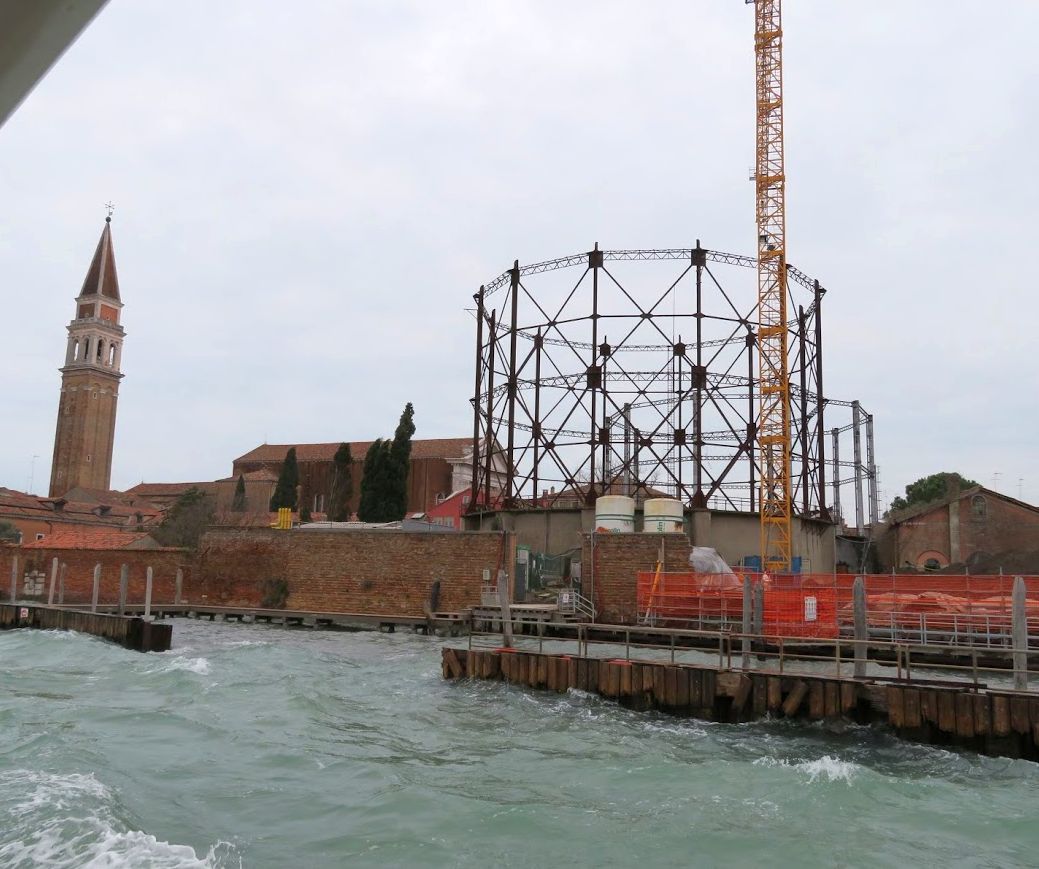
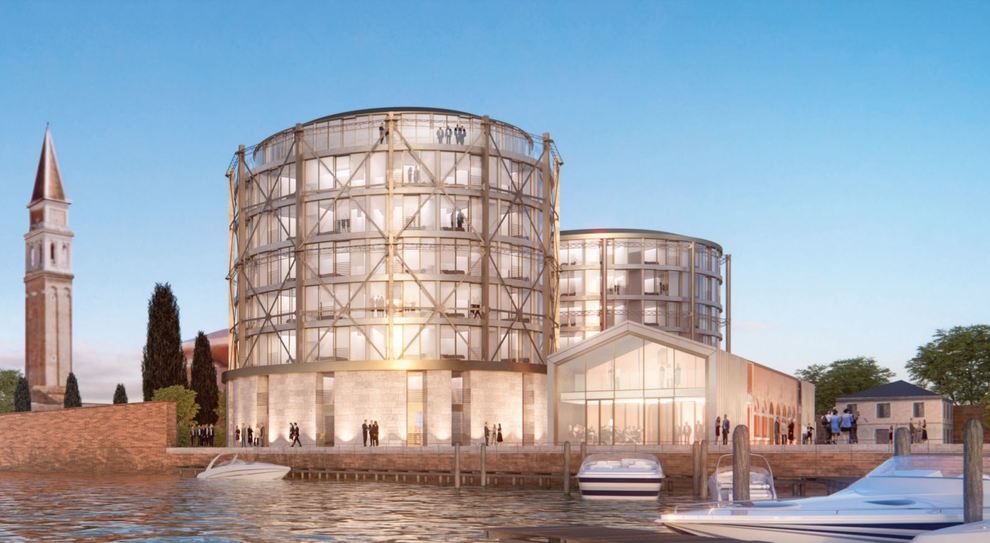
So much for hotels. Let there be restaurants!
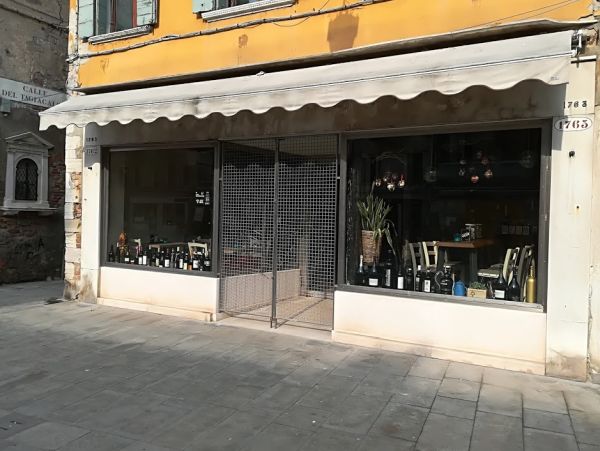
I don’t want to bore you to oblivion, but here’s a quick review of the transformation of via Garibaldi, still proudly promoted (not by us) as one of the few places where you can still find real Venetians. Yet many shops that were used every day by the aforementioned Venetians have gradually been removed, one by one. The excellent clothing store has undergone really ambitious renovation to become a restaurant (work appears to be stalled, but there are cartons of wine on the floor); the small deli/supermarket where Claudio reigned behind the case of cheese and butter is now a restaurant; a pork butcher shop dedicated to salame and other such products is a restaurant; the furniture and upholstery store became a bar and gaming salon (closed since the acqua alta of November 11, 2019); the fresh pasta and exotic ingredients shop is now Nevodi Pizzalab for takeaway pizza; a fruit and vegetable stand is now a restaurant.
On the non-comestible side, other stores have also been through various reincarnations that moved successively farther away from ordinary life. The bank became a hardware store (could have been useful except that somehow whatever you needed on Friday was expected to be delivered next Wednesday. This went on for at least two years until it folded) and now it’s a real estate agency. We miss the bank.
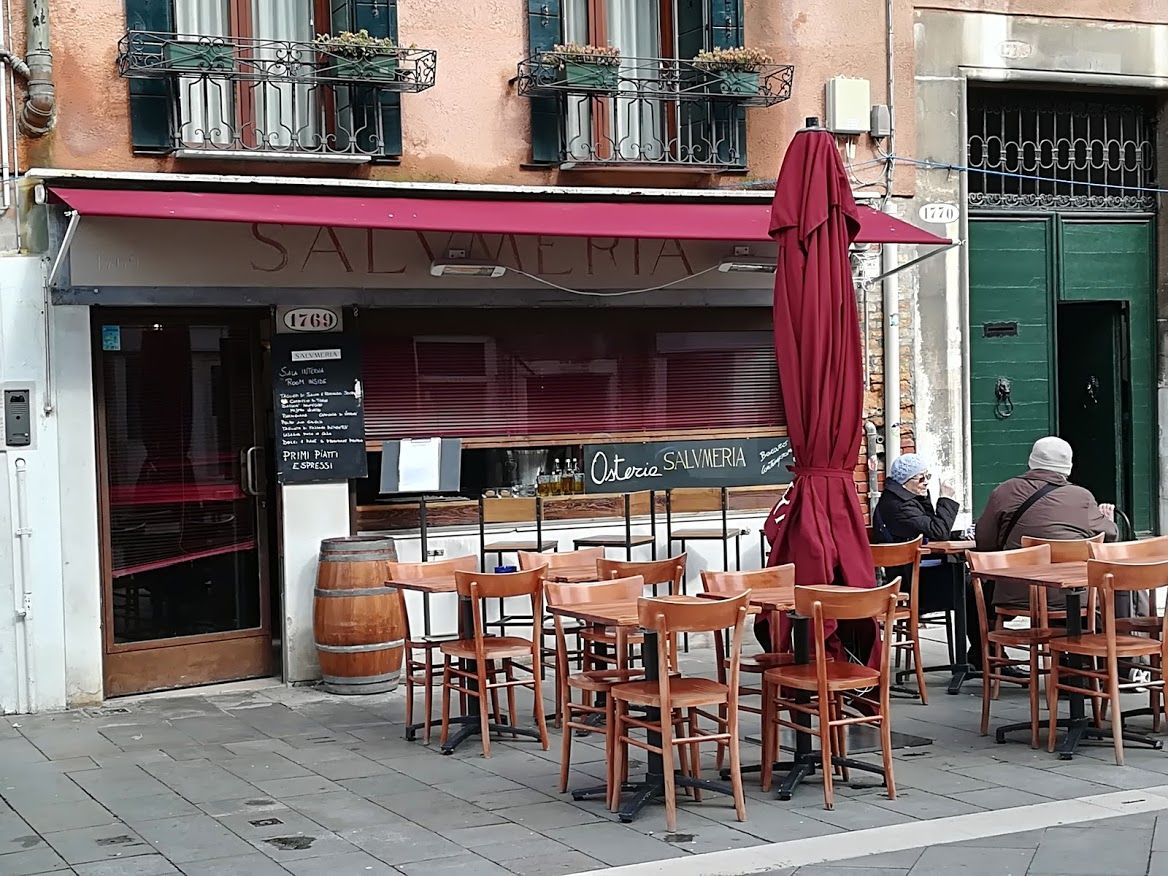
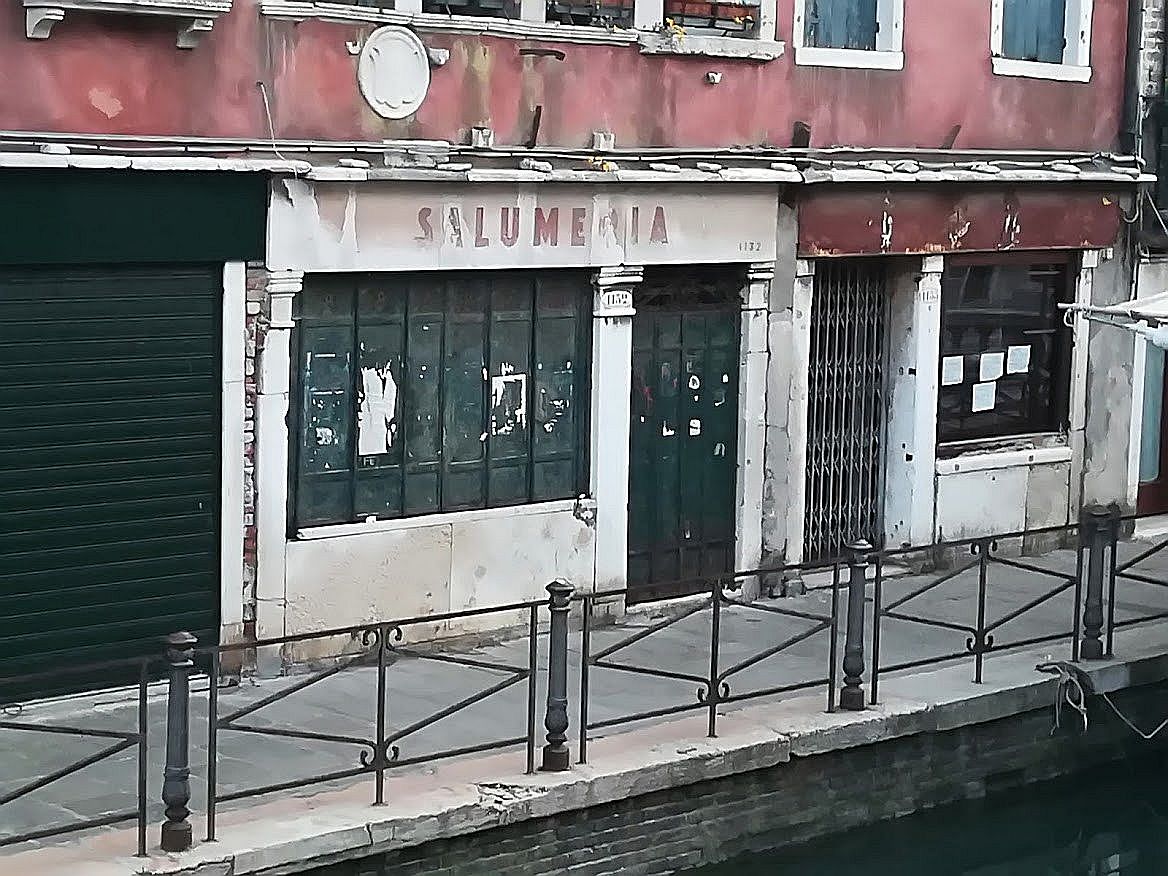
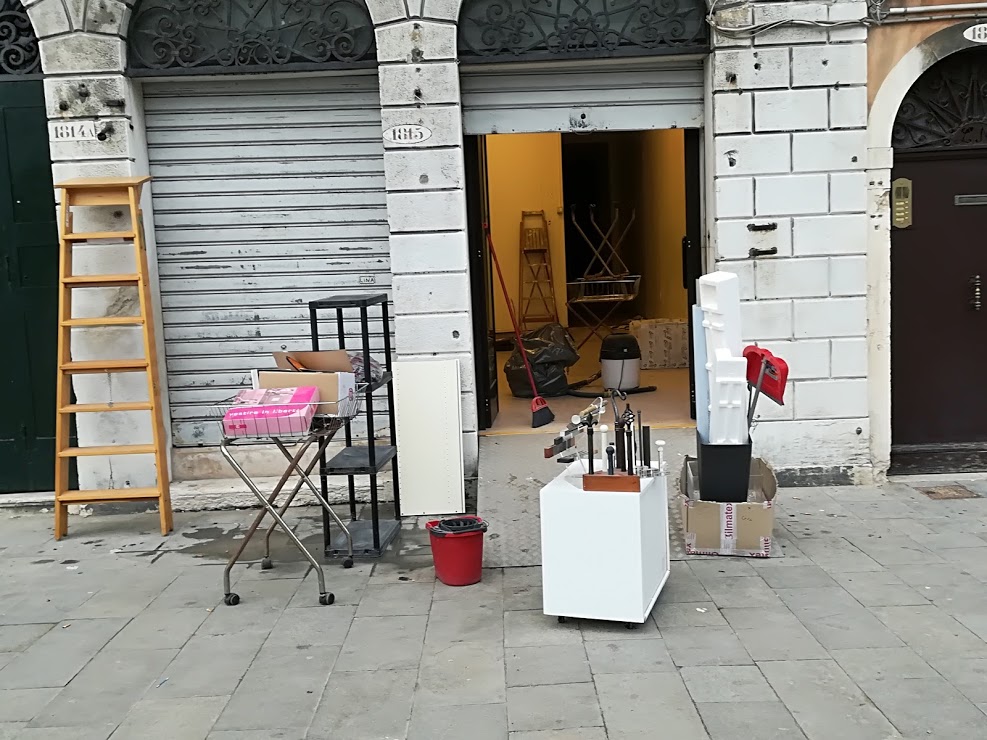
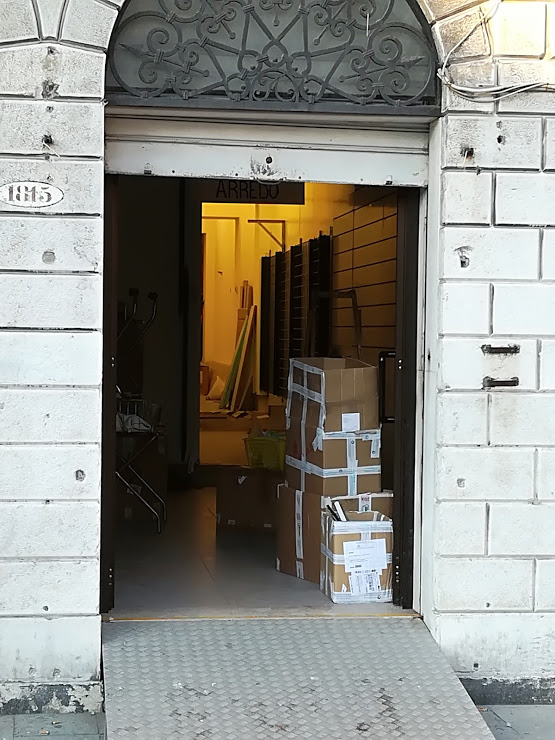

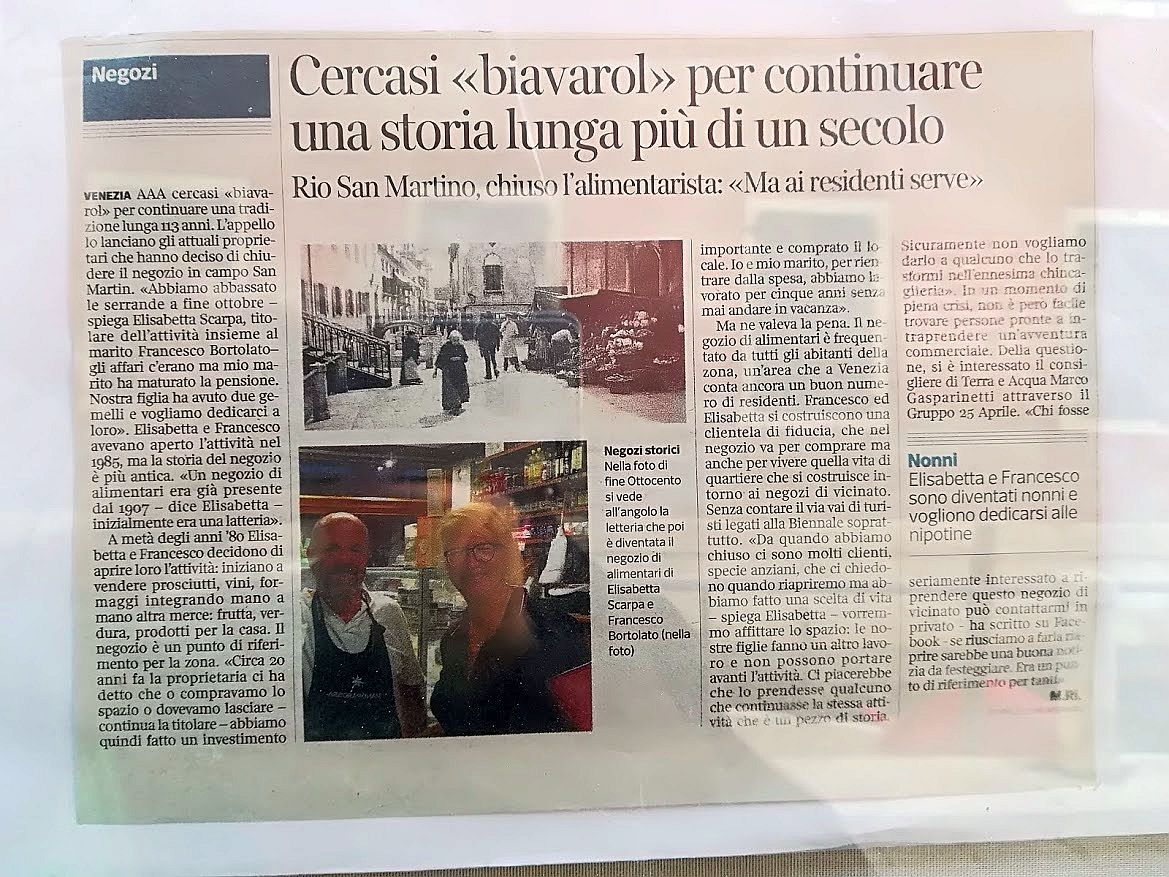
Actually, there are plenty of places that change that don’t turn into restaurants.
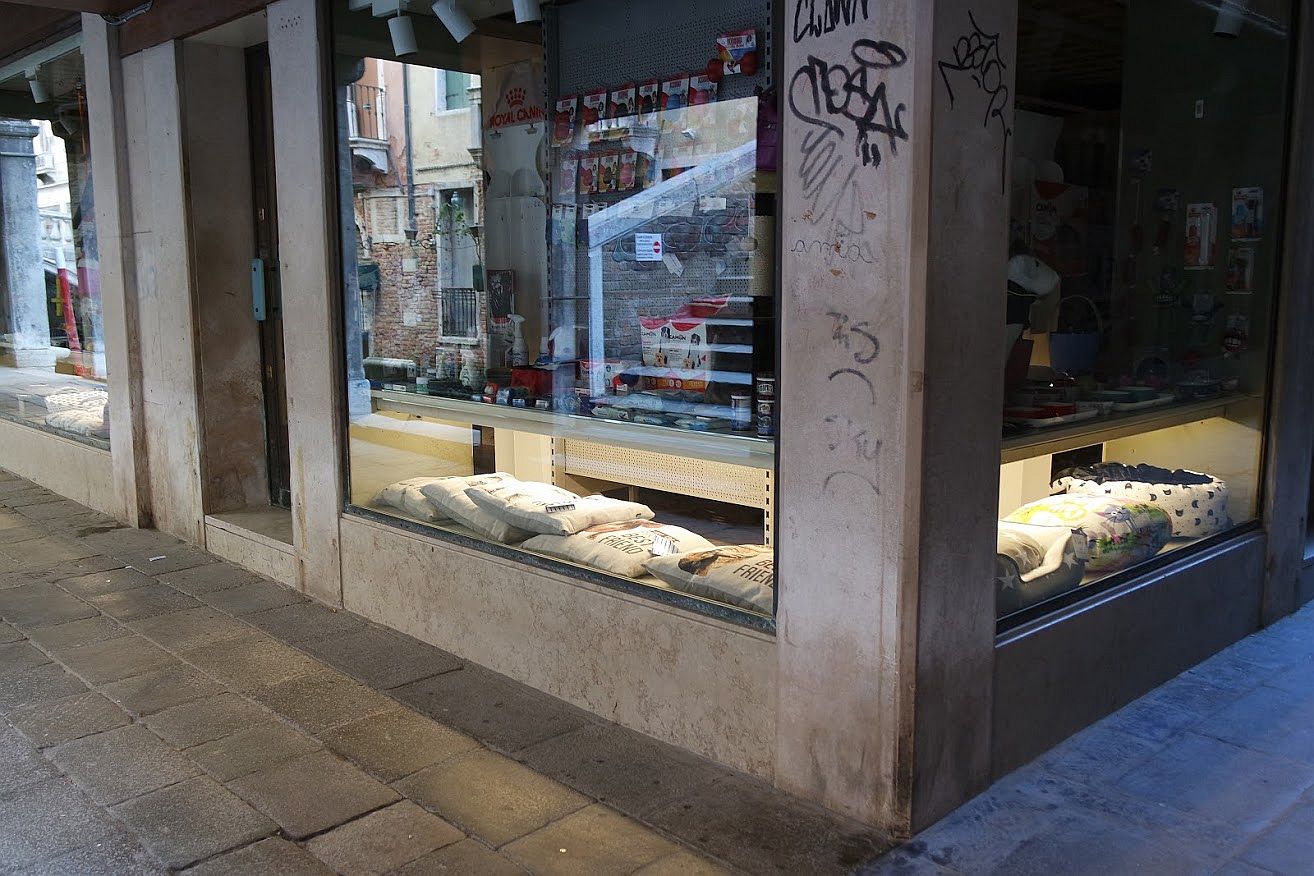
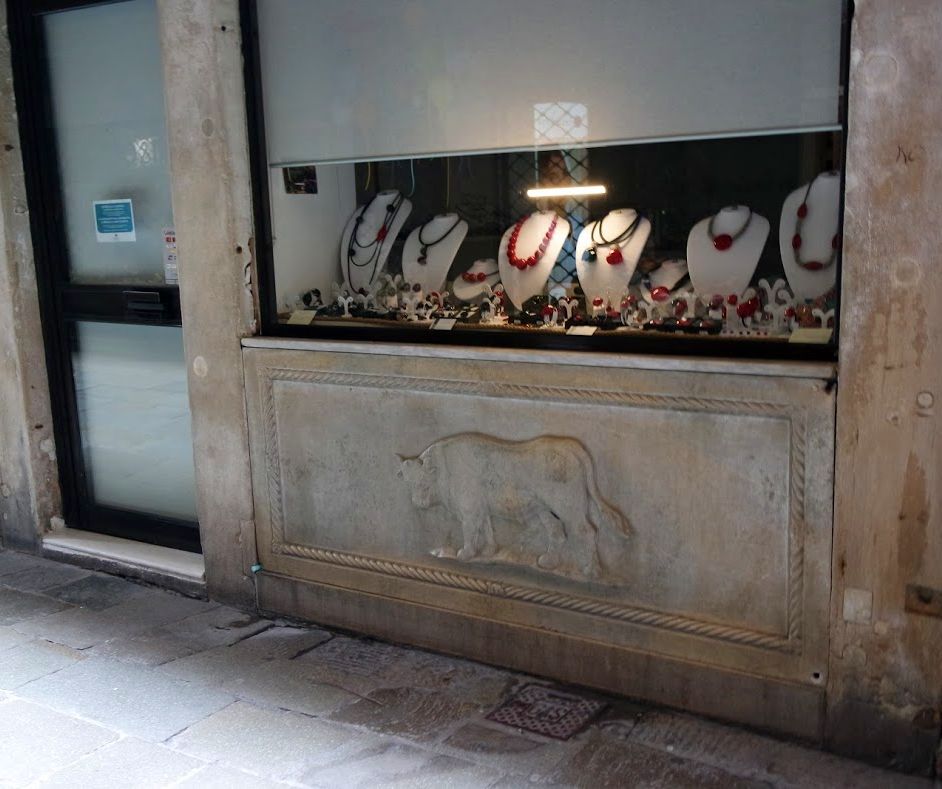
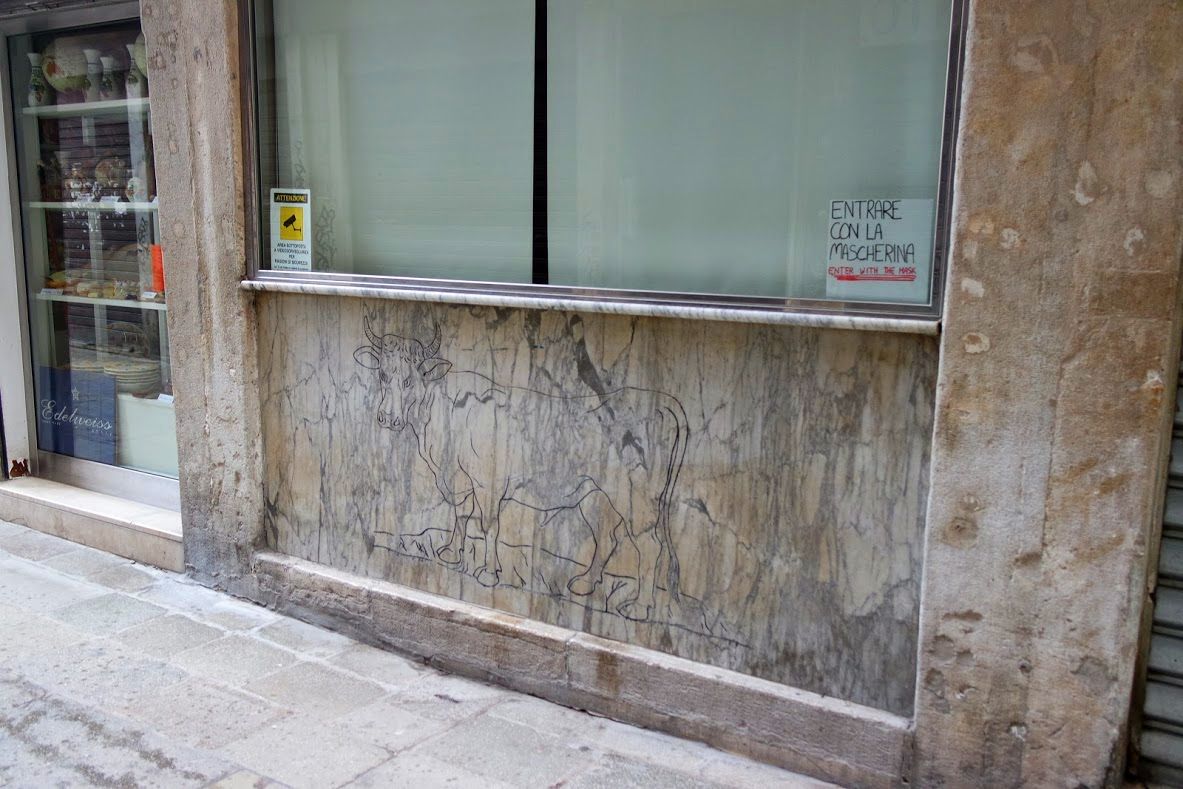
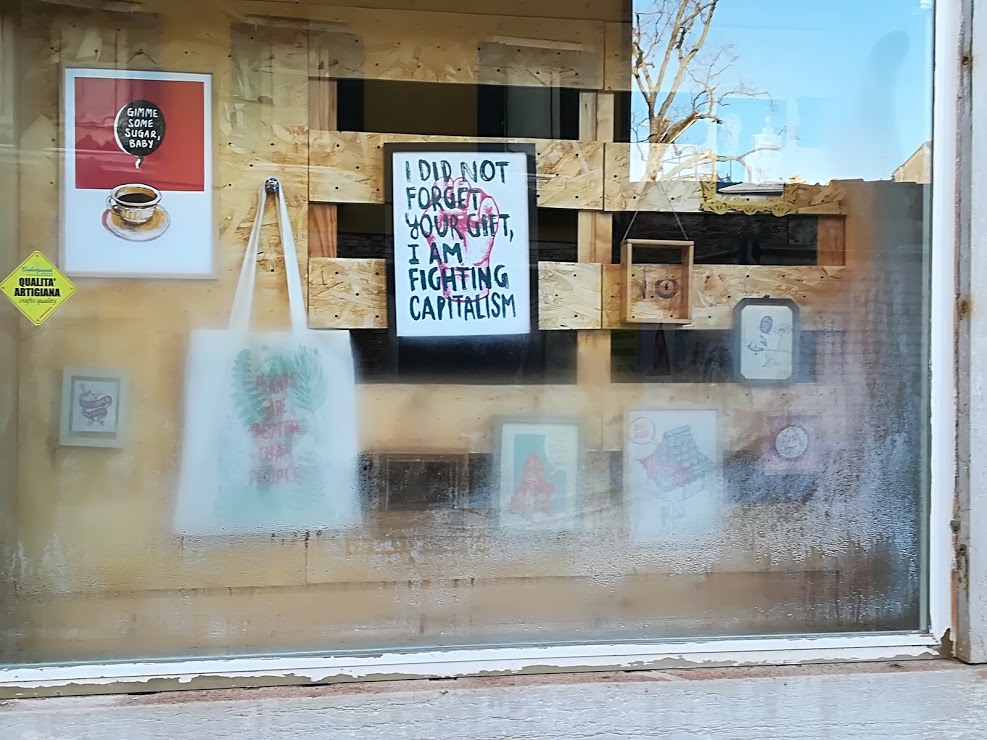
Apartments for rent: Of course this is a business too, and by now a very big one. The pandemic across Europe pretty much obliterated last year’s crop of tourists, but they are coming back. Collectively calumniated in the popular mind as “Airbnb,” apartments for tourists are offered by scores of other companies.
The continuing depopulation of Venice has left ever-more apartments empty, so of course they’ve become another commodity. Venice is far from unique in this, as we all know, but the sheer quantity has distorted (or is the result of the distortion) of Venetian life. Now that the apartments are being registered and regulated, virtually all of Venice’s some 3,000 streets (calle, calesela, ruga, salizada, ramo, etc.) has at least one door with an official tag indicating a touristic apartment within. We knew there were lots, but now that we can see them it’s a bit unnerving. Still, all those people who rail against Airbnb as the destroyer of Venetian life need to recognize that nobody has forced the apartment owner to do this, and otherwise the apartment would most likely sit empty, which isn’t a positive thing at all.
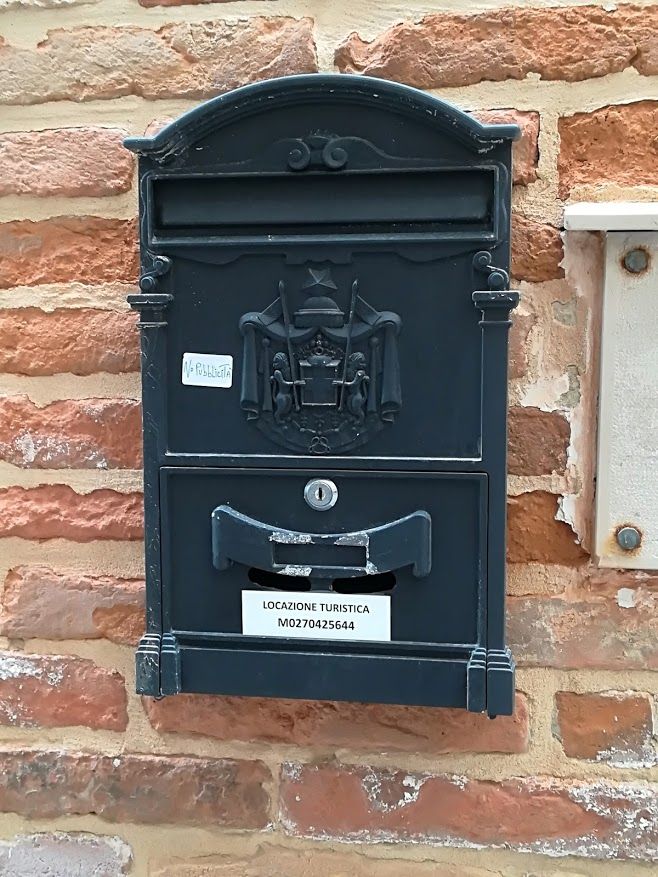
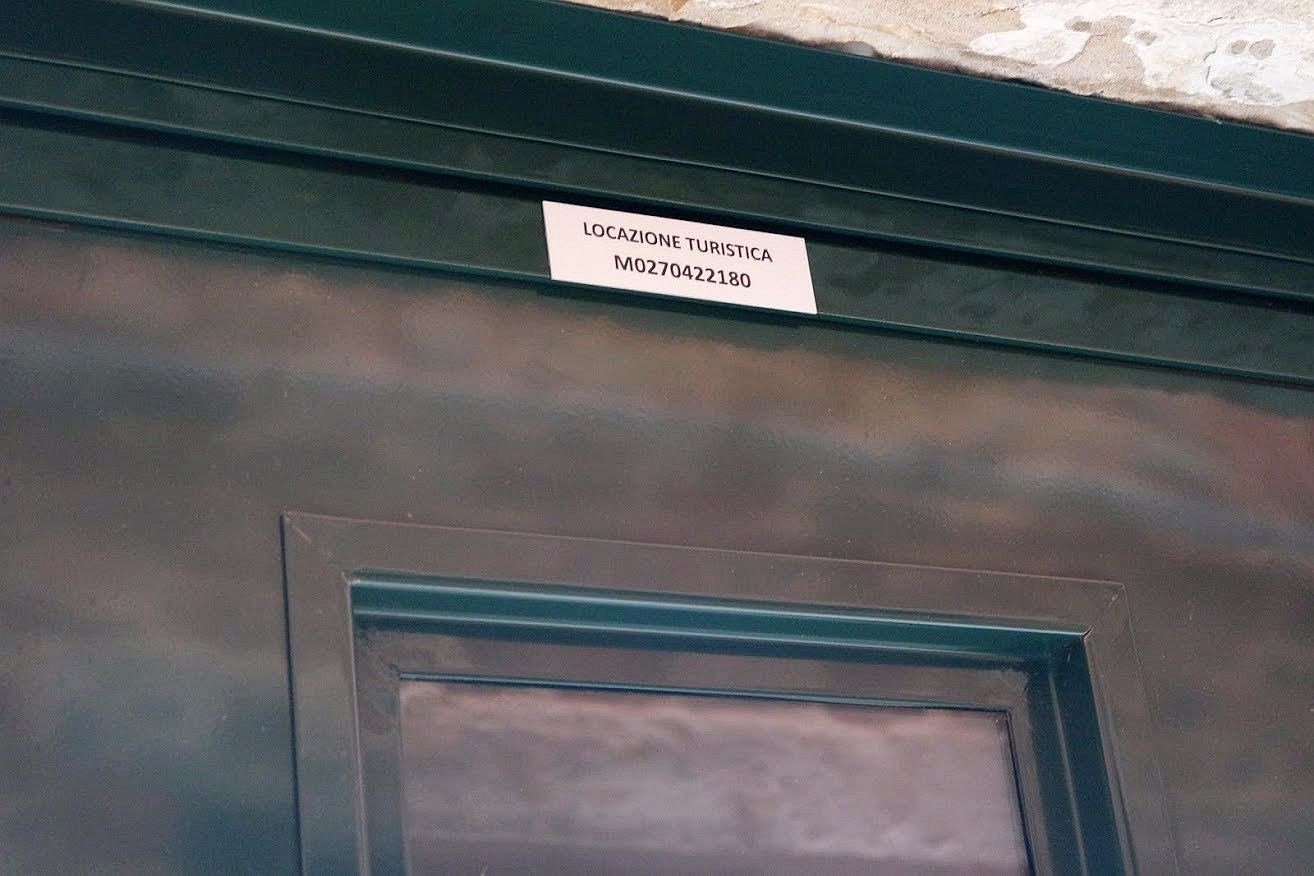
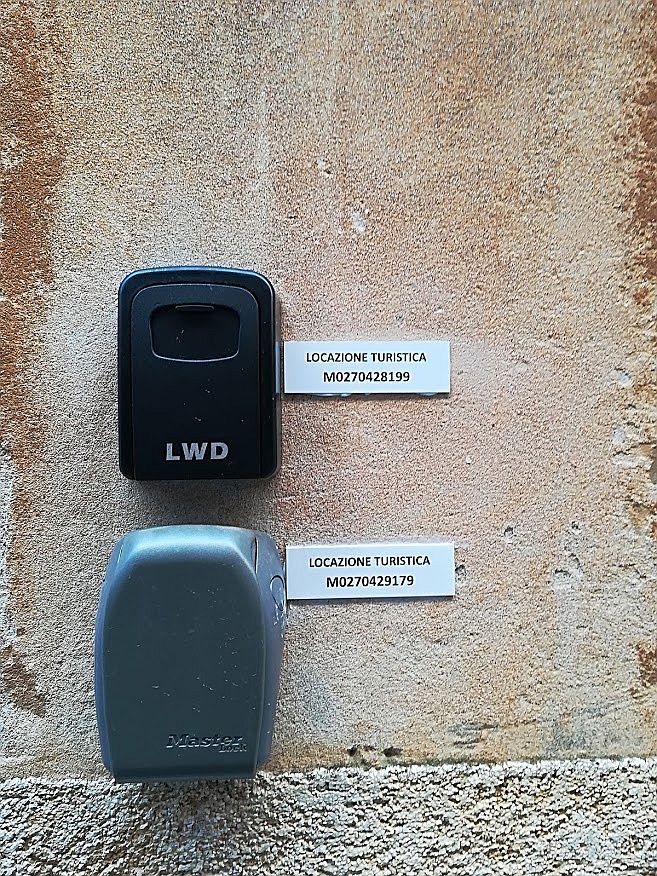
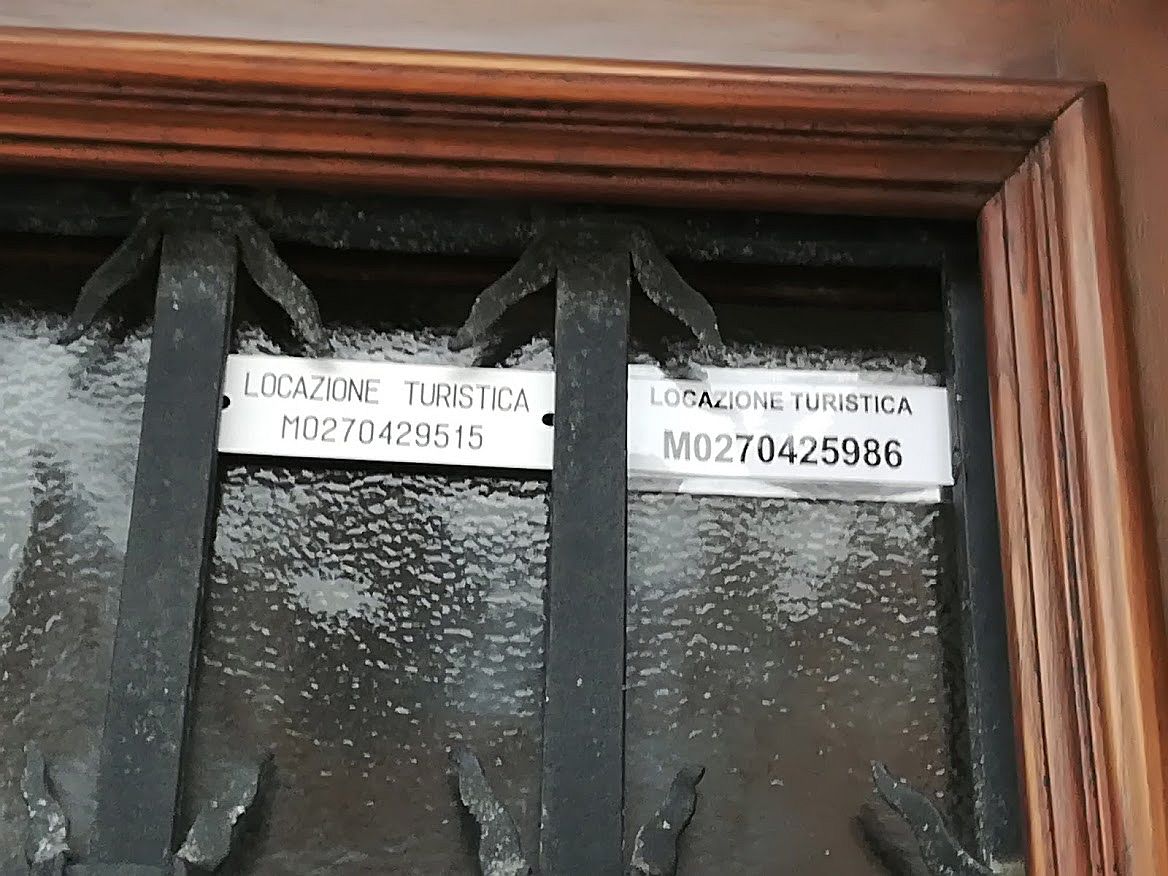
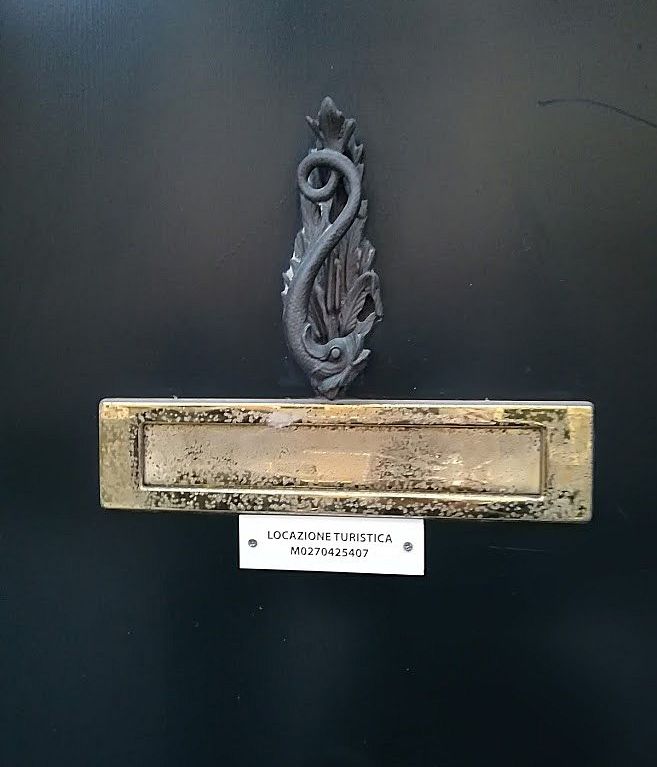
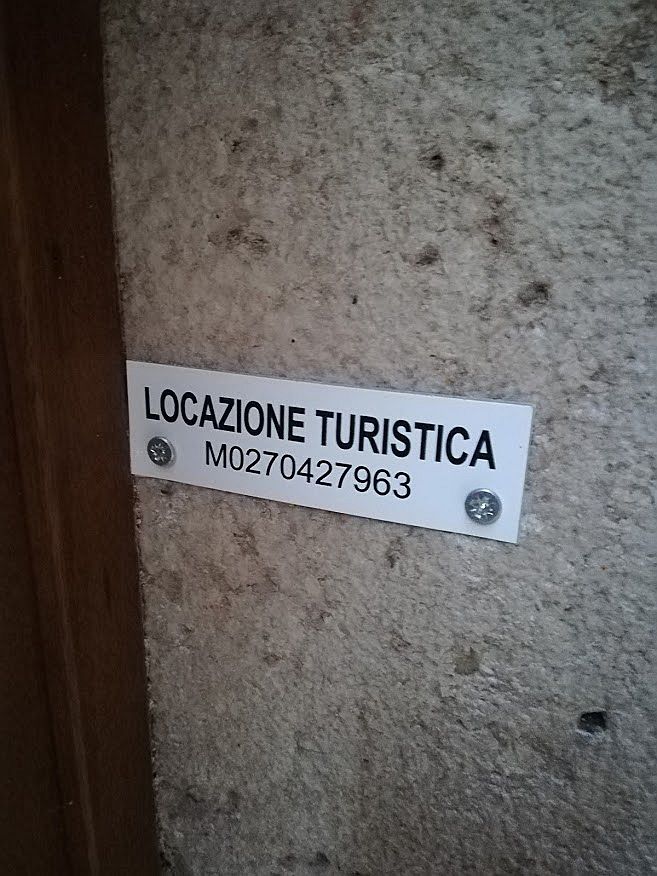
I could add a thousand more of these images, but you get the idea.
So much for Category 1, shops (and apartments) changing. Before I go to Category 2 (shops disappearing), here are some thoughts on the economics of bread.

Every morning at 6:30 a ponderous barge briskly backs up along the rio de Sant’Ana, with huge roaring, till it reaches an open space to park. One of the two men aboard jumps ashore, loads a few plastic boxes containing variously shaped bread onto his handtruck, and rolls it rapidly toward the Coop supermarket on via Garibaldi.
Exactly five minutes later he has returned with the empty boxes and the barge is roaring its way forward (there is no space to turn around) out of the canal.
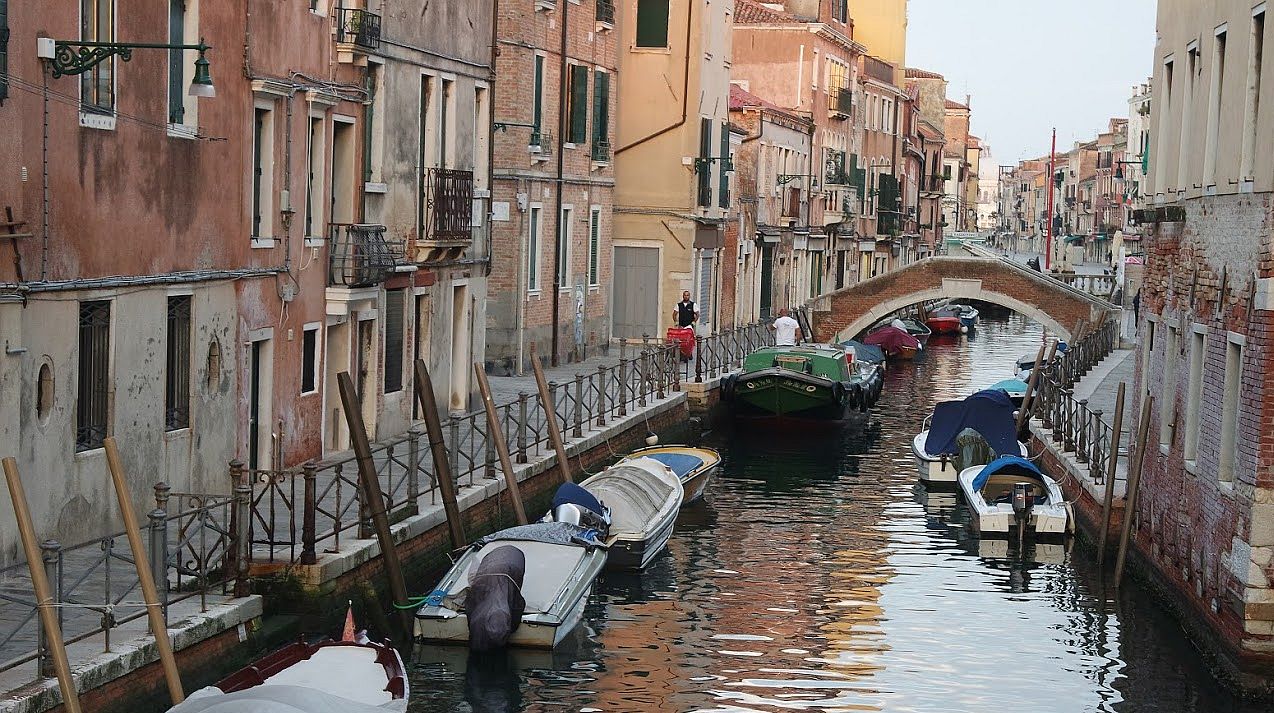
This phenomenon interests me because the barge is enormous, yet by the time it gets to us it is carrying a load that would qualify as almost nothing. Seems like a heck of a boat to use for that small a cargo, but let’s say that this is the last stop, and that the run started at 4:00 AM with ten stops and eight tons of bread. That’s not exactly my point. It seems like a huge expenditure for a small return, but clearly the formula is working fine.
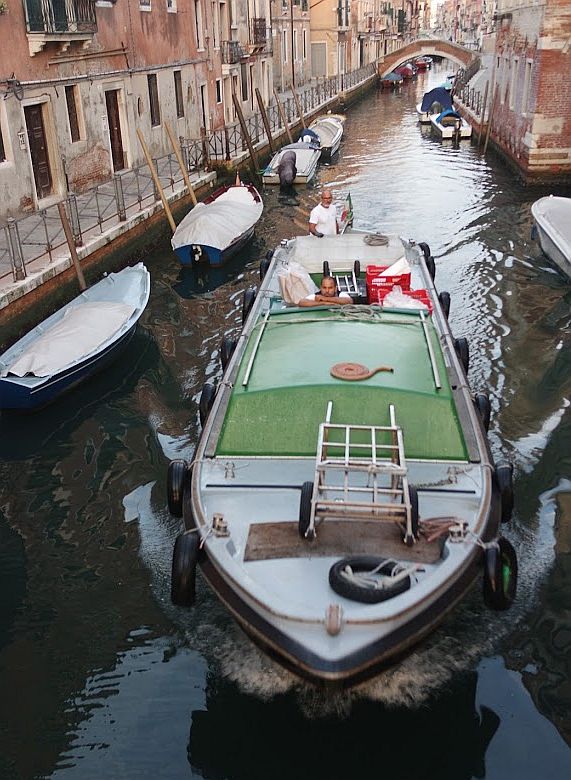
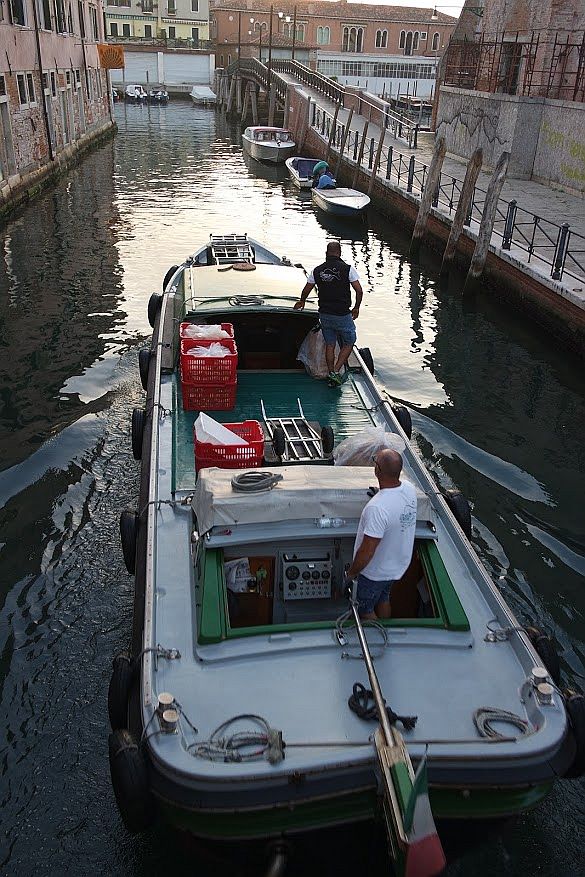
My point, however clumsily expressed, is that this is a proverbial coal-to-Newcastle situation. Within the area of about two city blocks, there are three full-time bakeries turning out bread every morning as the handtruck from who knows where rolls by. So in my primitive lizard brain, anybody who’s in favor of keeping local businesses alive ought to consider the possibility of the local bakeries supplying the supermarket, though I realize that’s slightly nuts because people could just go buy the bread straight from the baker.
So why do people buy bread at the Coop when they could buy it up the street at Crosara? Because it’s cheaper, of course. But it isn’t as good. So at the intersection of price, quality and convenience (bakeries close in the middle of the day), we see the bread on the truck at dawn a mere half hour before the first bakery opens.
Hence the eternal decision is ever-present on via Garibaldi: Save 5 cents per kilo on my daily bread even though it tastes like styrofoam, or spend the 5 cents more on something divine just out of the oven. Venice will be making money somehow in any case, because that’s the way it is.
Speaking of little shops, we come to Category 2, the most poignant witness to how Venice has changed: Shops that have closed forever. In your wanderings around the city you may have seen, but not observed, them. They are everywhere, mute witnesses to crafts and businesses and livelihoods and families that made Venice a place where life was vivid and intimate and dense.
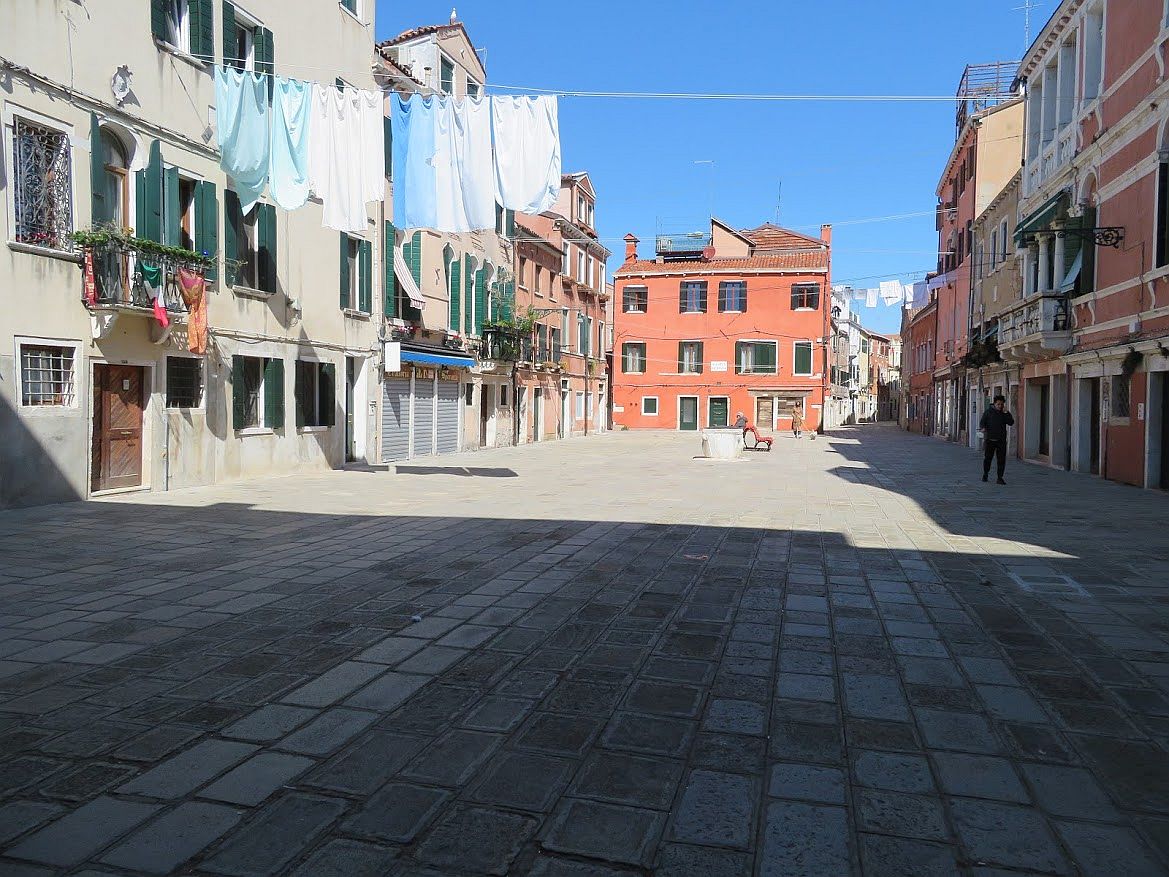
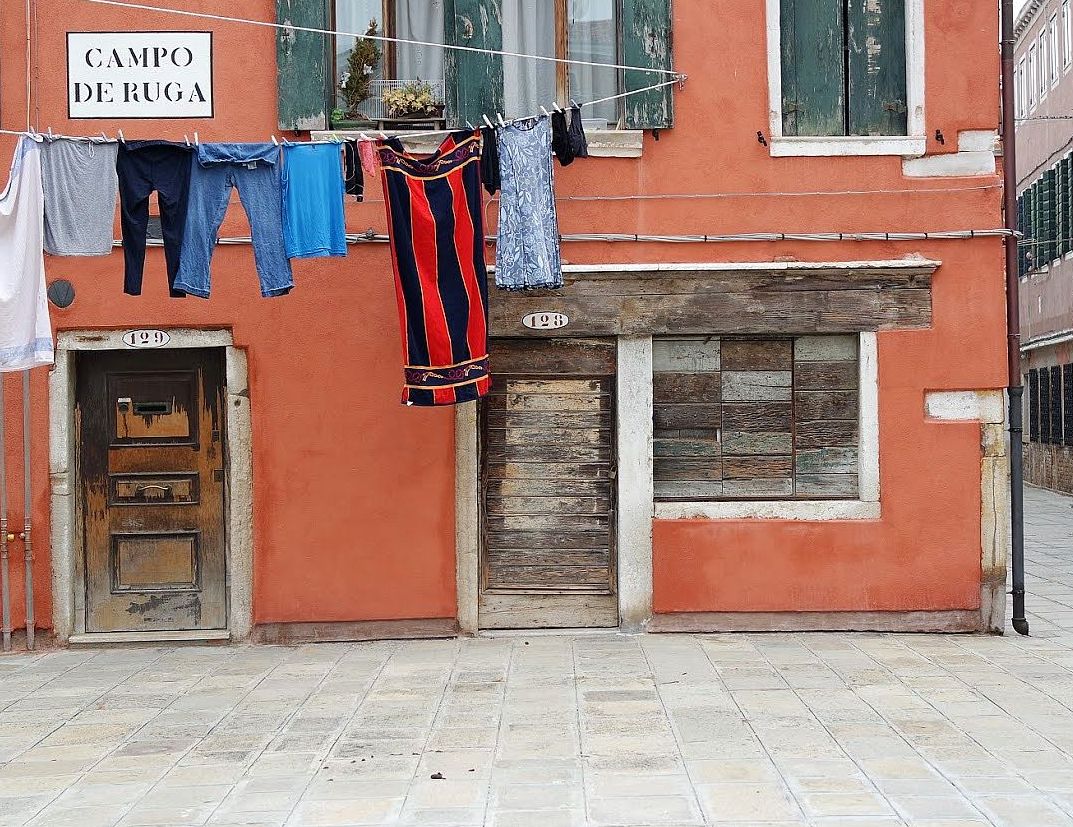


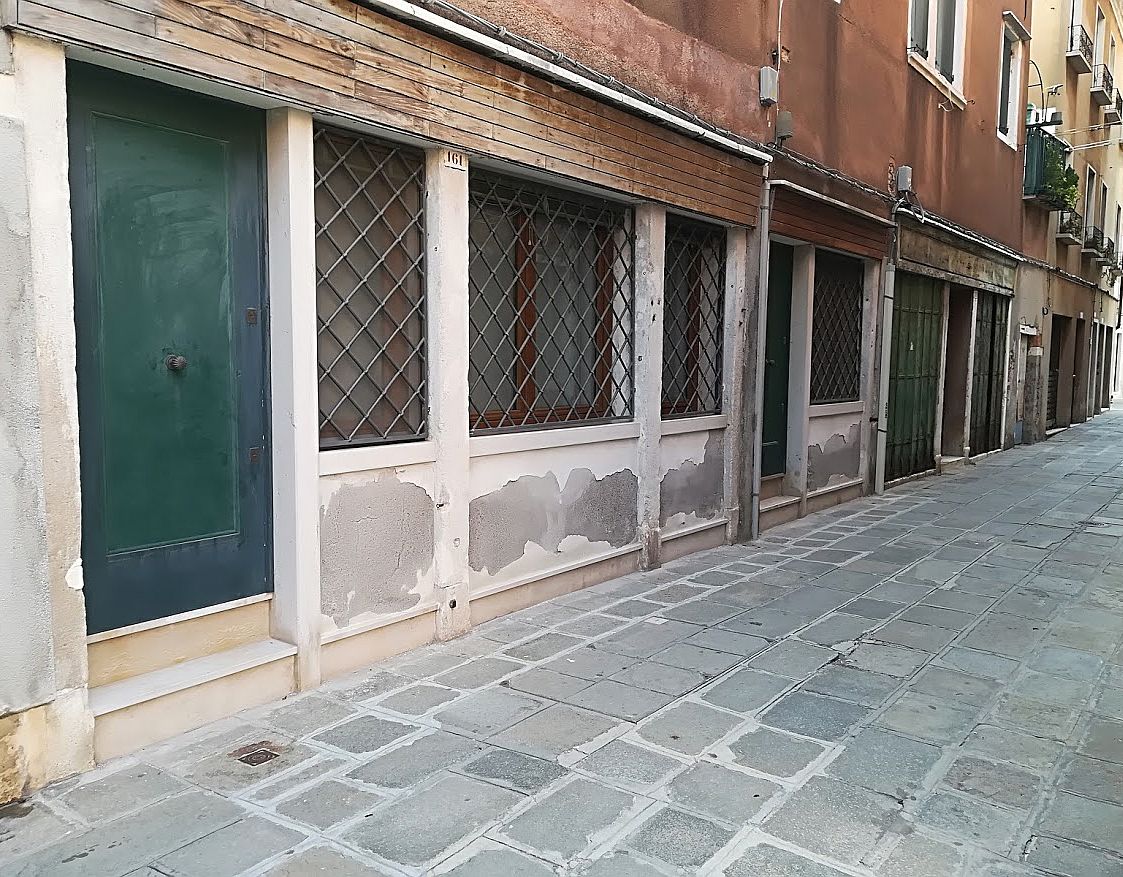

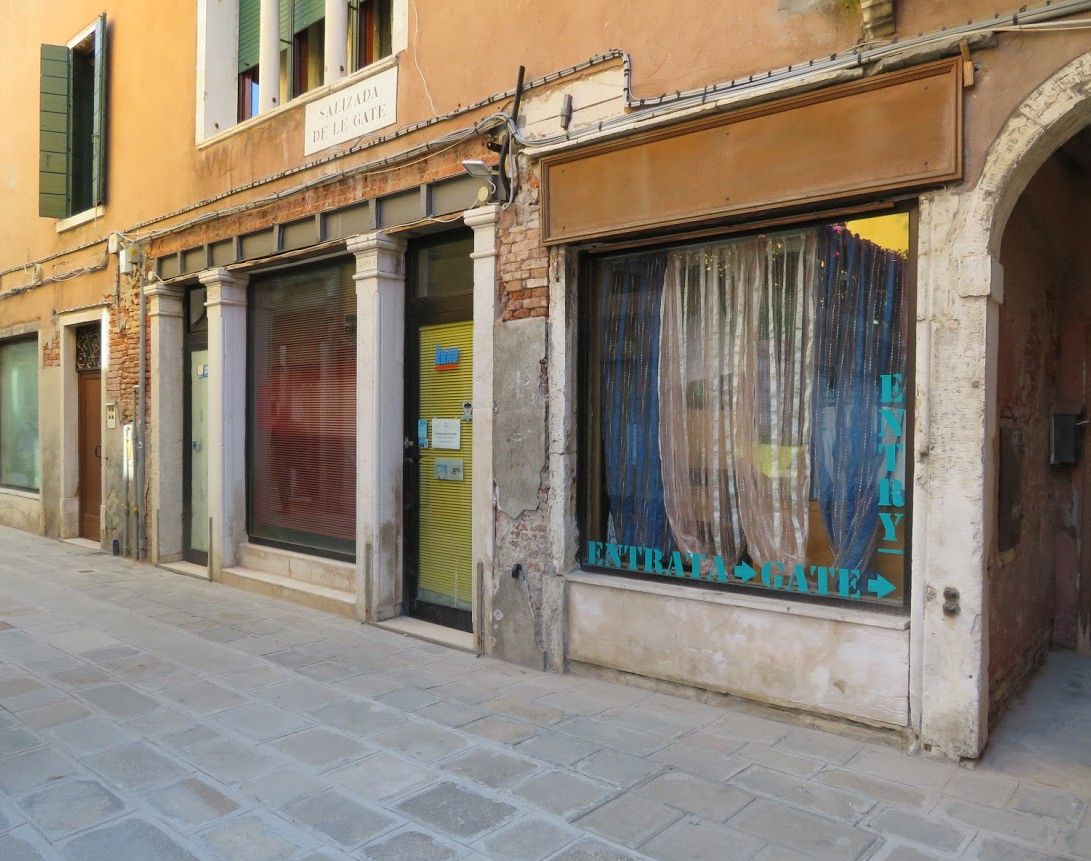
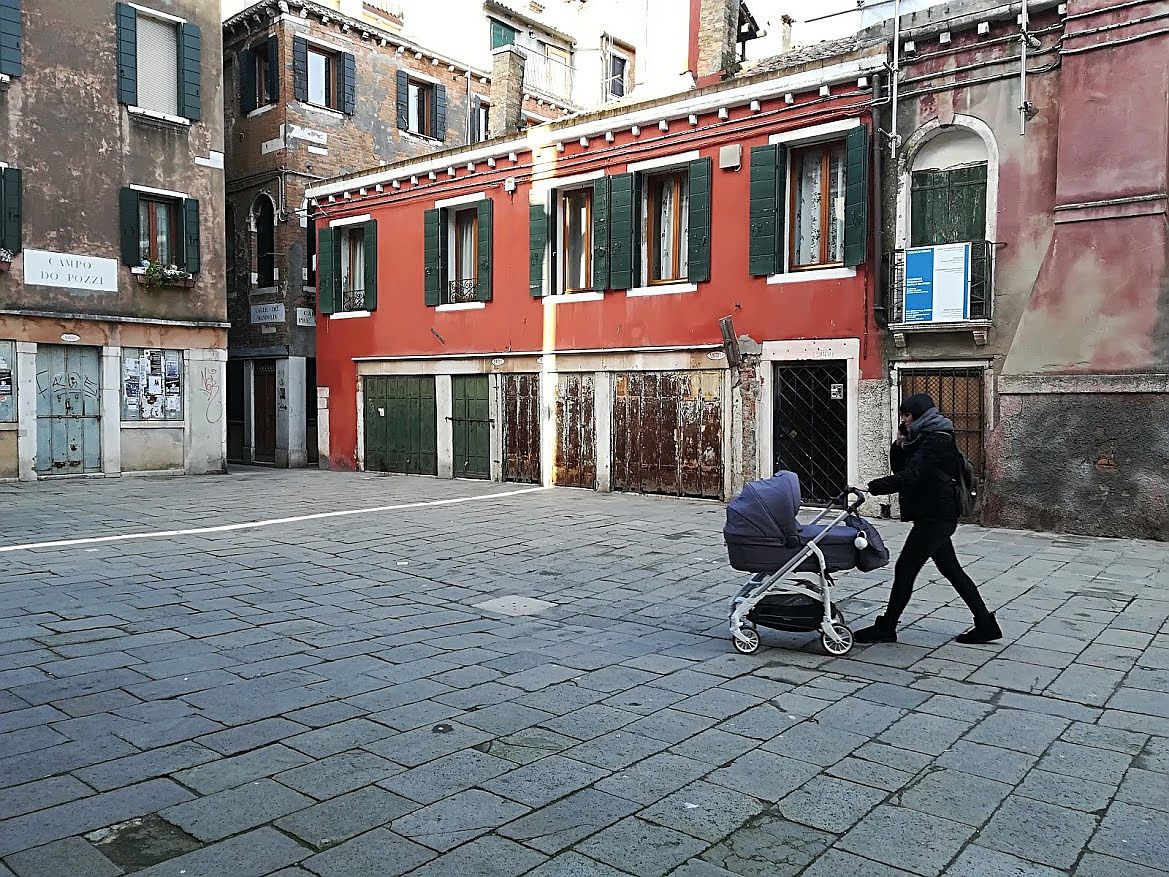

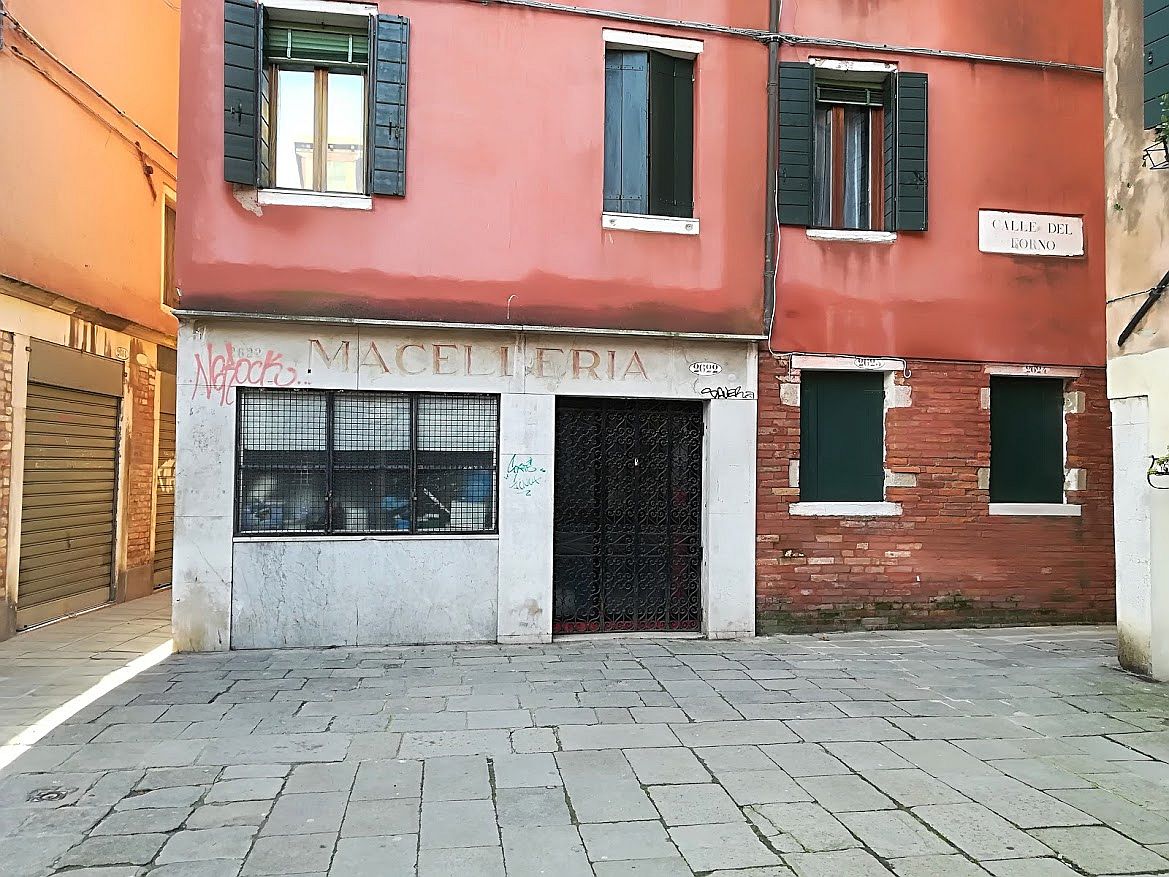
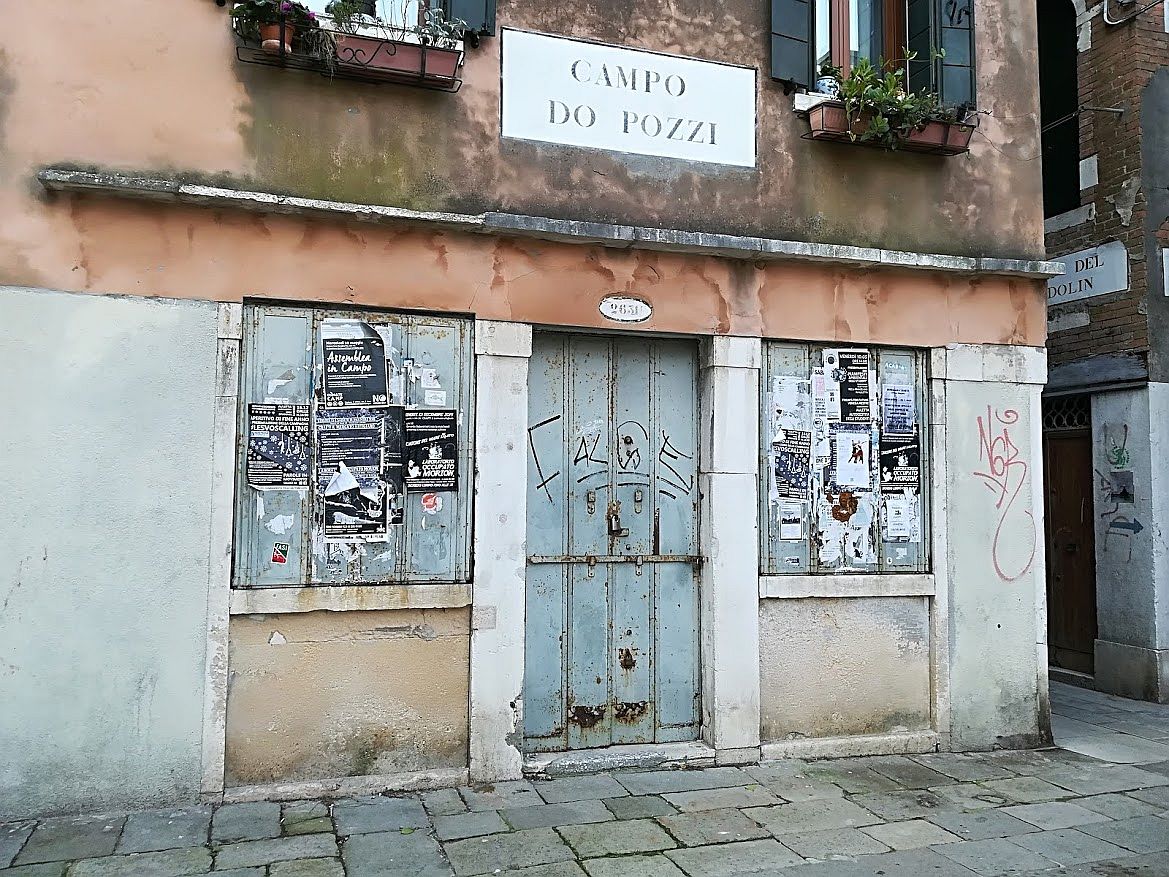
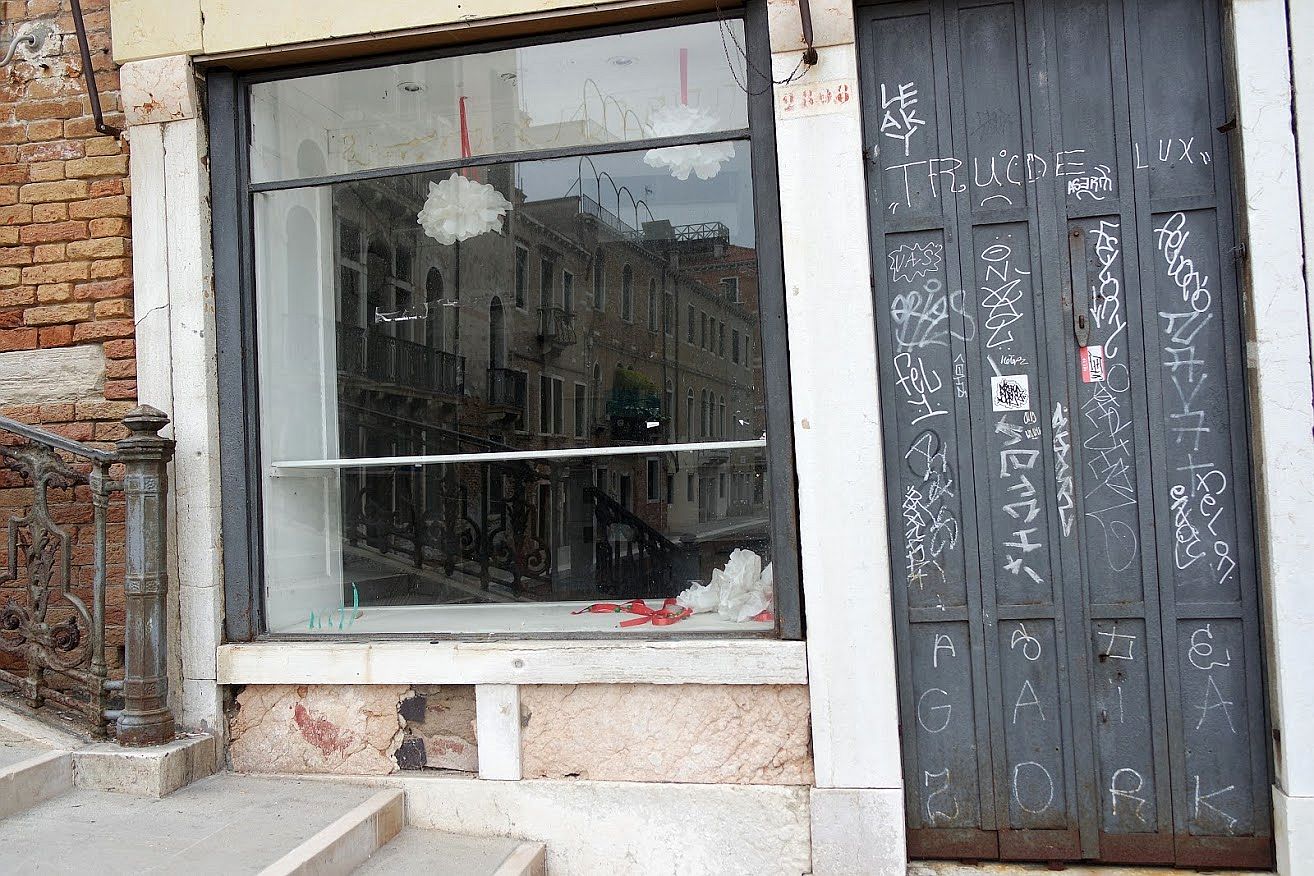
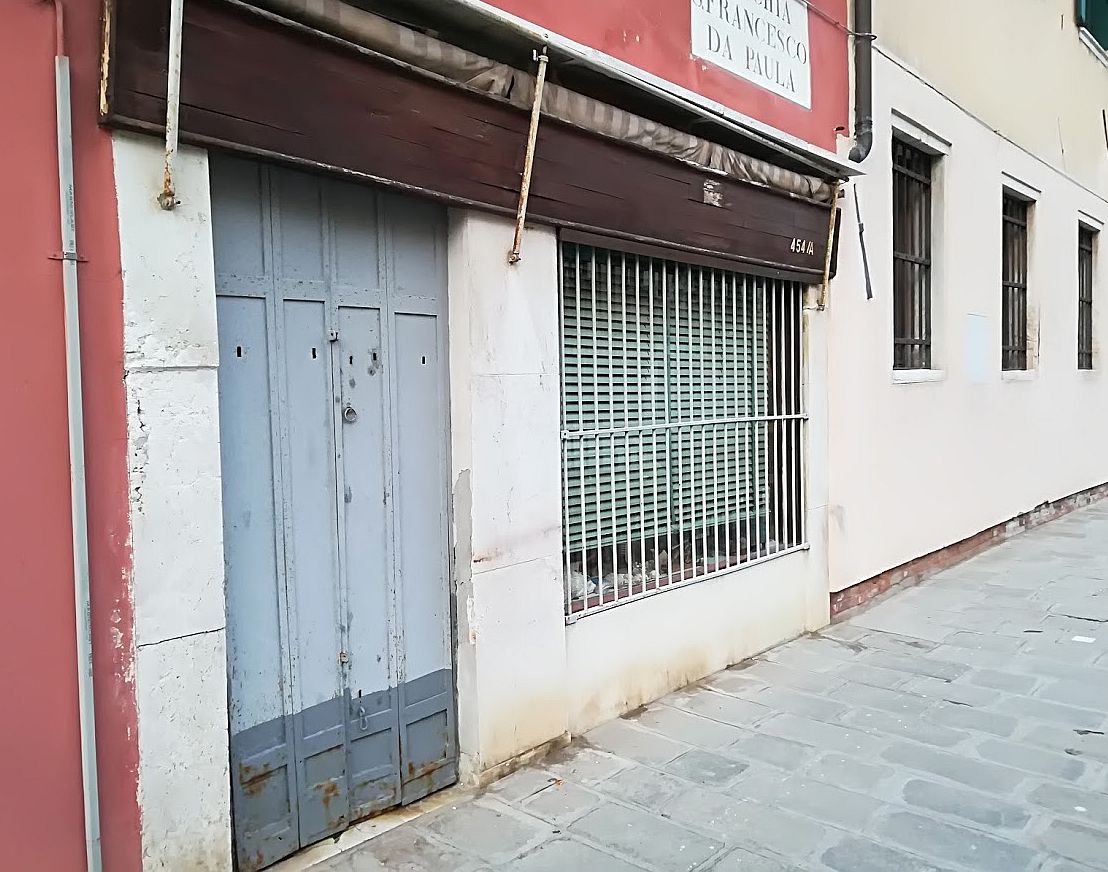
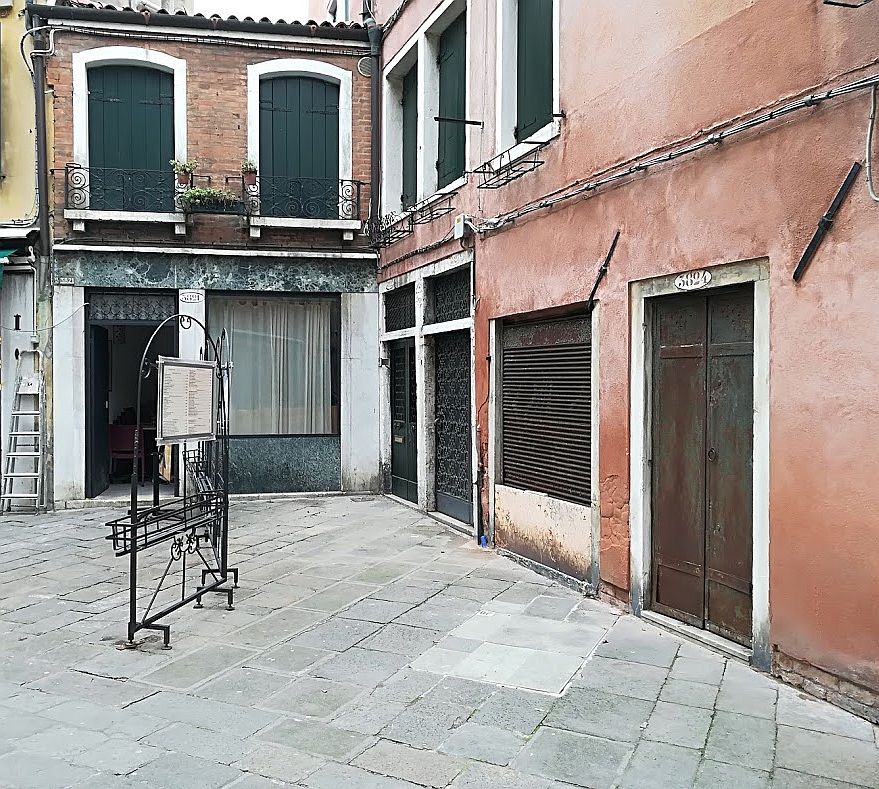
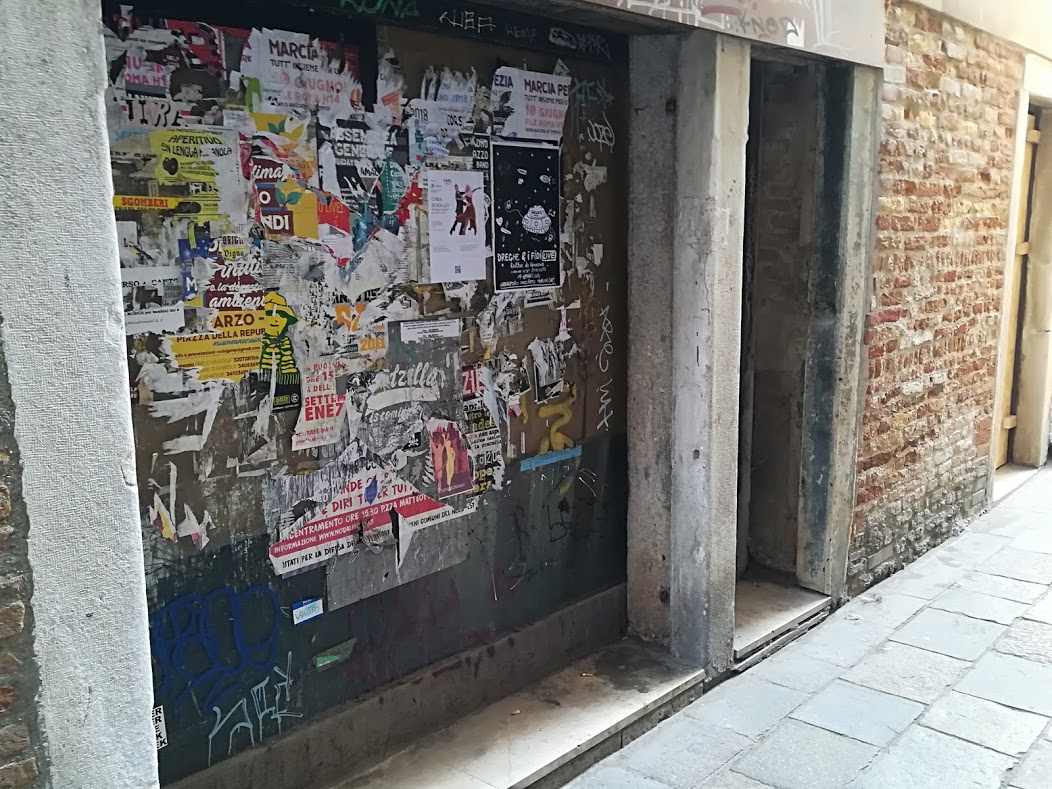
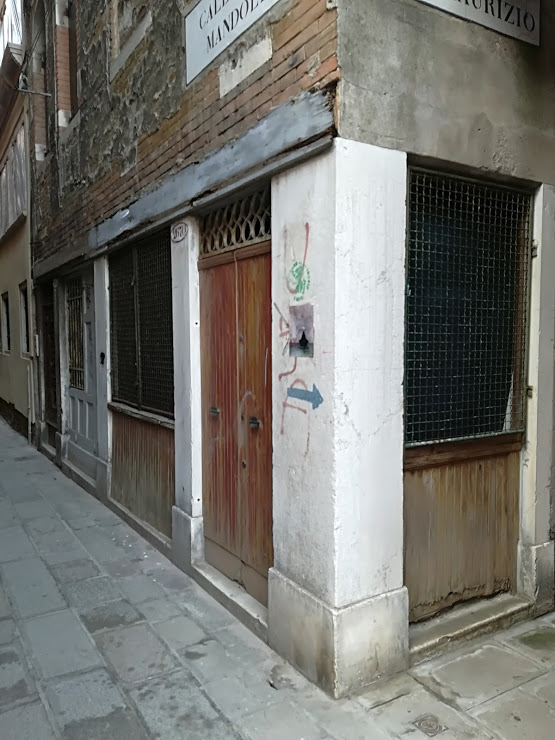

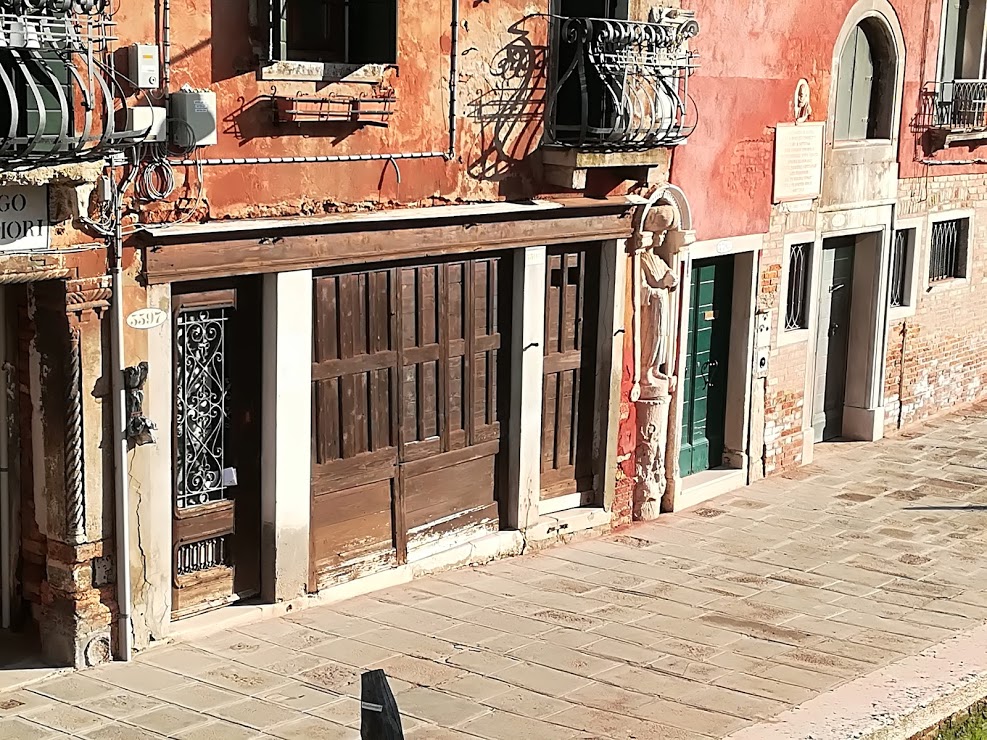
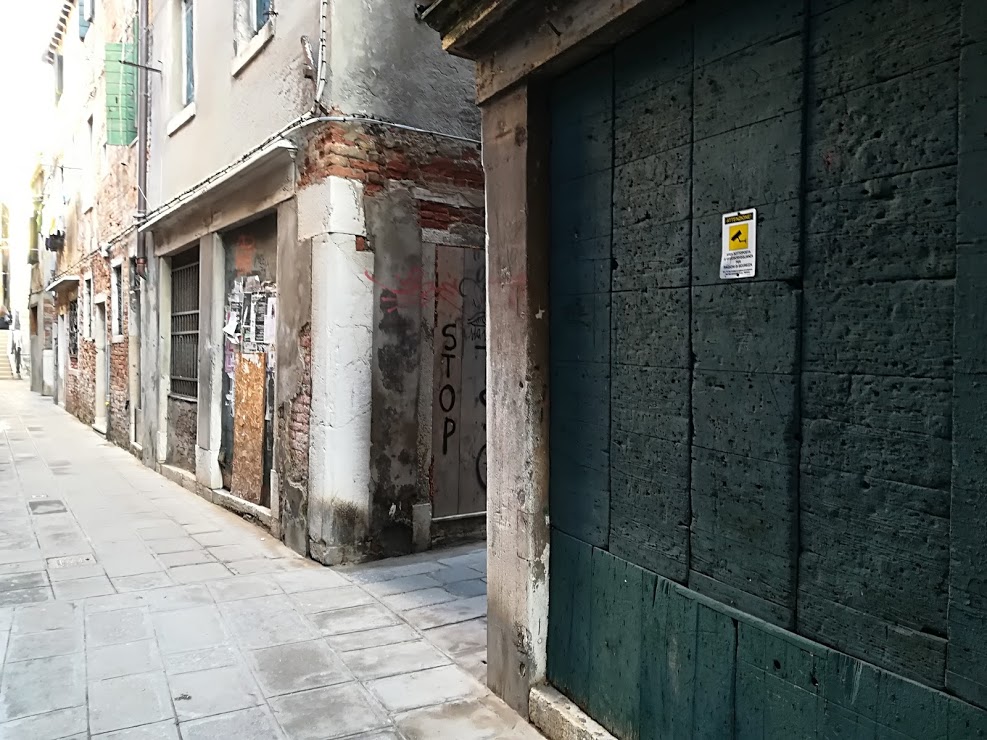

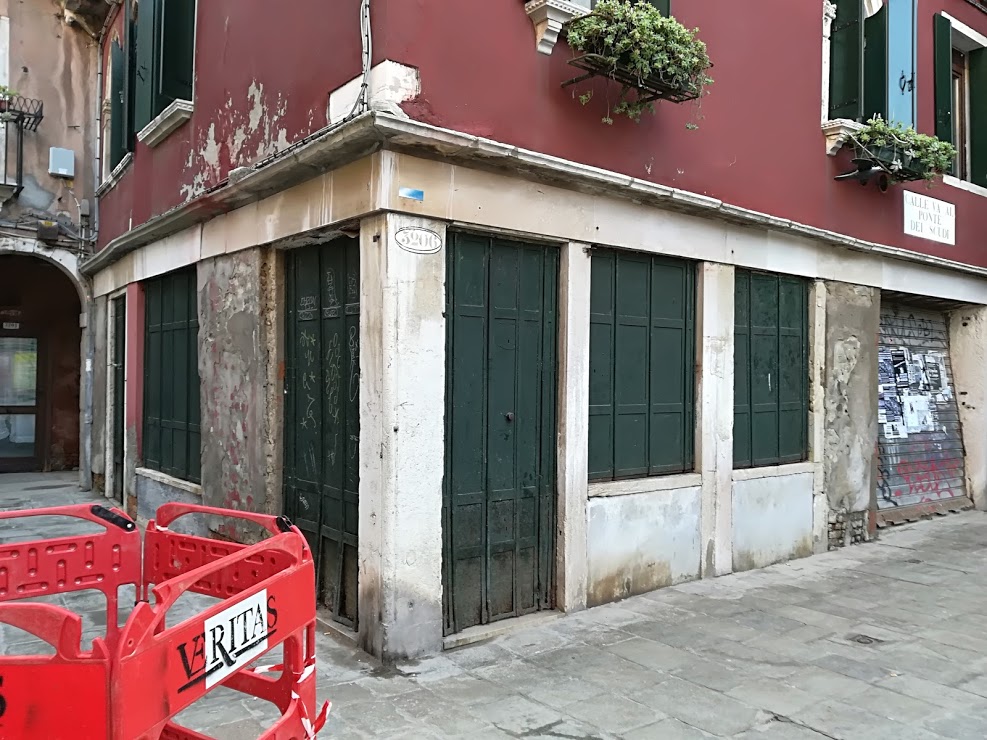

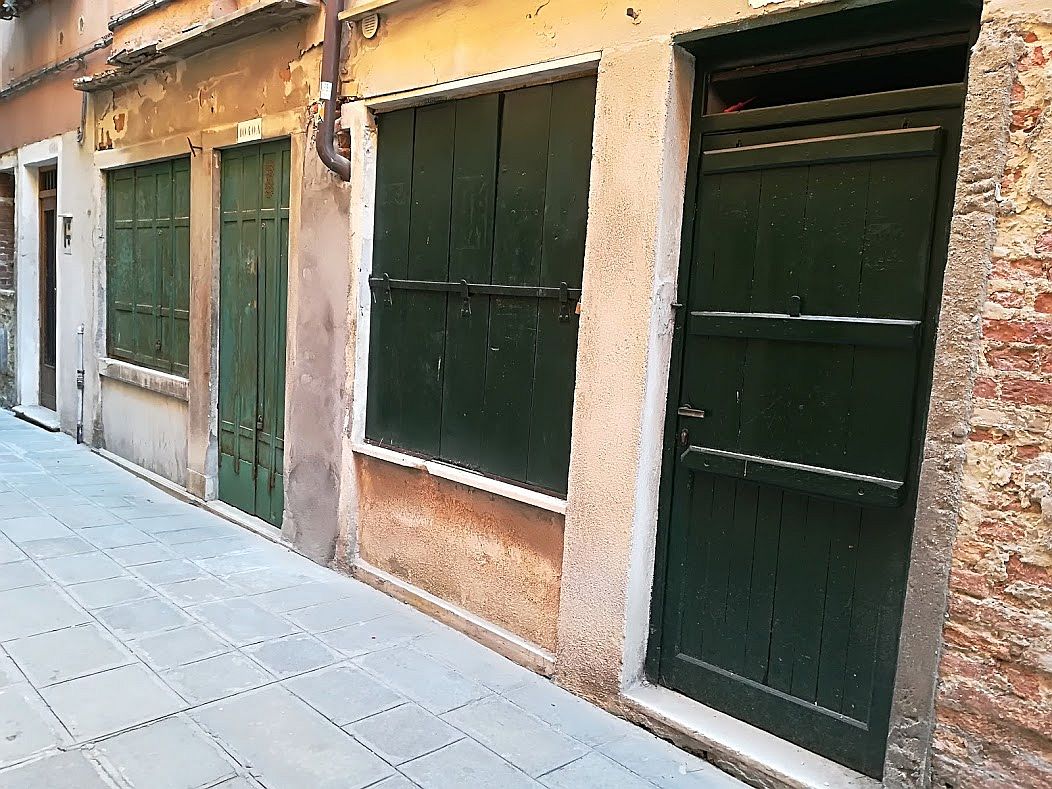
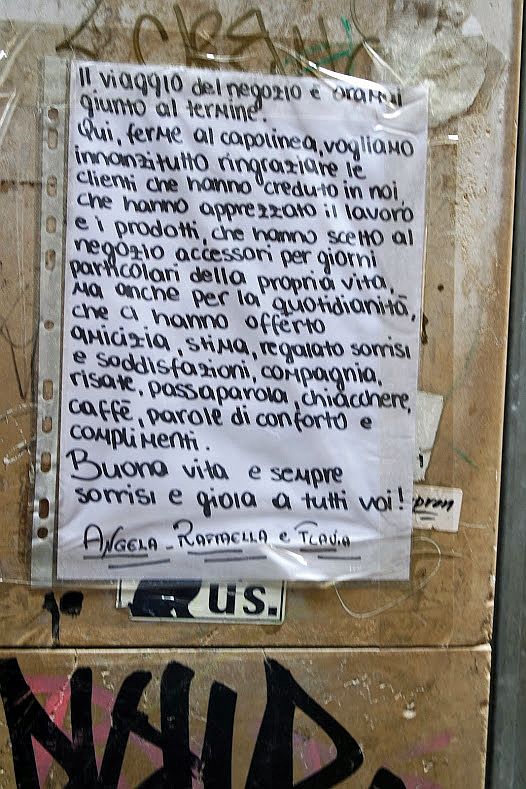
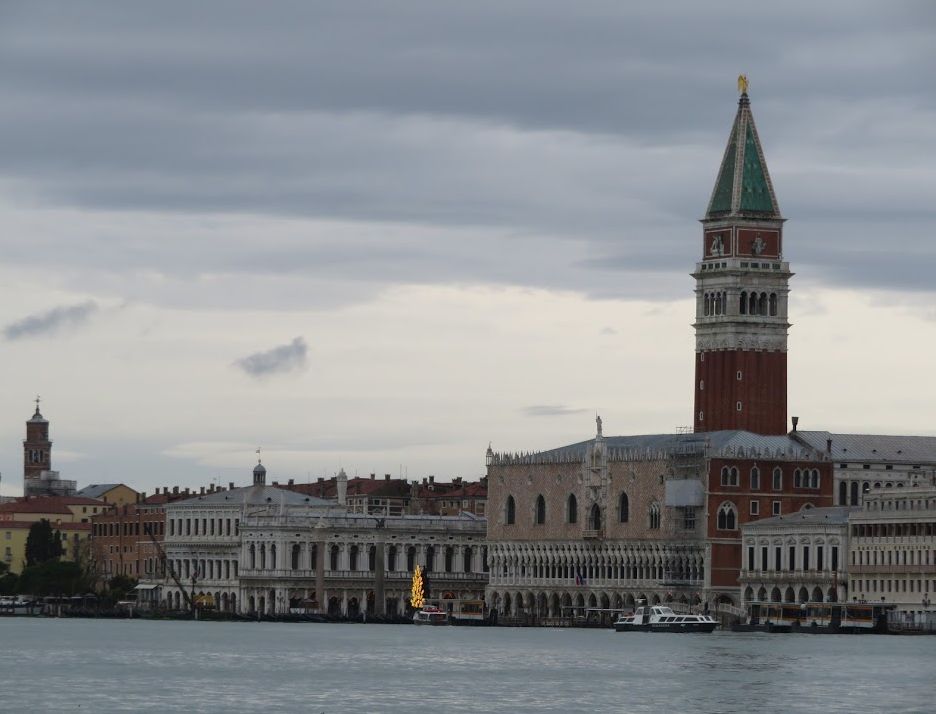
You might wonder how a Christmas tree could possibly make people mad (though considering the year almost past, you might not). Whatever your Yuletide habits, a lot of Venetians would have welcomed a honking big Norway spruce to its traditional place in the Piazzetta, some looming aromatic conifer loaded with scintillating lights, sumptuous ribbons, glittering glass baubles, etc. It would have been greeted with open arms, many smartphones, and shining faces.
But because we haven’t had enough computer screens in our lives this year, now we have the Christmas Screen.
It’s art, naturally, art that, from afar, sort of resembles a tree, though this structure isn’t even alive. But it does have the consolation of being, as I mentioned, art, groaning beneath loads of symbolism and verbiage.
Installed in the usual position last Thursday, this structure is the creation of artist Fabrizio Plessi, sponsored by the Assicurazioni Generali. No way of my knowing who had the final, or even the first, word in the discussions that led to this creation. It can’t be to attract tourists, because at this point in the evolution of the pandemic it would be easier to attract a Great Auk than a tourist.
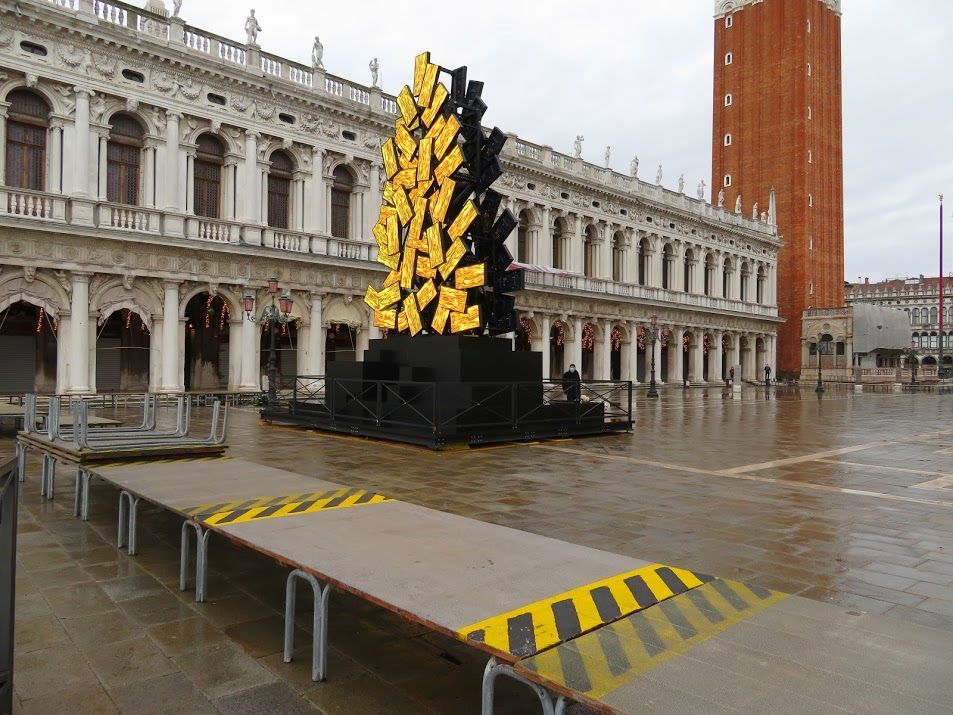
The public has not been amused by a novelty that appears to be more like a refugee from the Biennale than a festive fixture.
The artist explains: “It’s a message of hope.”
The public responds: “A heap of scrap metal.” “Hanging ingots.”
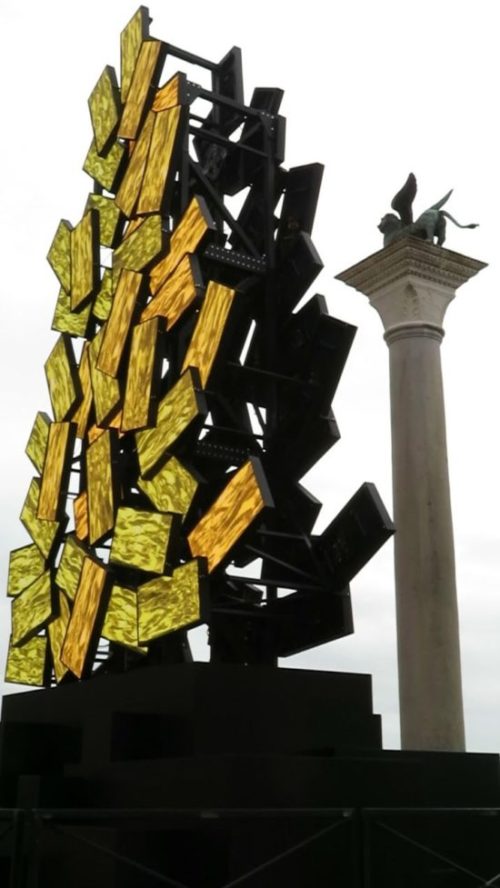

“This year we need a message of light,” Sig. Plessi told La Nuova Venezia. “The 80 modules represent the flow of that many different cultures.” Furthermore, it would seem that the installation symbolically unites earth, water and sky.
“I understand whoever would have preferred a traditional tree,” Plessi continues, “but this is a message of hope. The use of digital in this context becomes spiritual emotion and expresses itself in the only possible language today, permitting us to reach others even if they are physically distant.”
Not sure about you, but while this is the sort of hot air that keeps the Biennale aloft for months on end, it doesn’t do anything for the spirit of Christmas. My own view is that the more you explain something, the less that something actually communicates. If you have to tell people what to think or feel about your creation, you’ve acknowledged that the creation is mute.
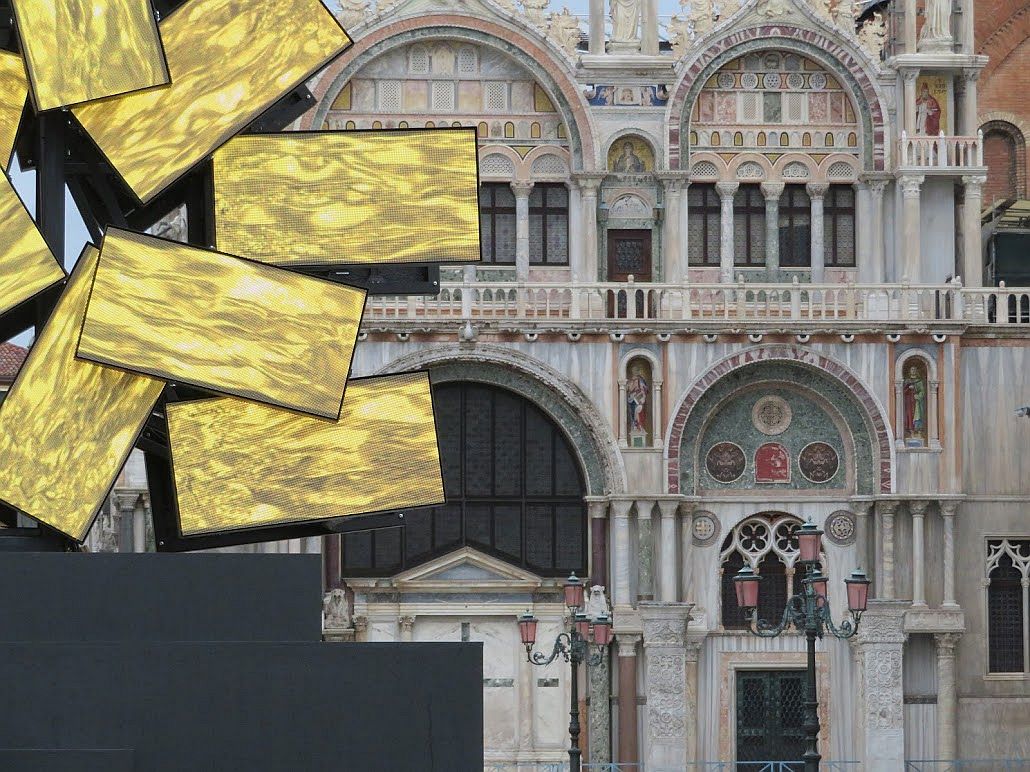
There is more. “This tree is well planted in tradition, but it is also a tree that wants to talk to the world,” says Simone Venturini, the city councilor for Tourism. “Personally I find it marvelous because it shows that Venice knows how to be, together, the city of great history and of the future. It shows that you can make contemporary art without waiting for the Biennale.” Of course you can, as long as you have a sponsor. I don’t want to put a pricetag on Christmas, but this installation, along with 50 kilometers of strings of lights in the Piazza San Marco and on the mainland, not to mention the lights shining on the Rialto bridge, cost a total of some 800,000 euros. So he could also have said that you don’t need to wait for the Biennale in order to spend money. I knew that.
Many years ago a homeless man at the entrance to the subway in New York stopped me with this request: “Hey lady, could you spare some change for an old wino?” How could I say no? His candor was irresistible.
If Mr. Plessi had said, “I like to make art using digital stuff. I don’t know why, I just like it. Maybe because it’s shiny. So here’s sort of a tree made of digital stuff. Kind of made me think of Christmas. Hope yours is happy, in spite of everything,” I’d have started a Fabrizio Plessi fan club.
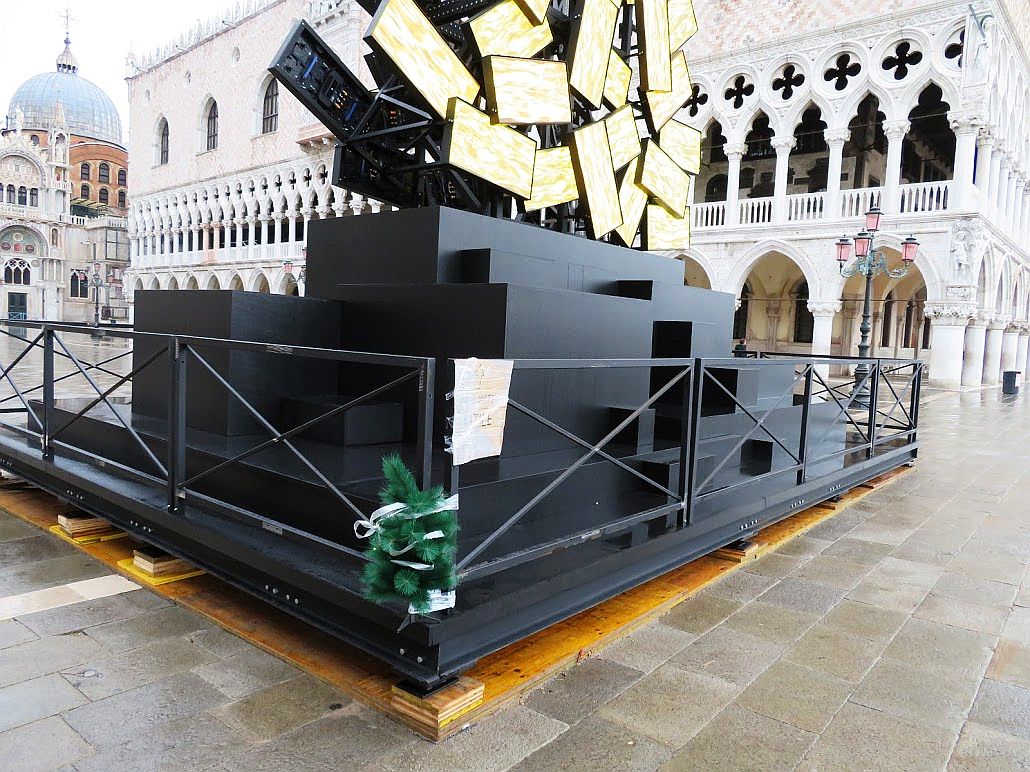
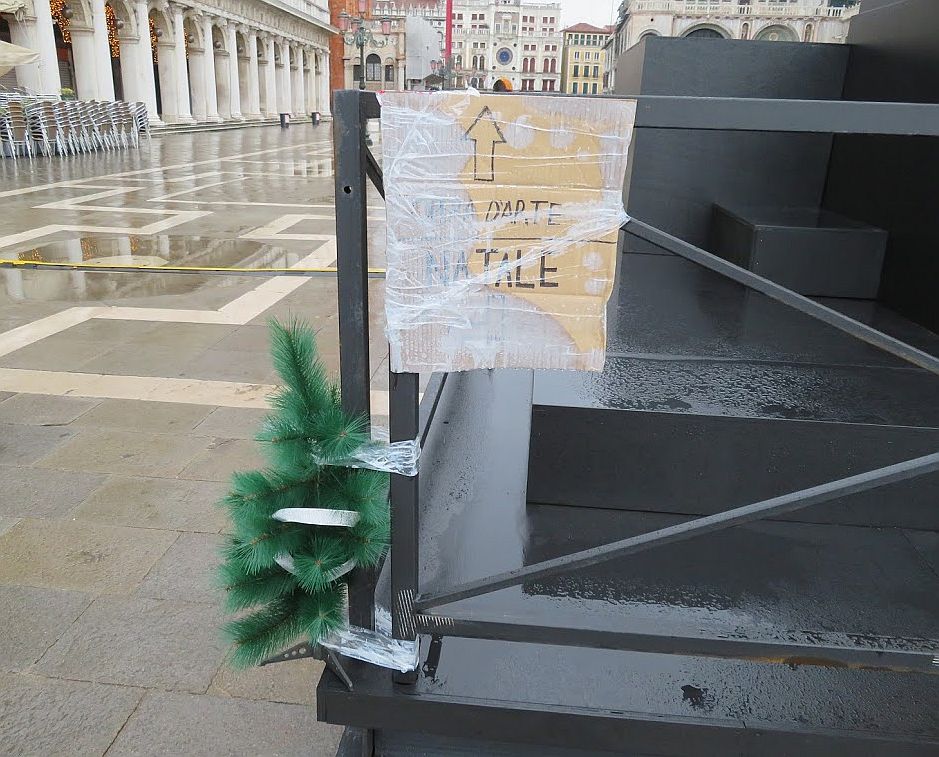
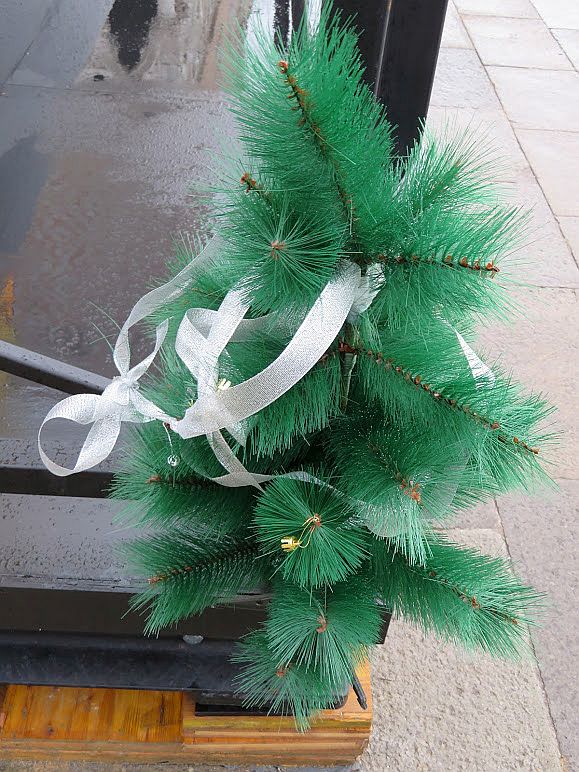
By the way, all this increased traffic will make it even more important to keep the aforementioned channel dredged. However, the deeper the channel, the faster the tide enters and exits, and already this action removes millions of cubic meters of sediment from the lagoon every year. Everyone knows that the Canale dei Petroli has thus caused incalculable damage to the lagoon and its extraordinary ecosystems. Ironic that UNESCO decided to designate part of the lagoon as a national monument with the notion of protecting it, but they seem not to have taken into account the effect so much extra traffic will have in a channel that essentially behaves as if it were a water vacuum sucking the soil from the lagoon.
FREE MARCO ZENNARO: